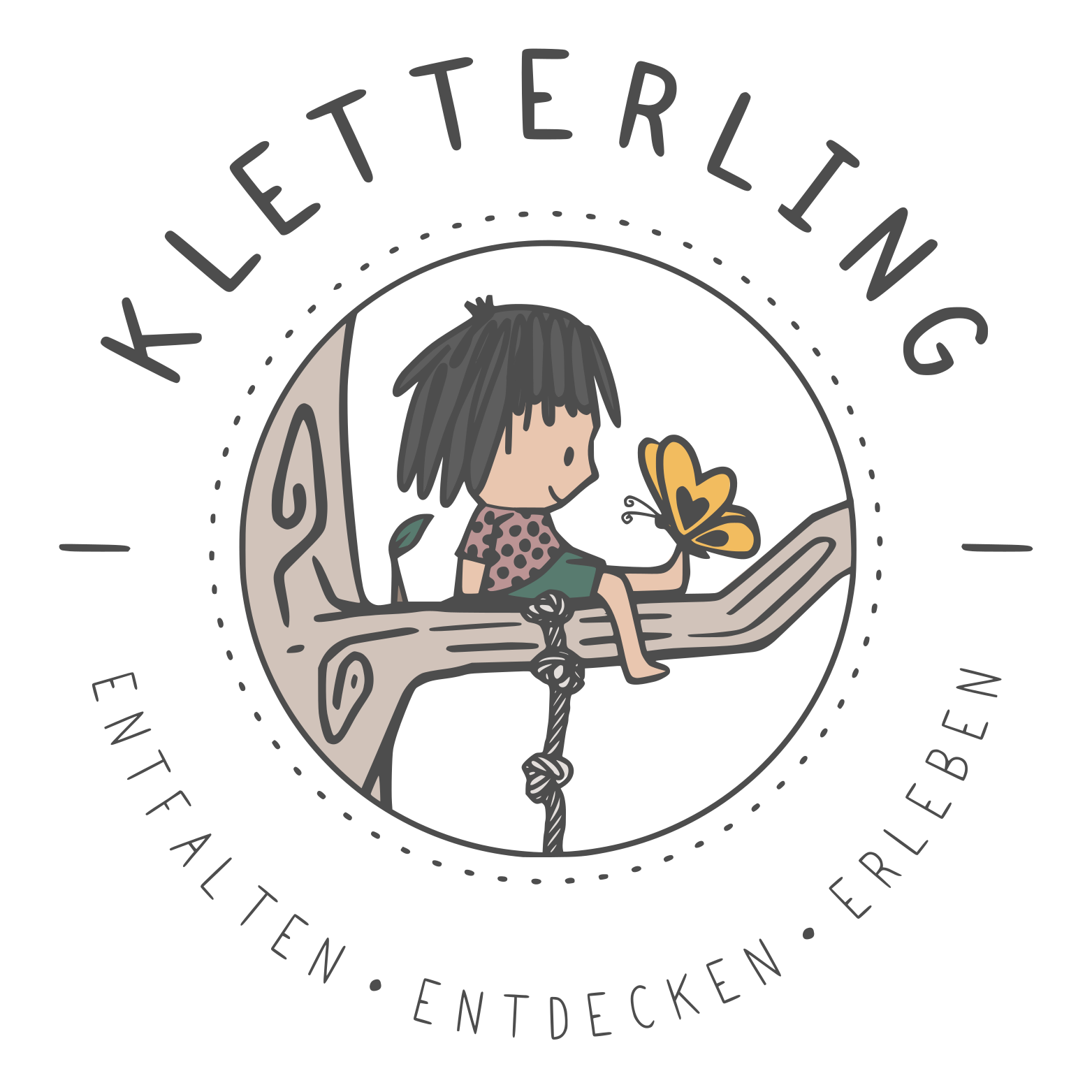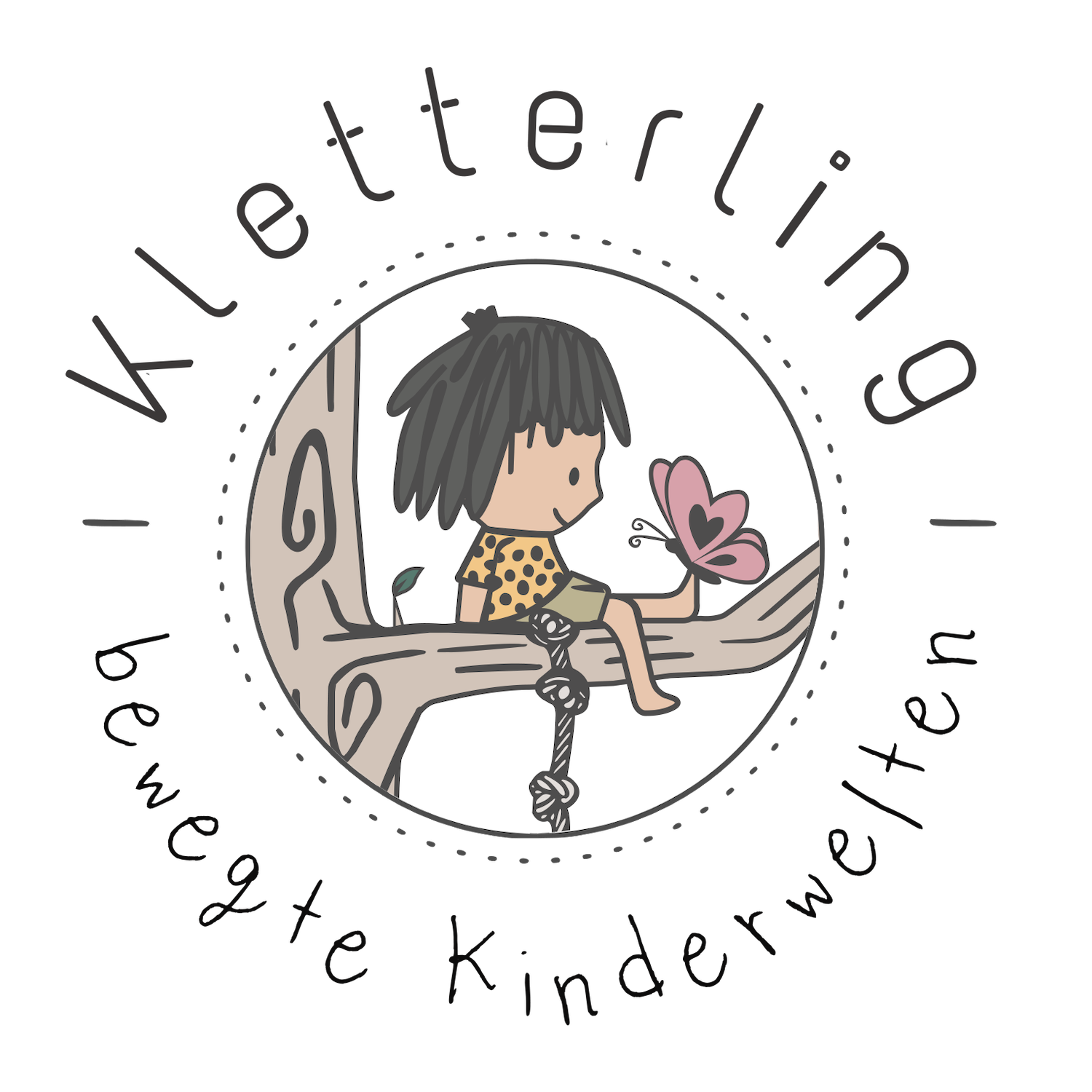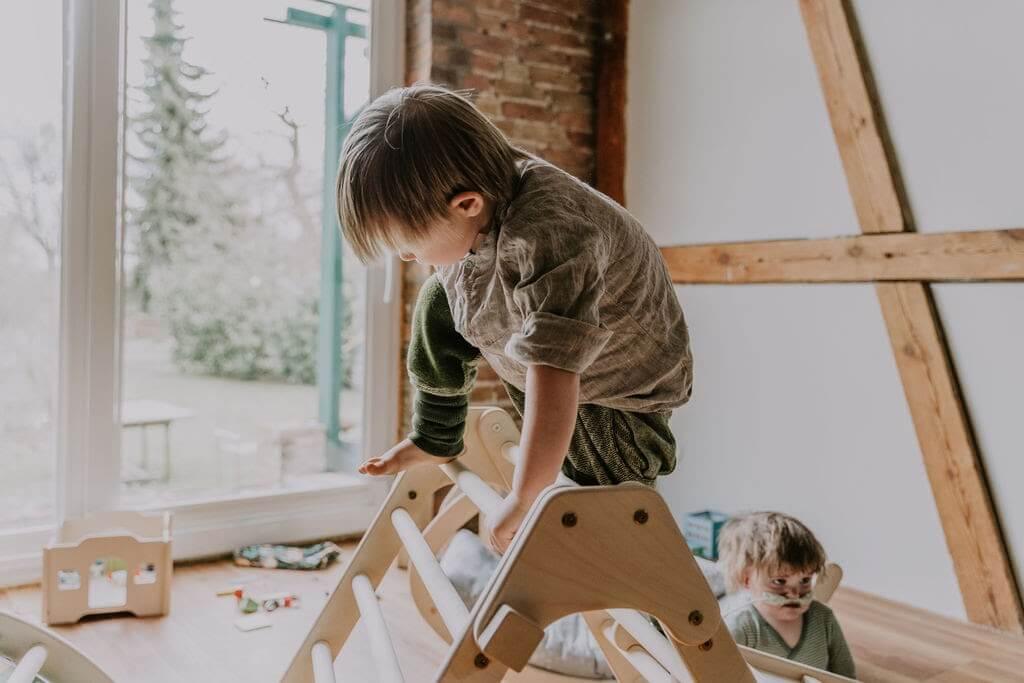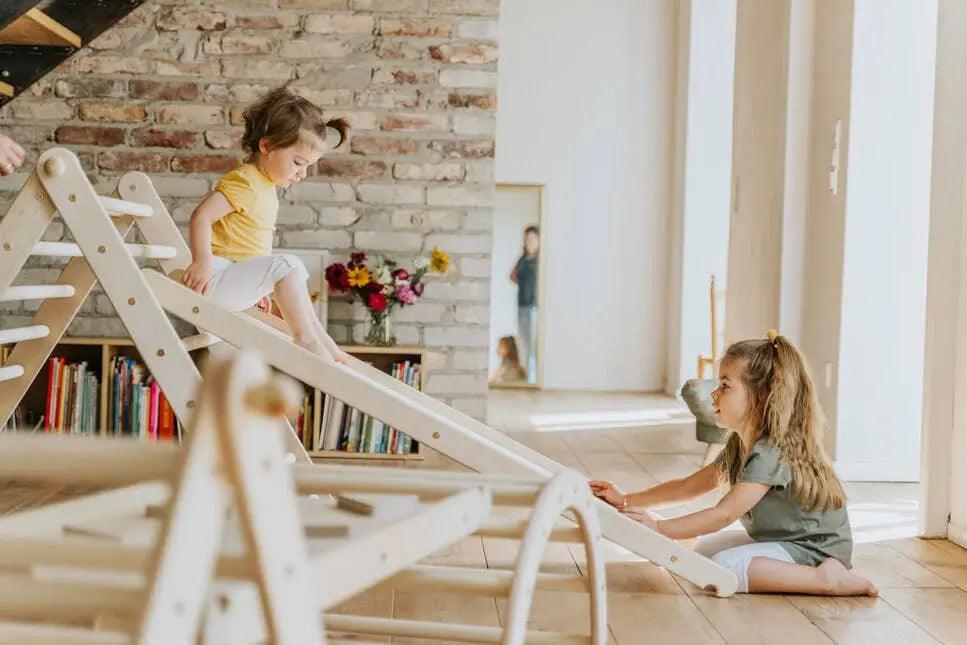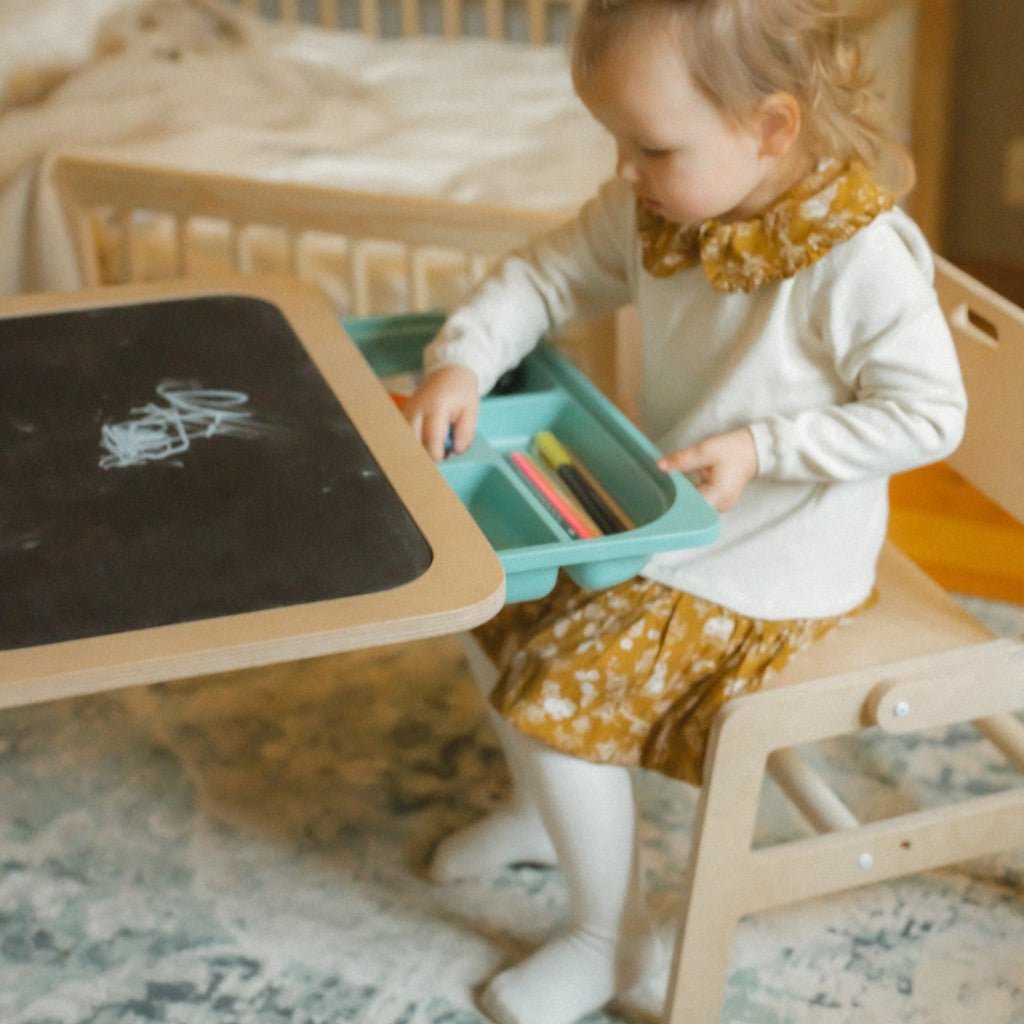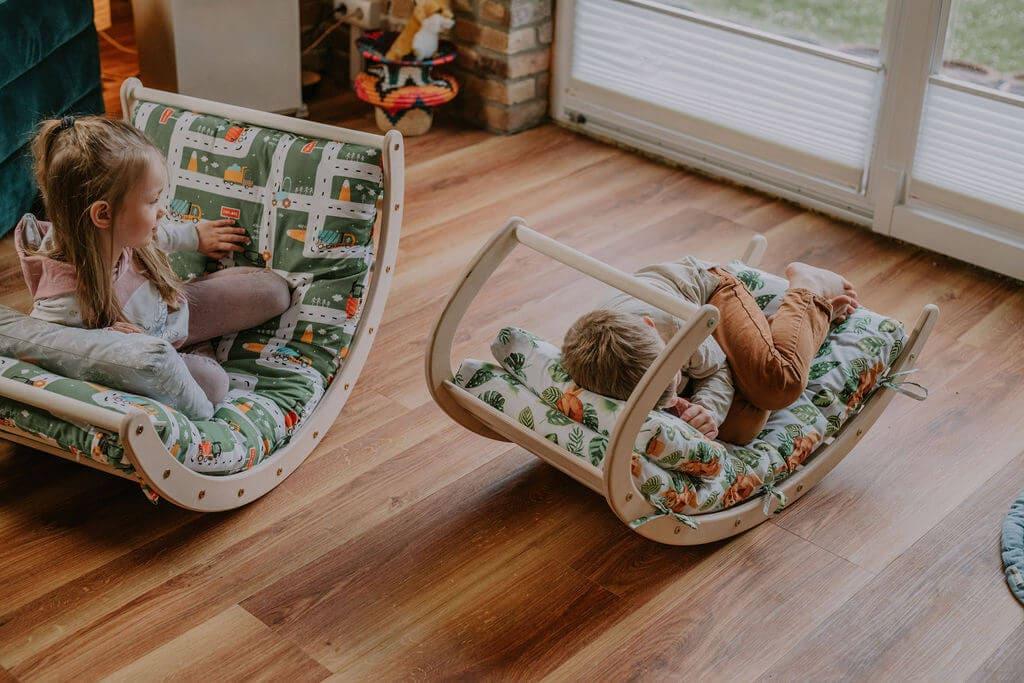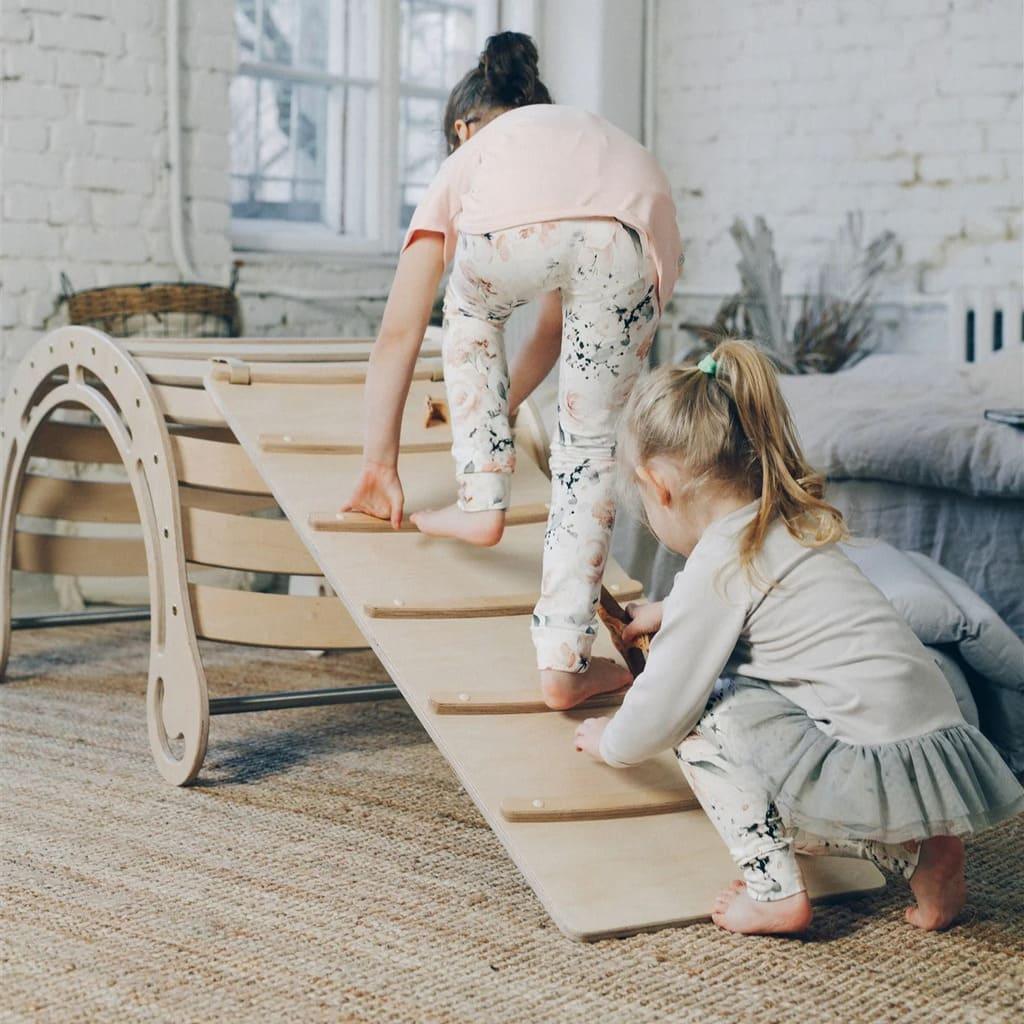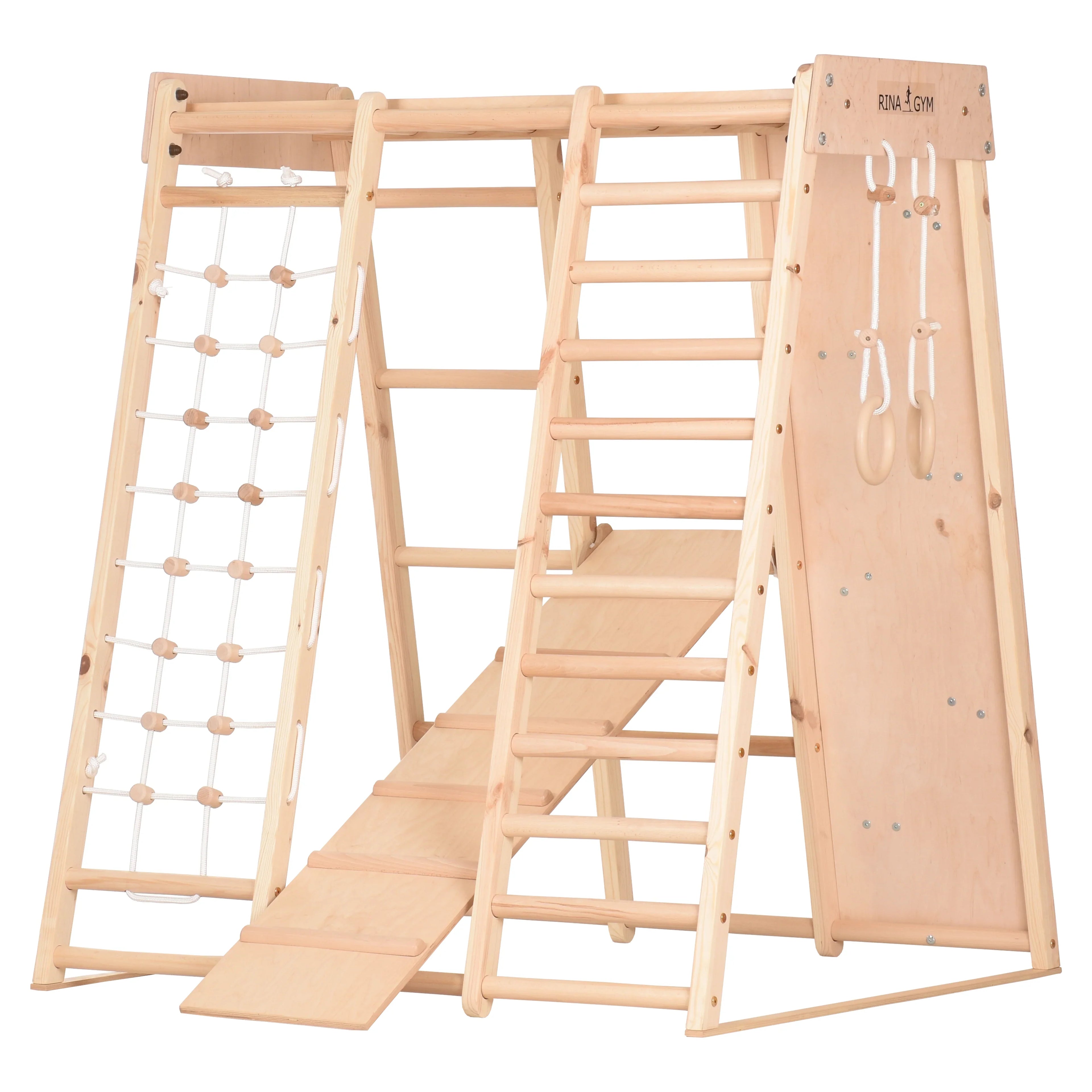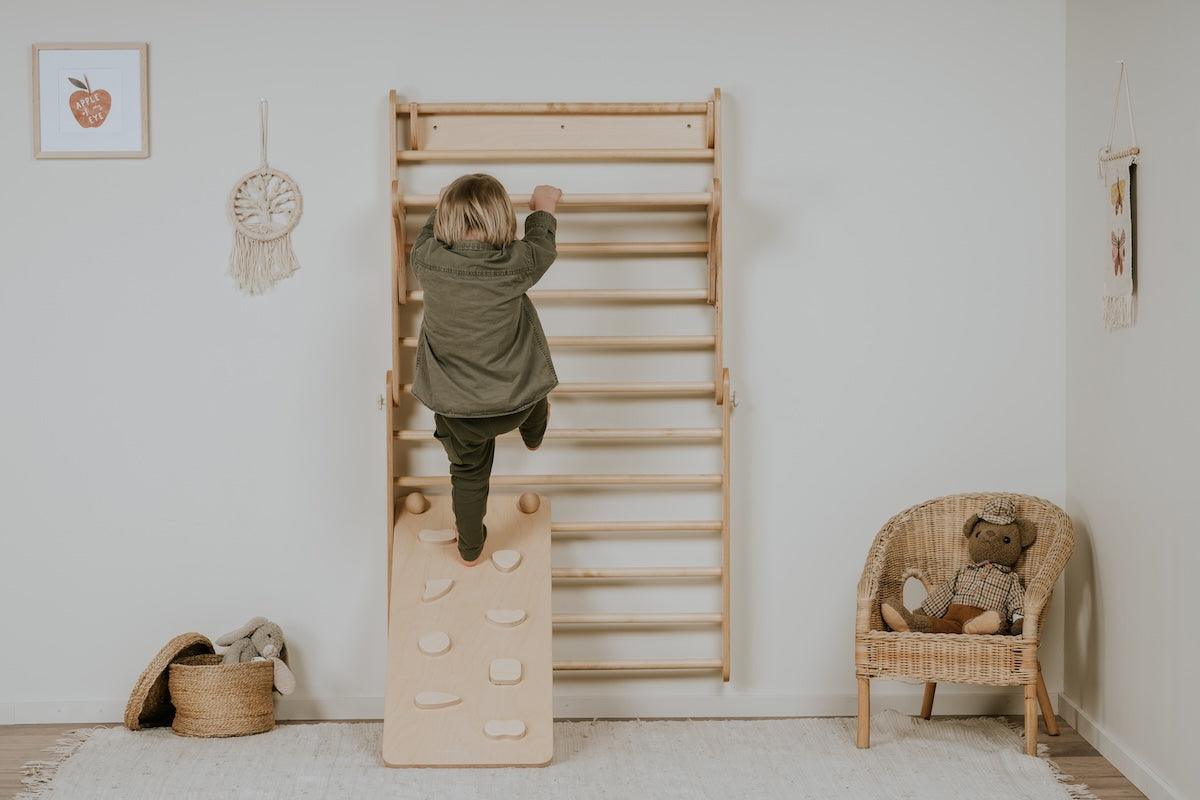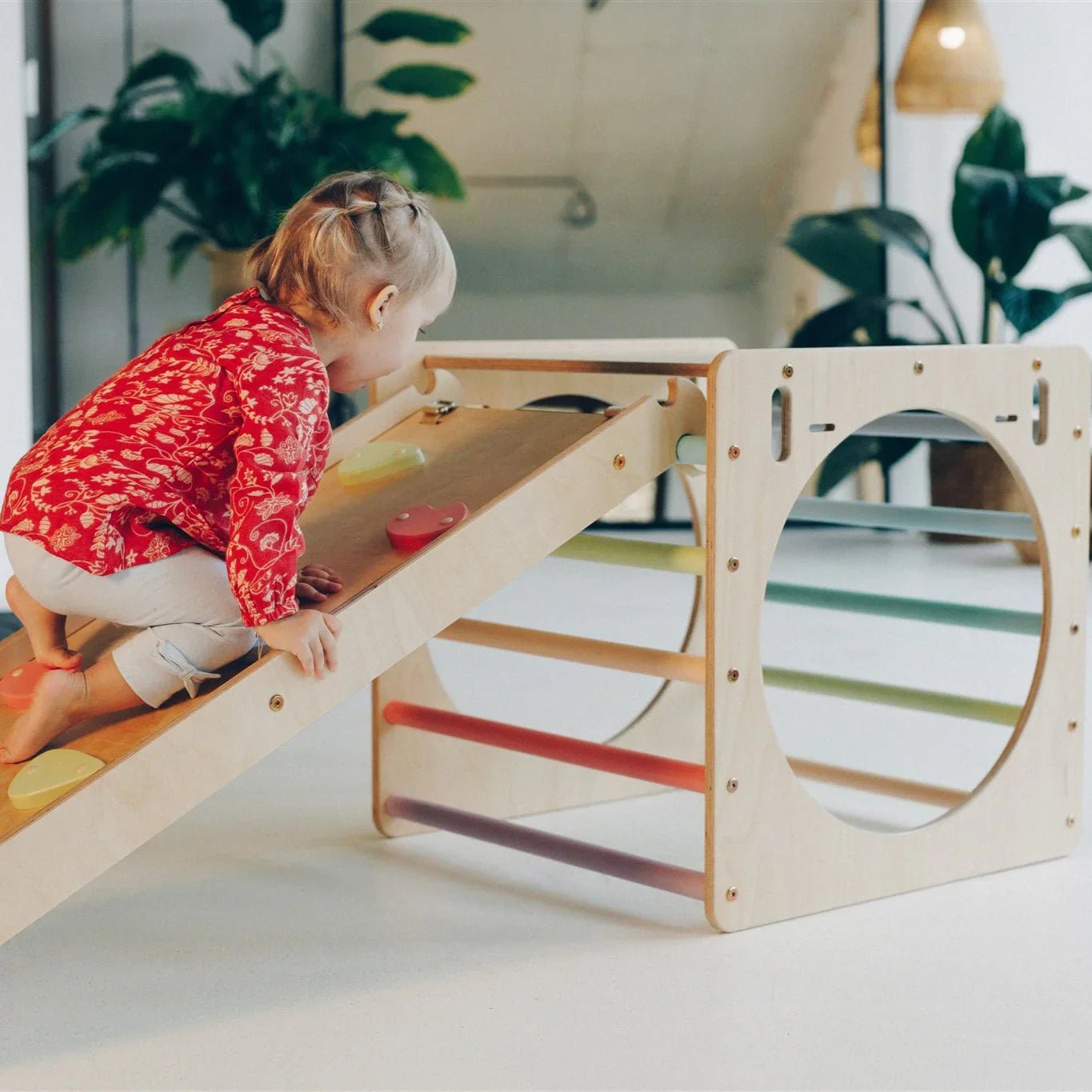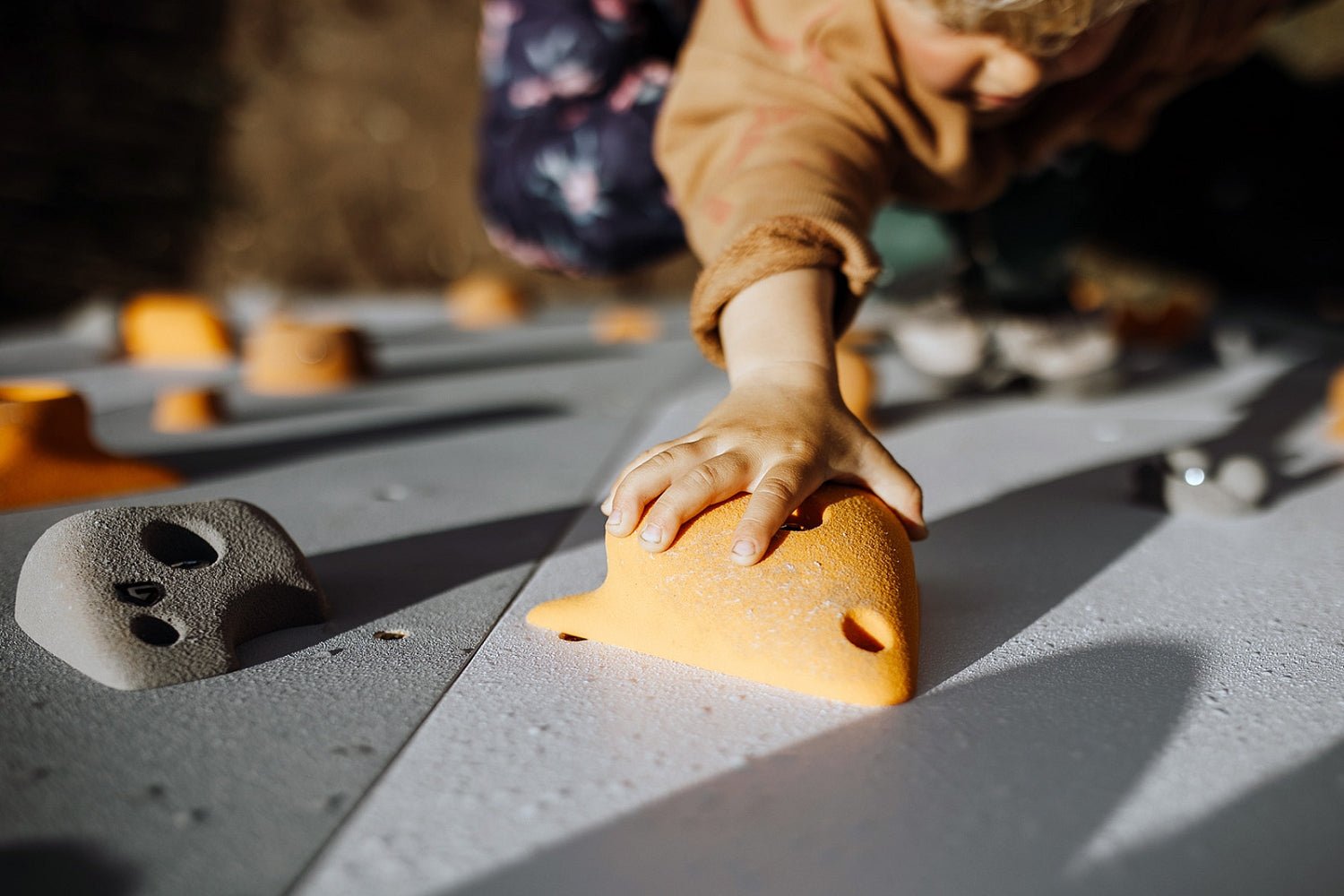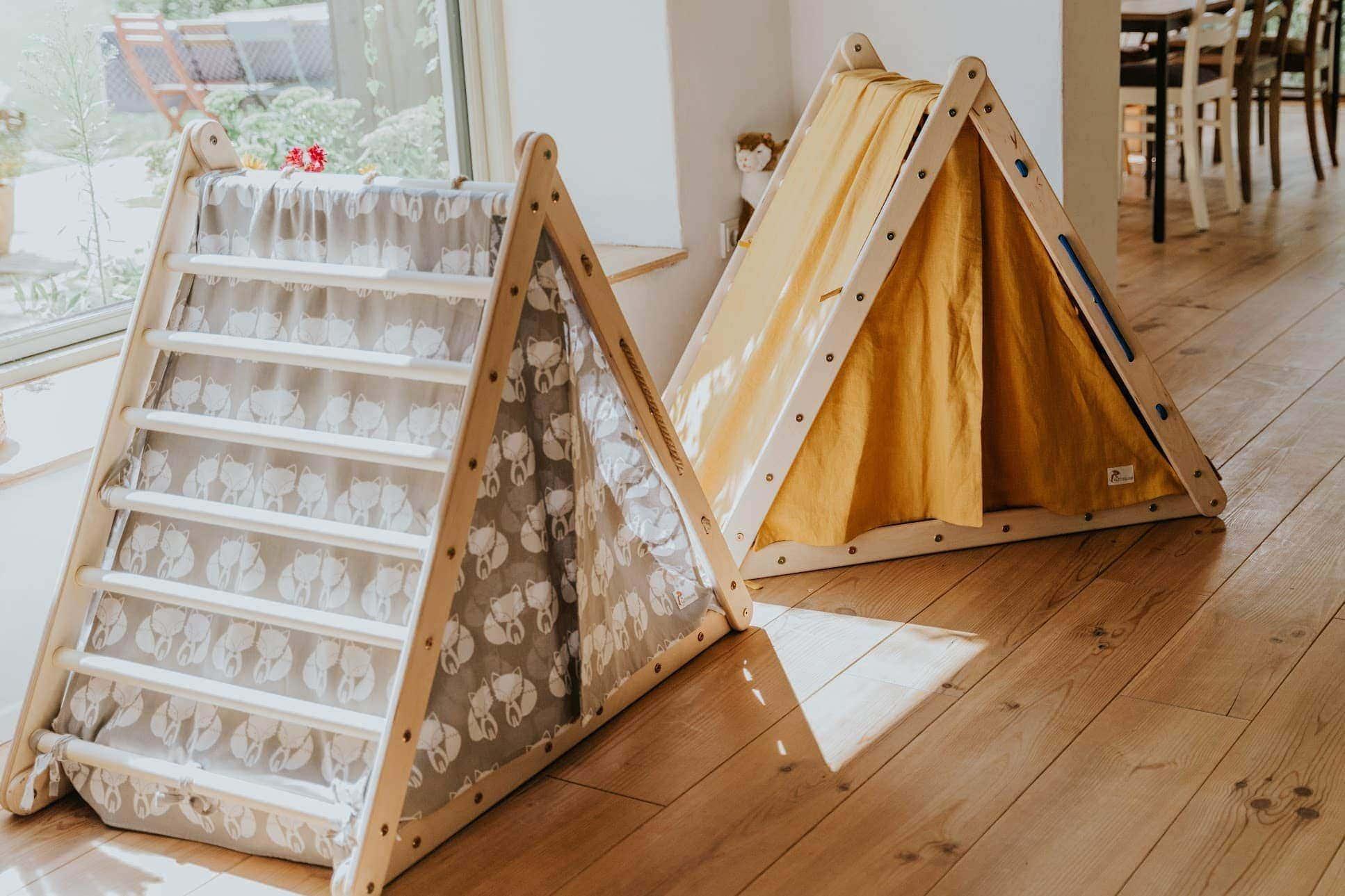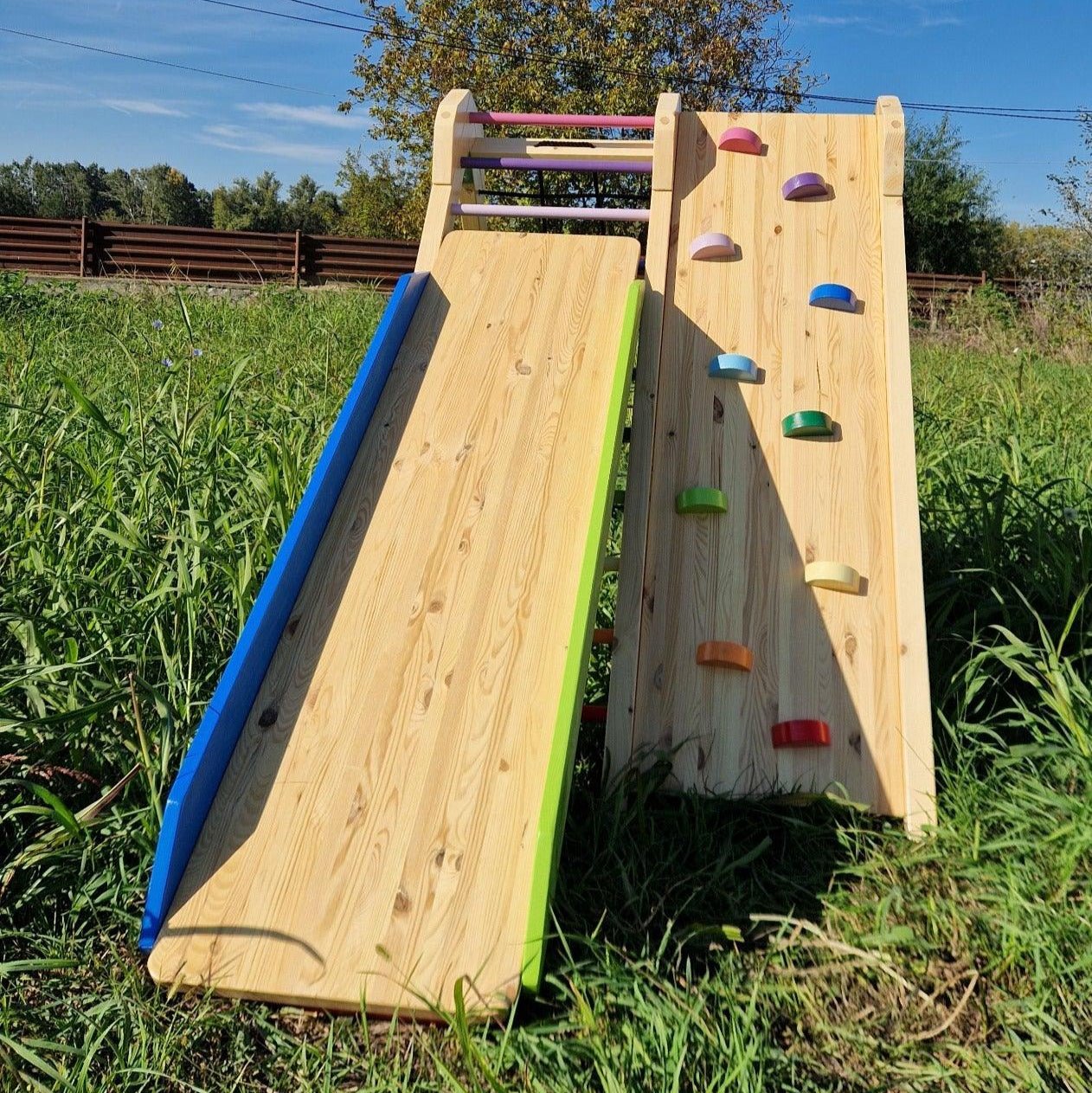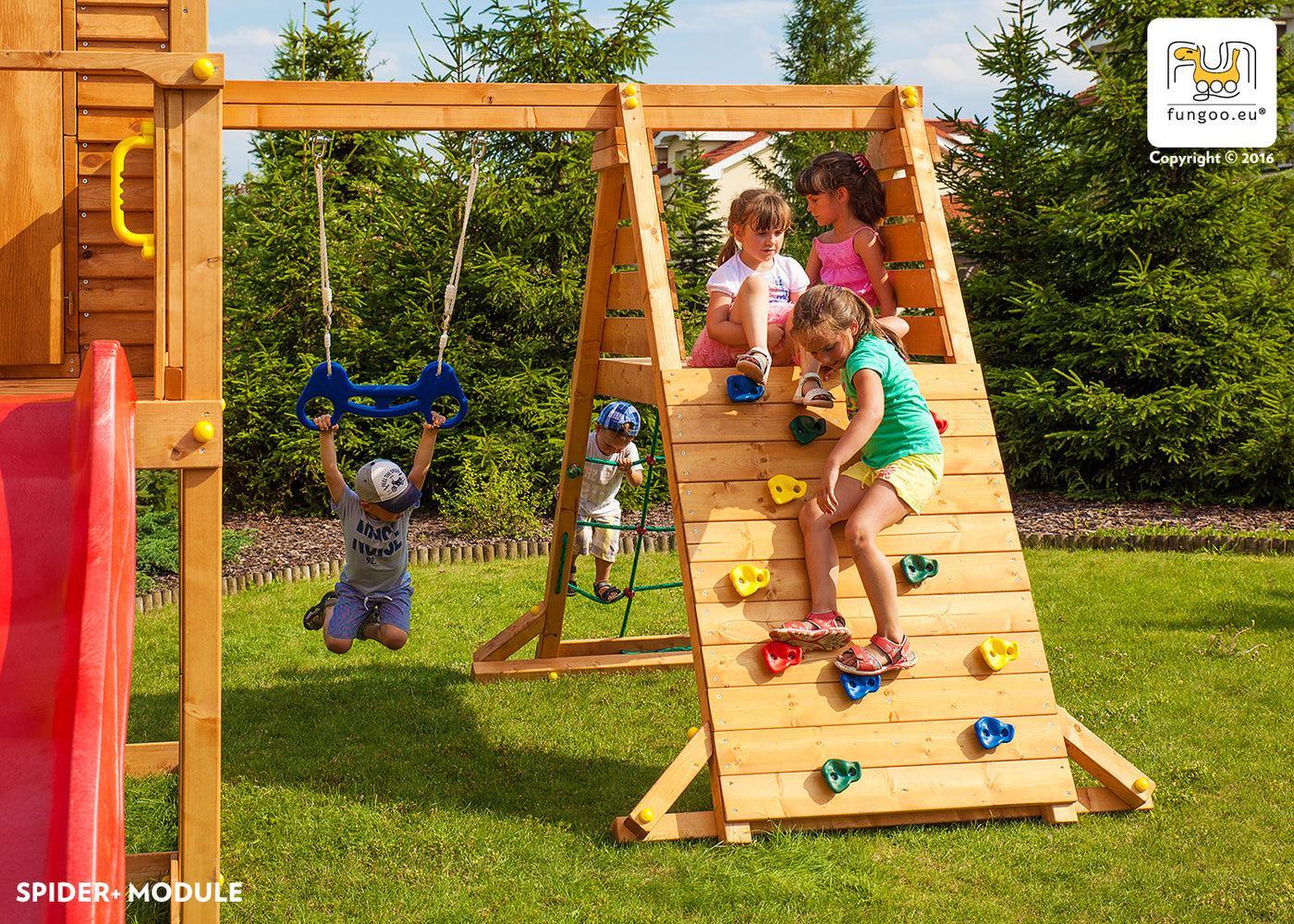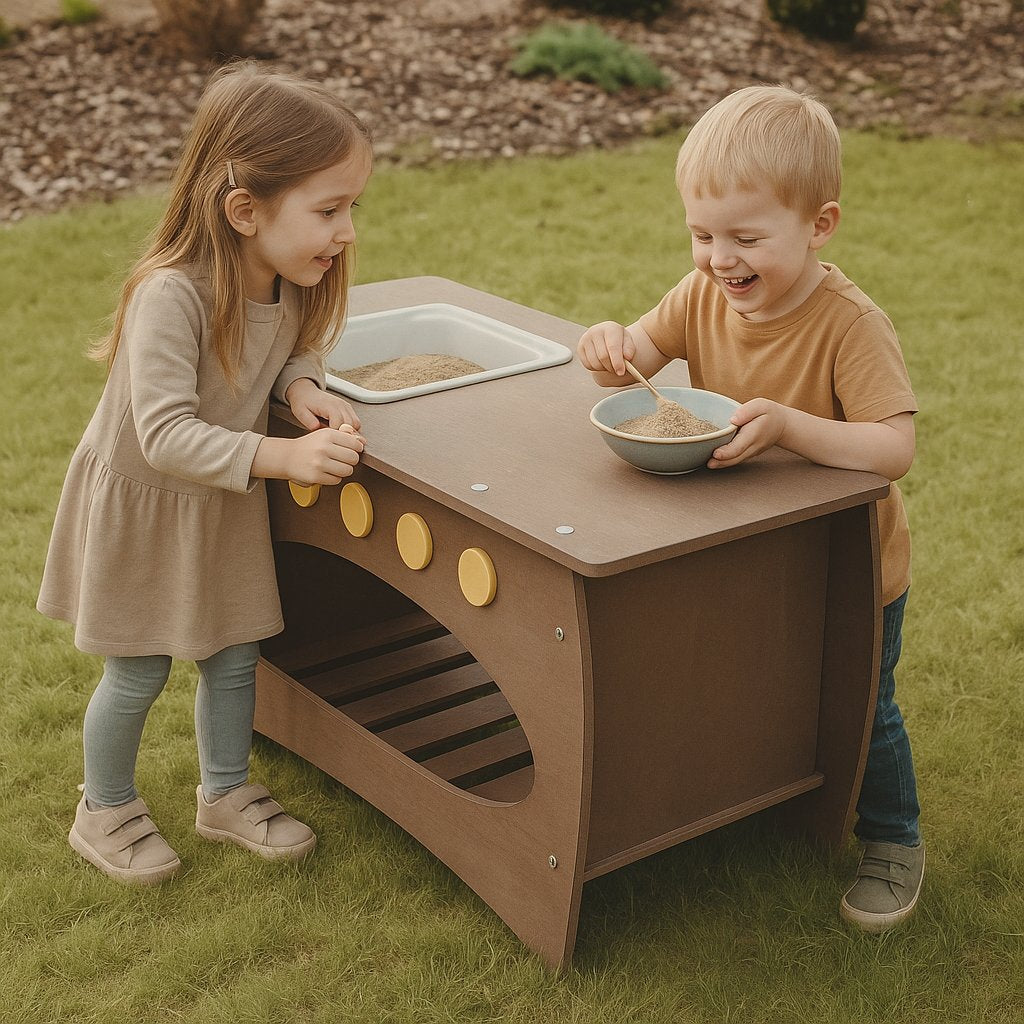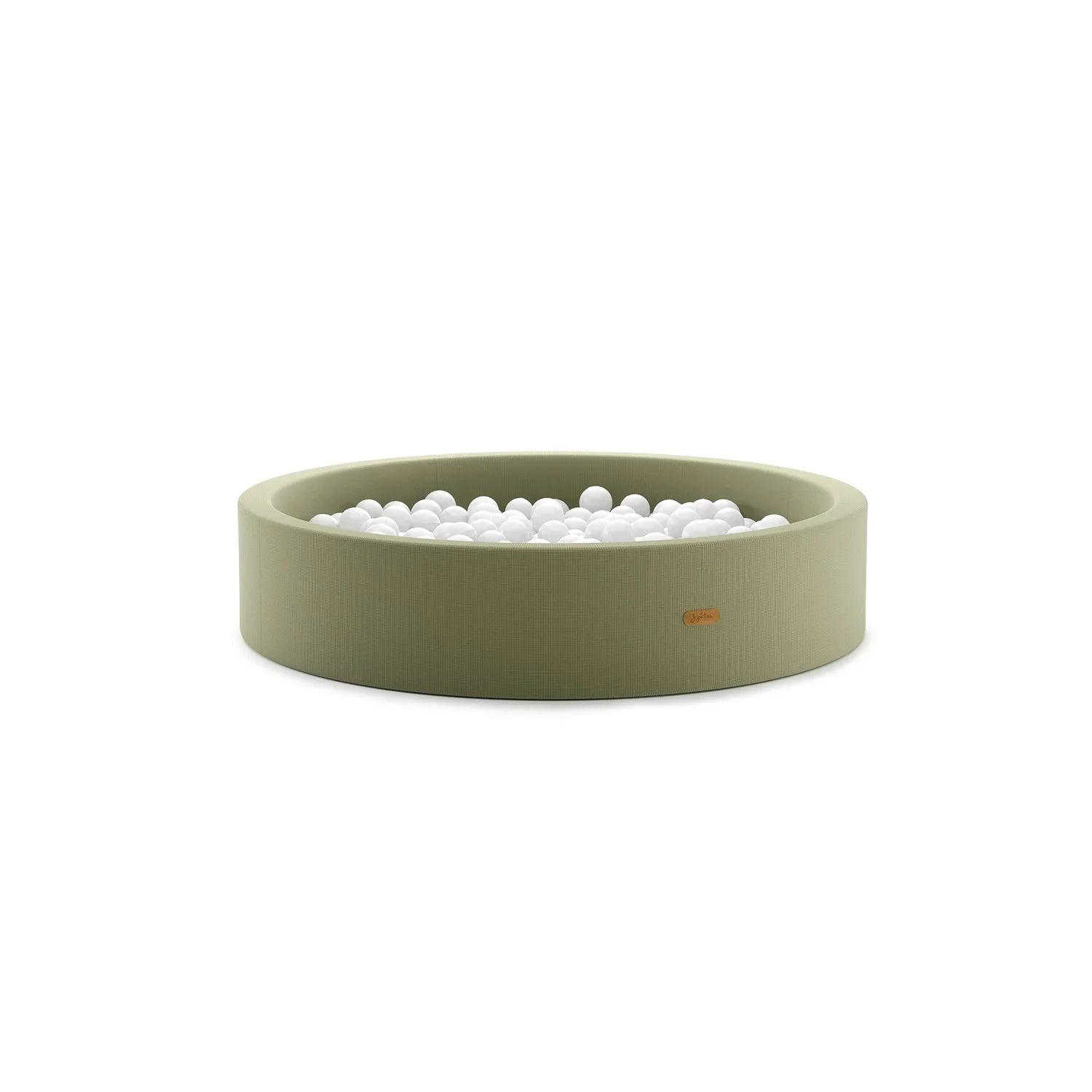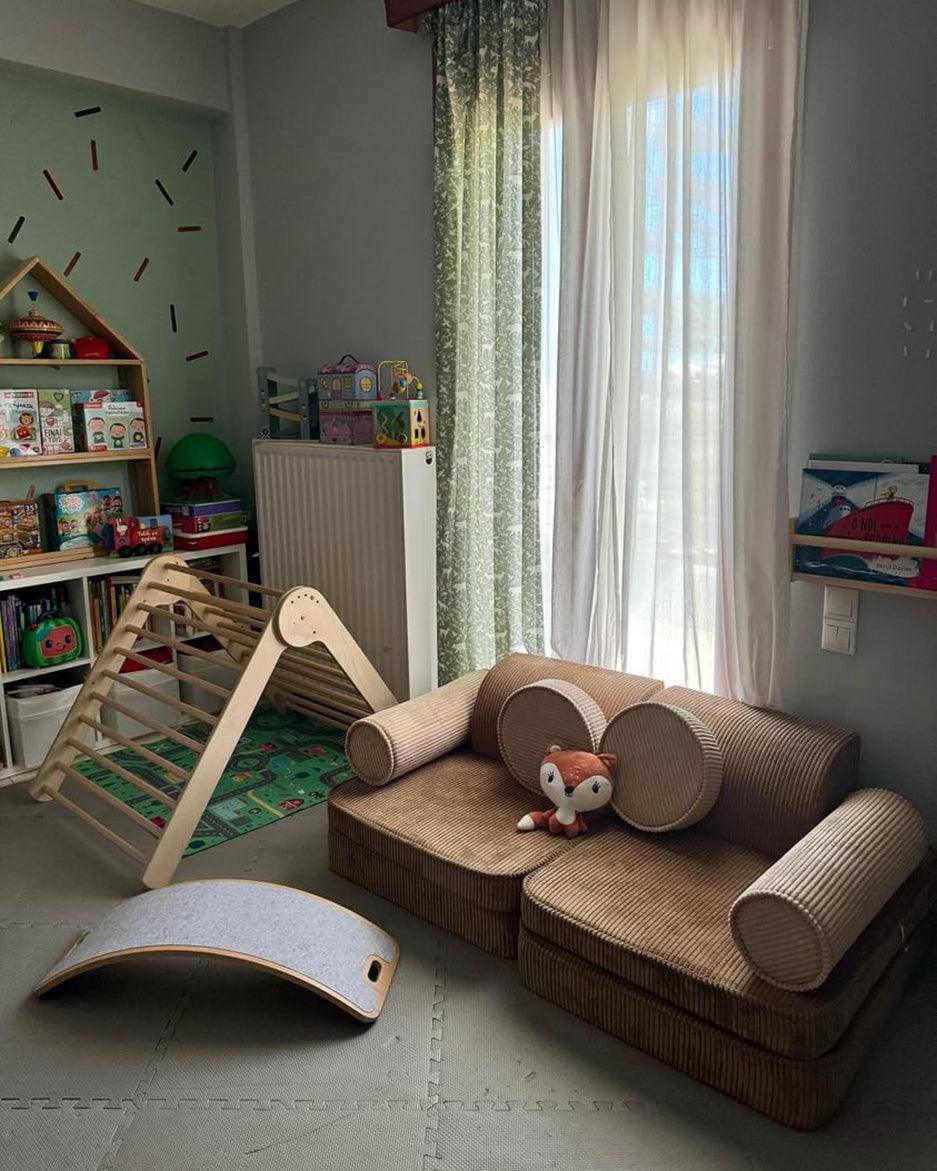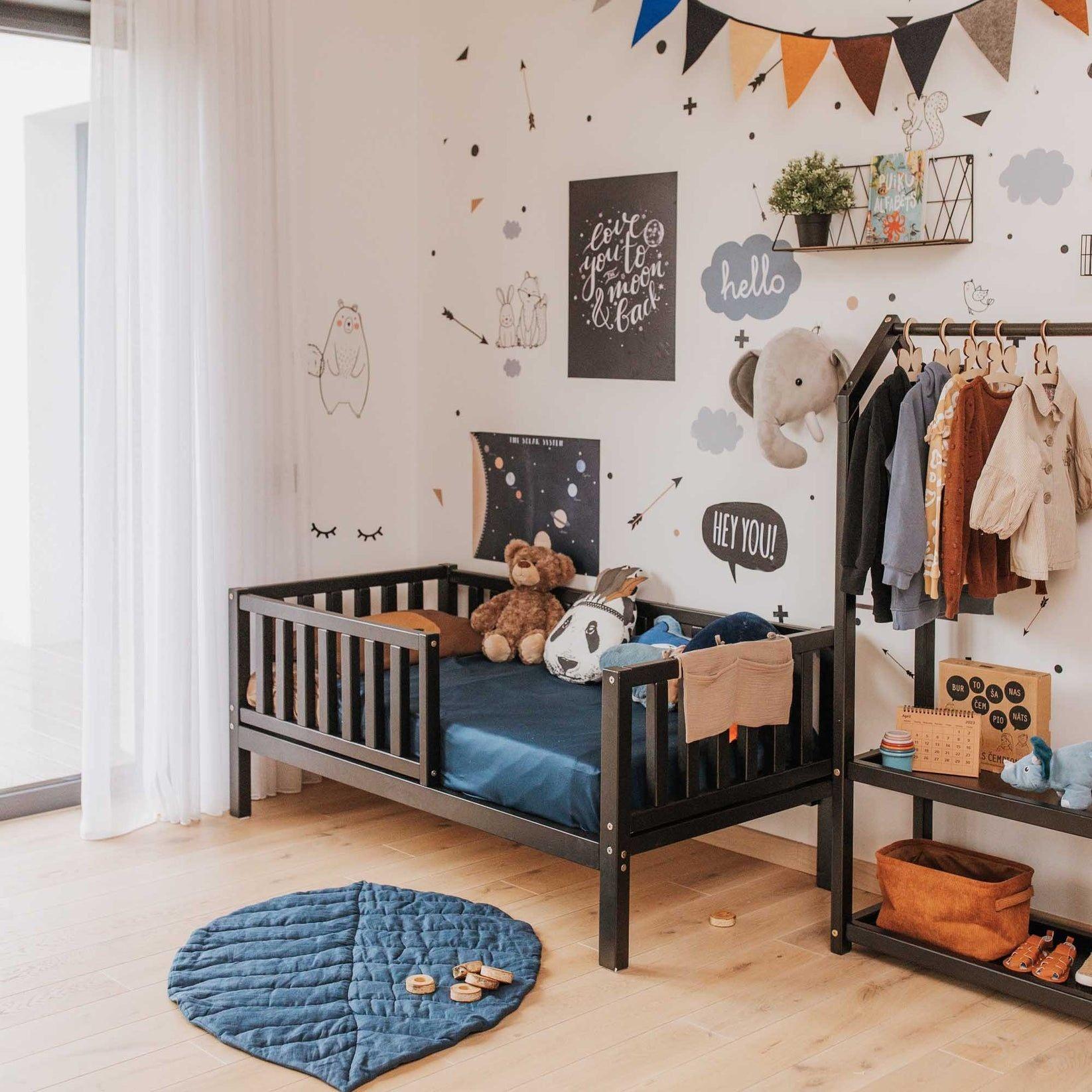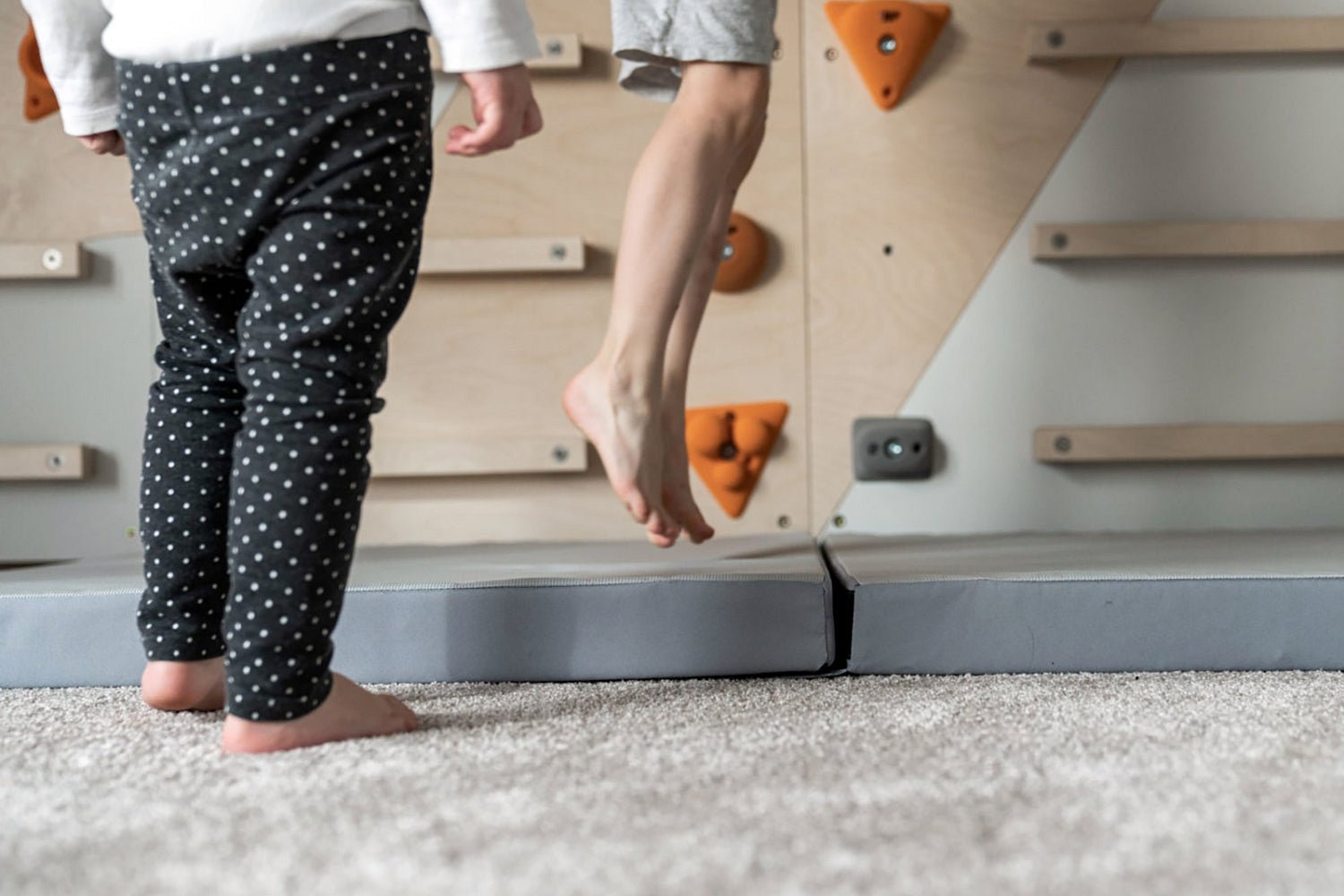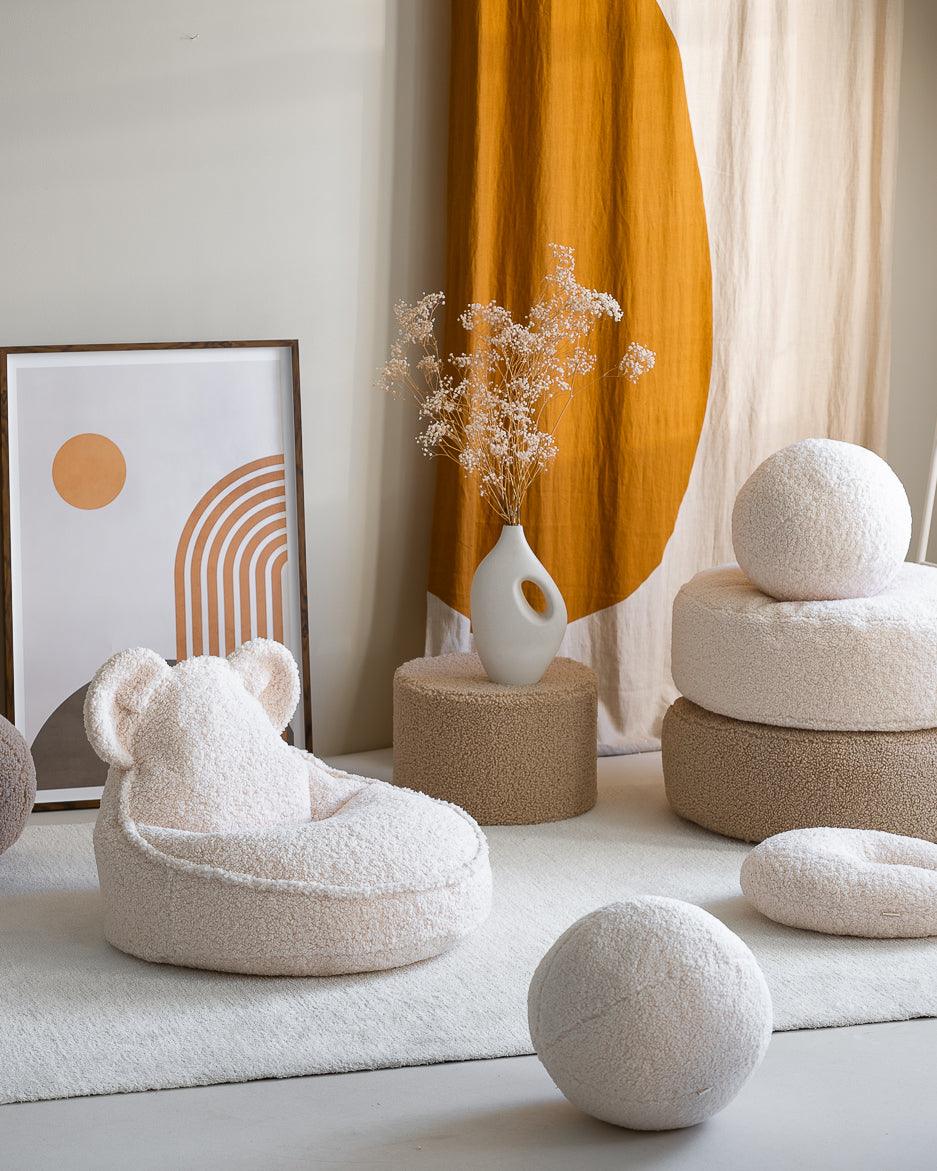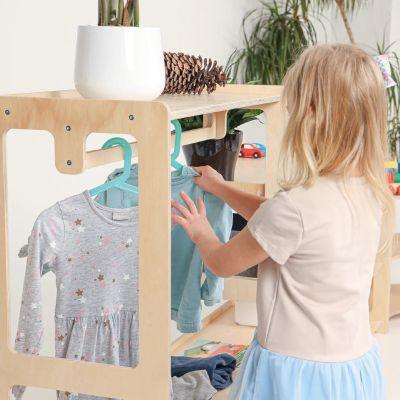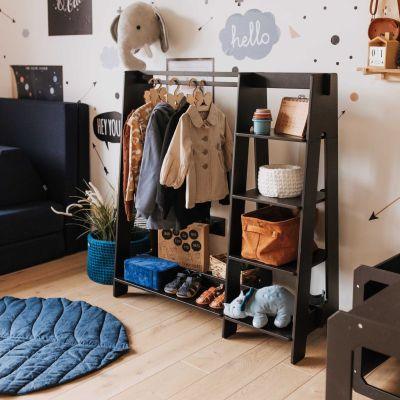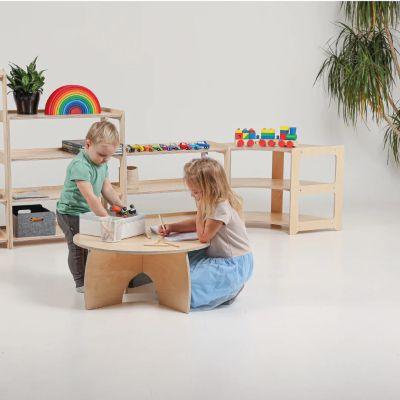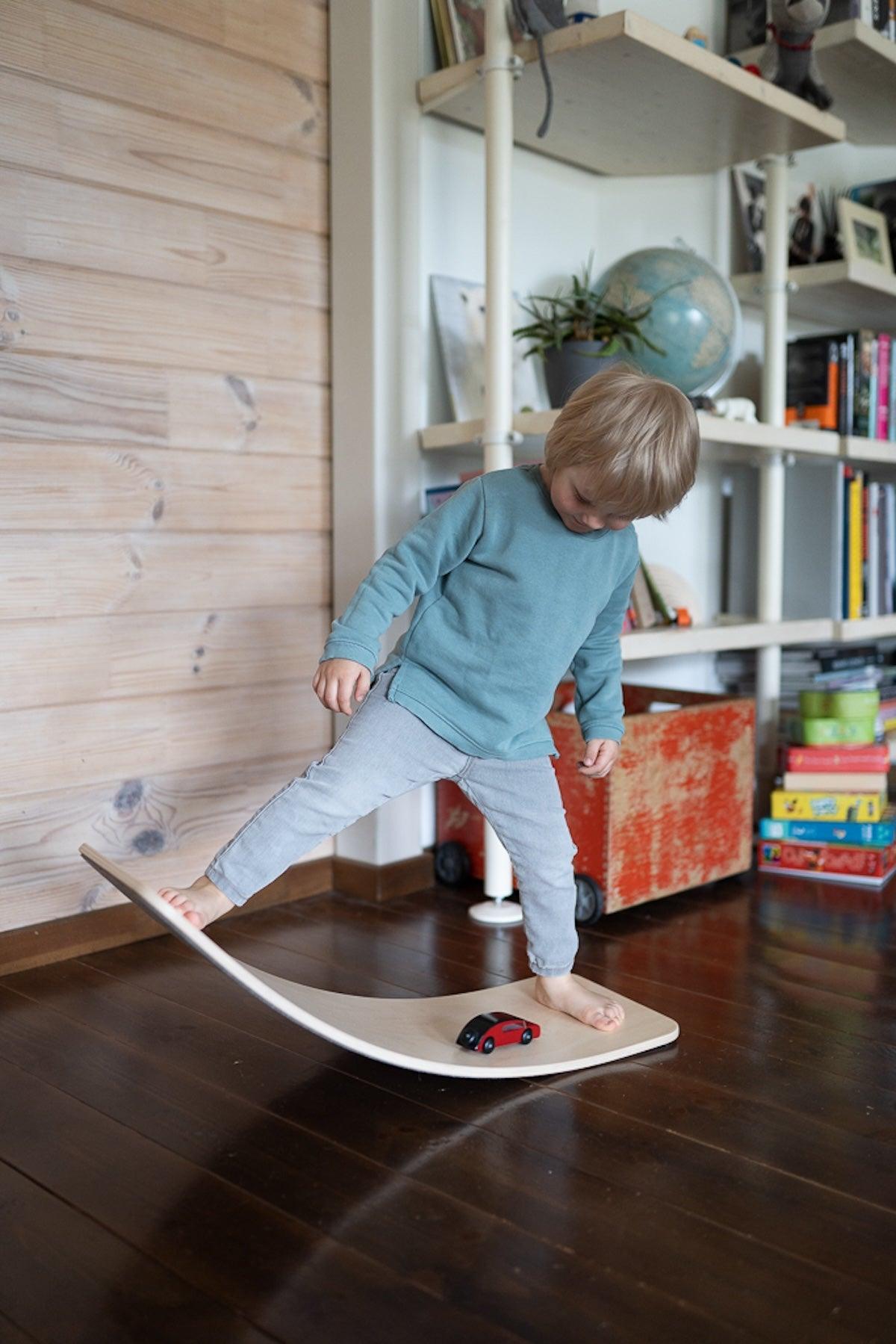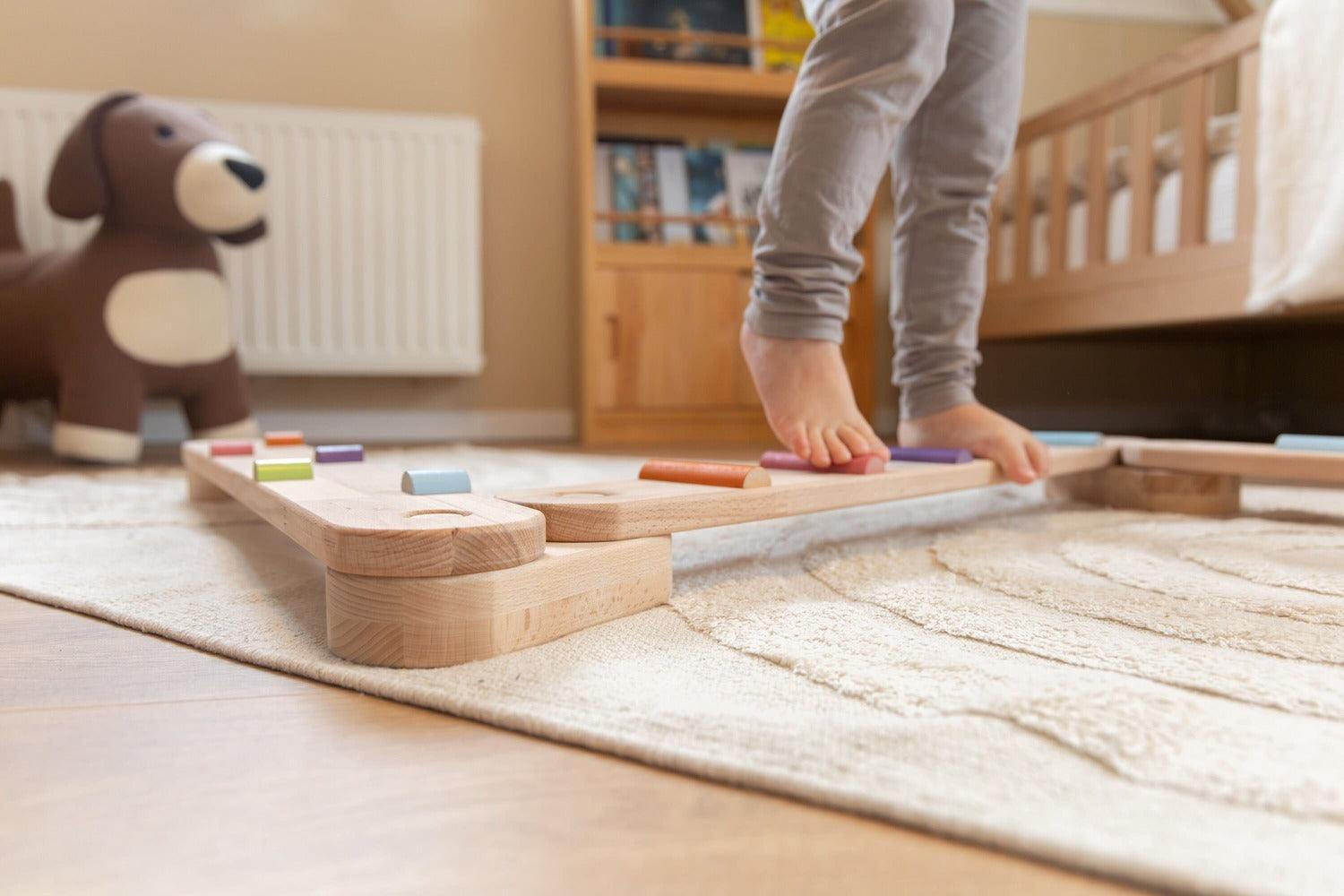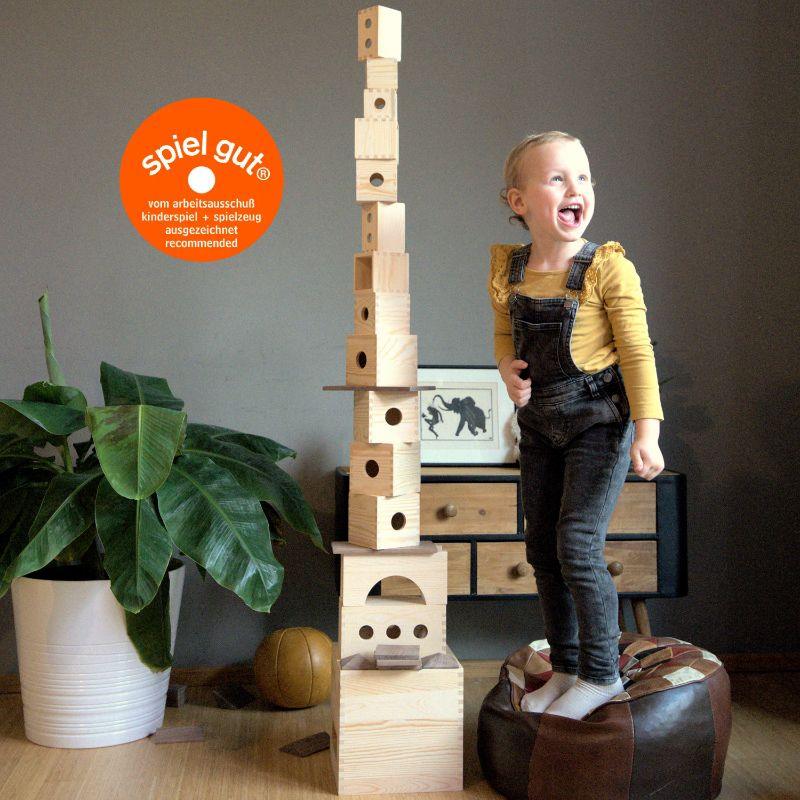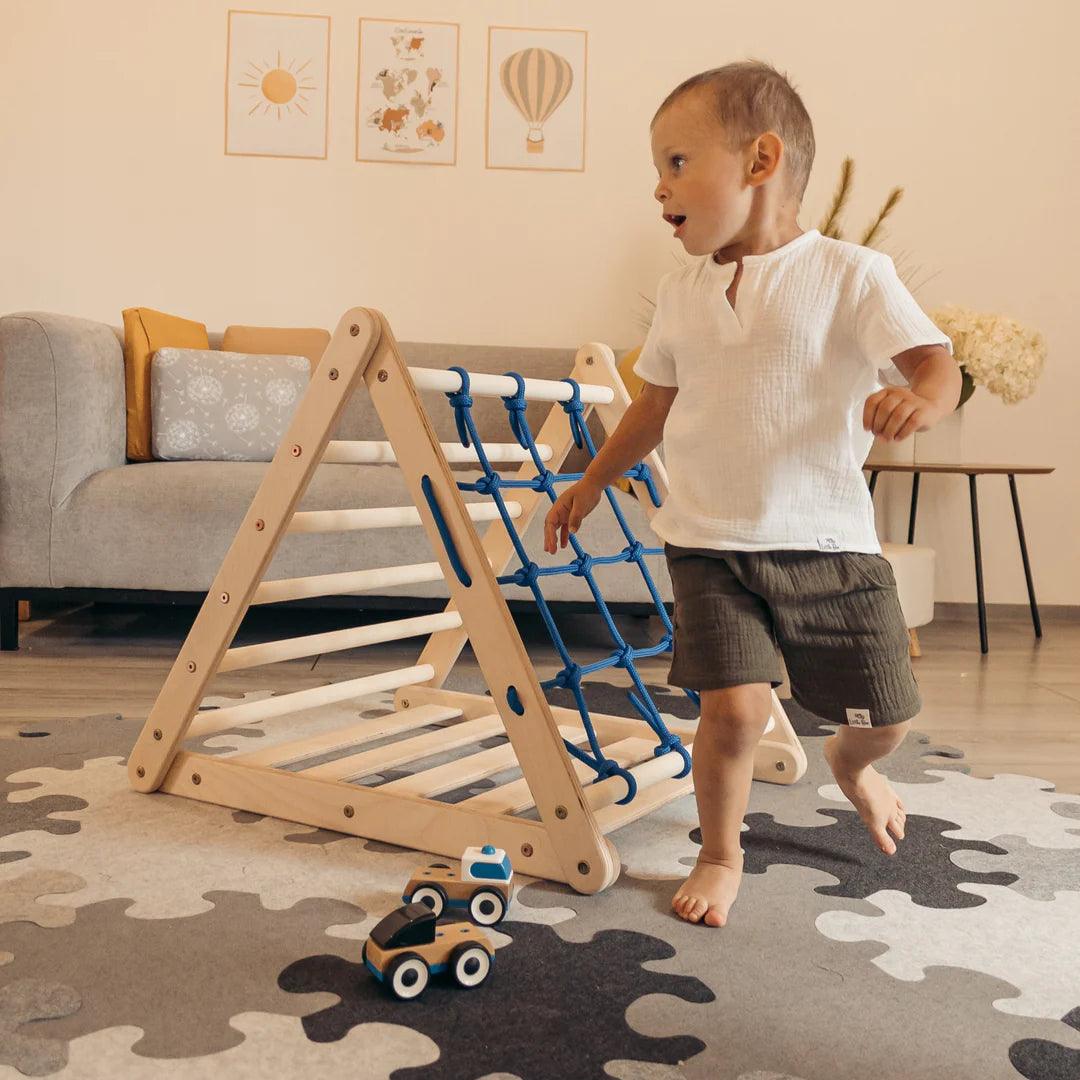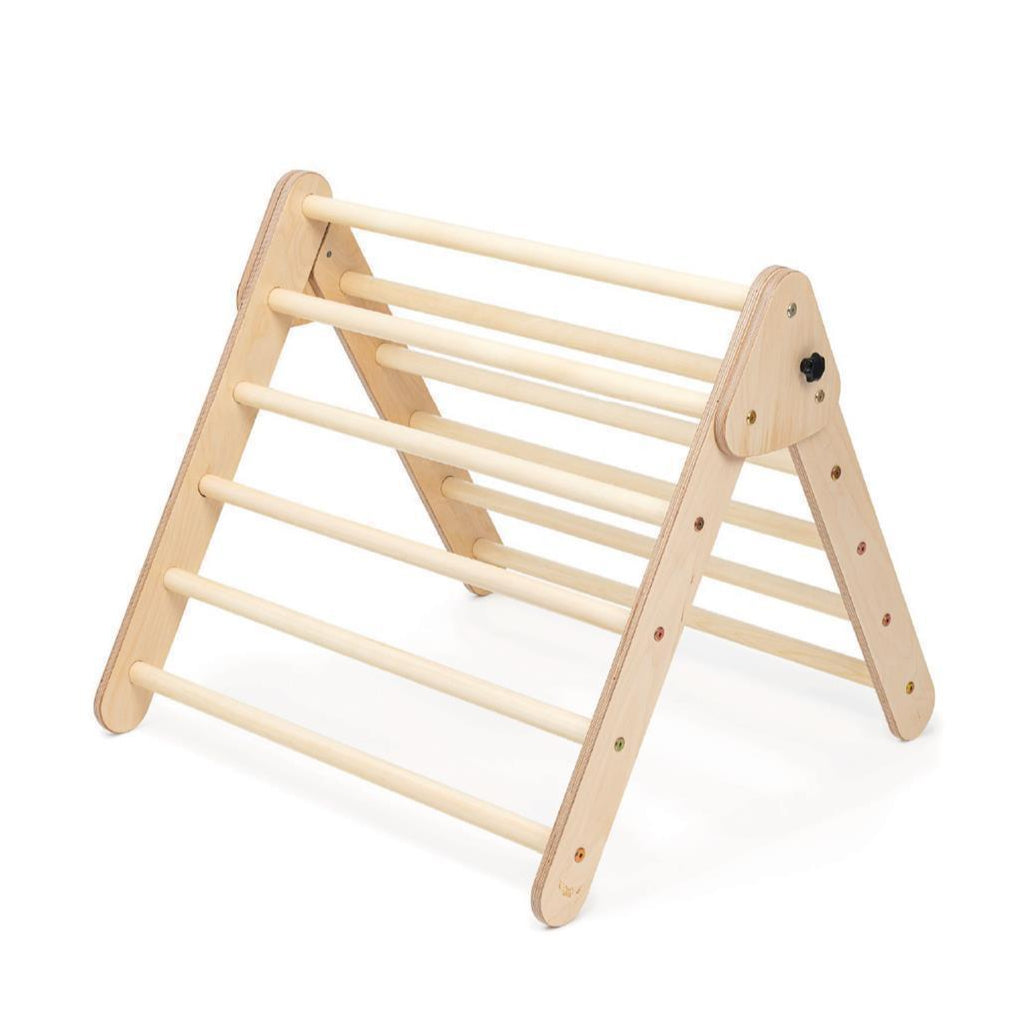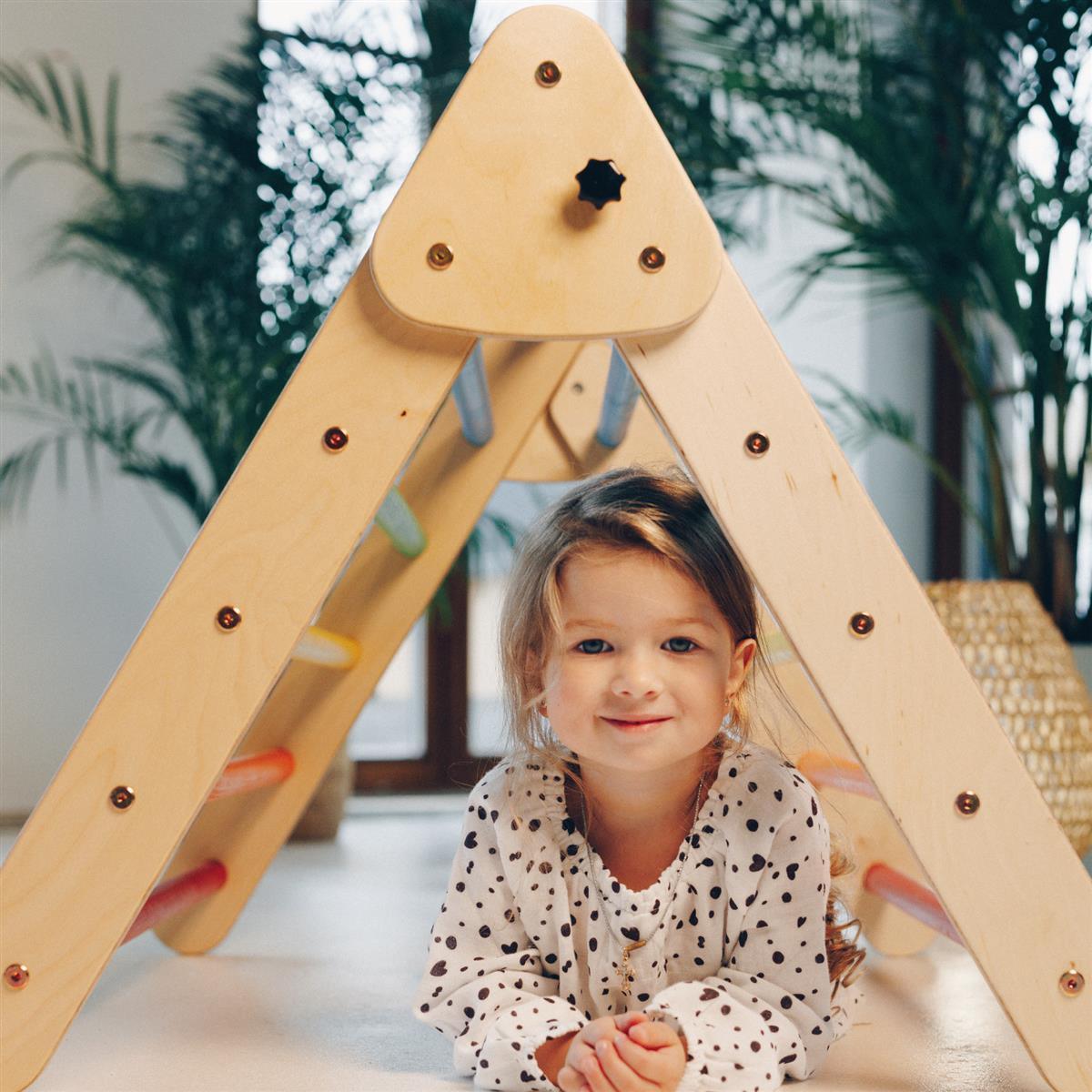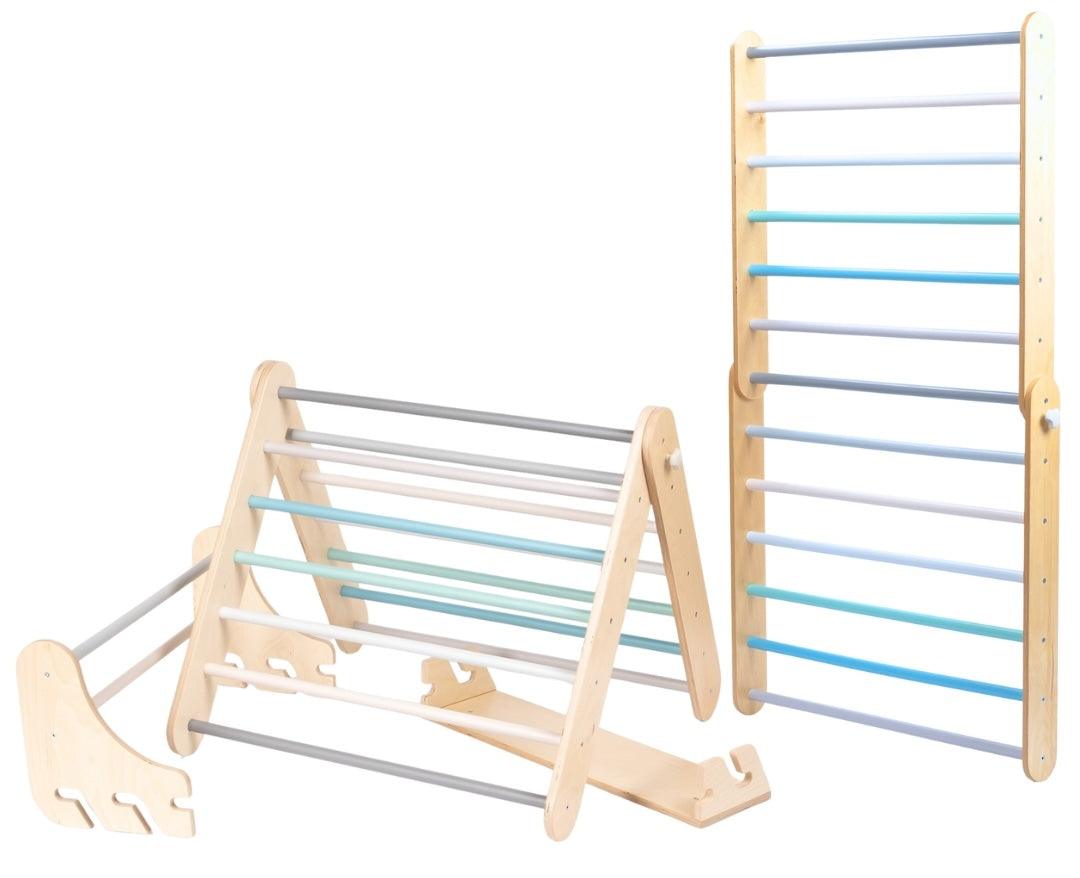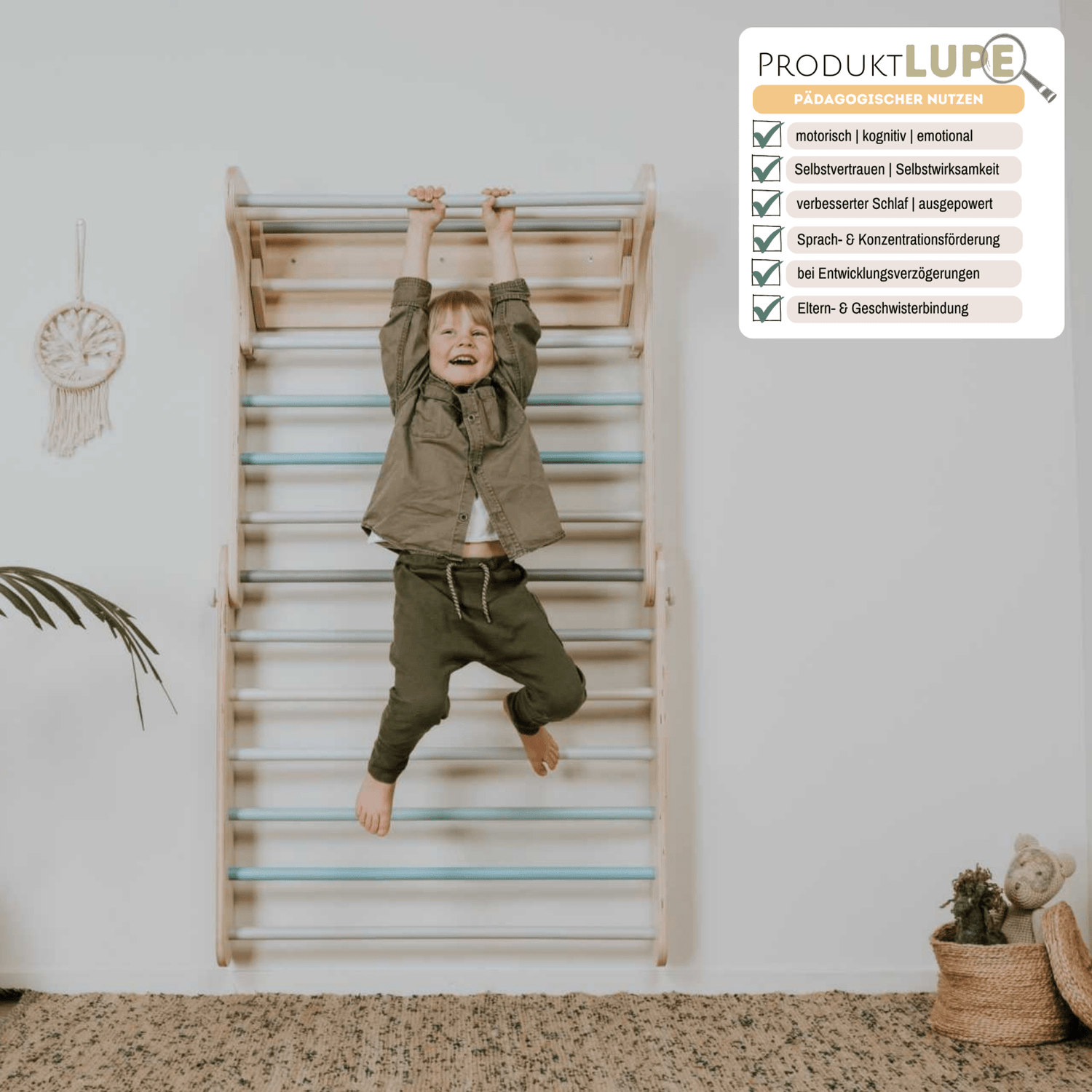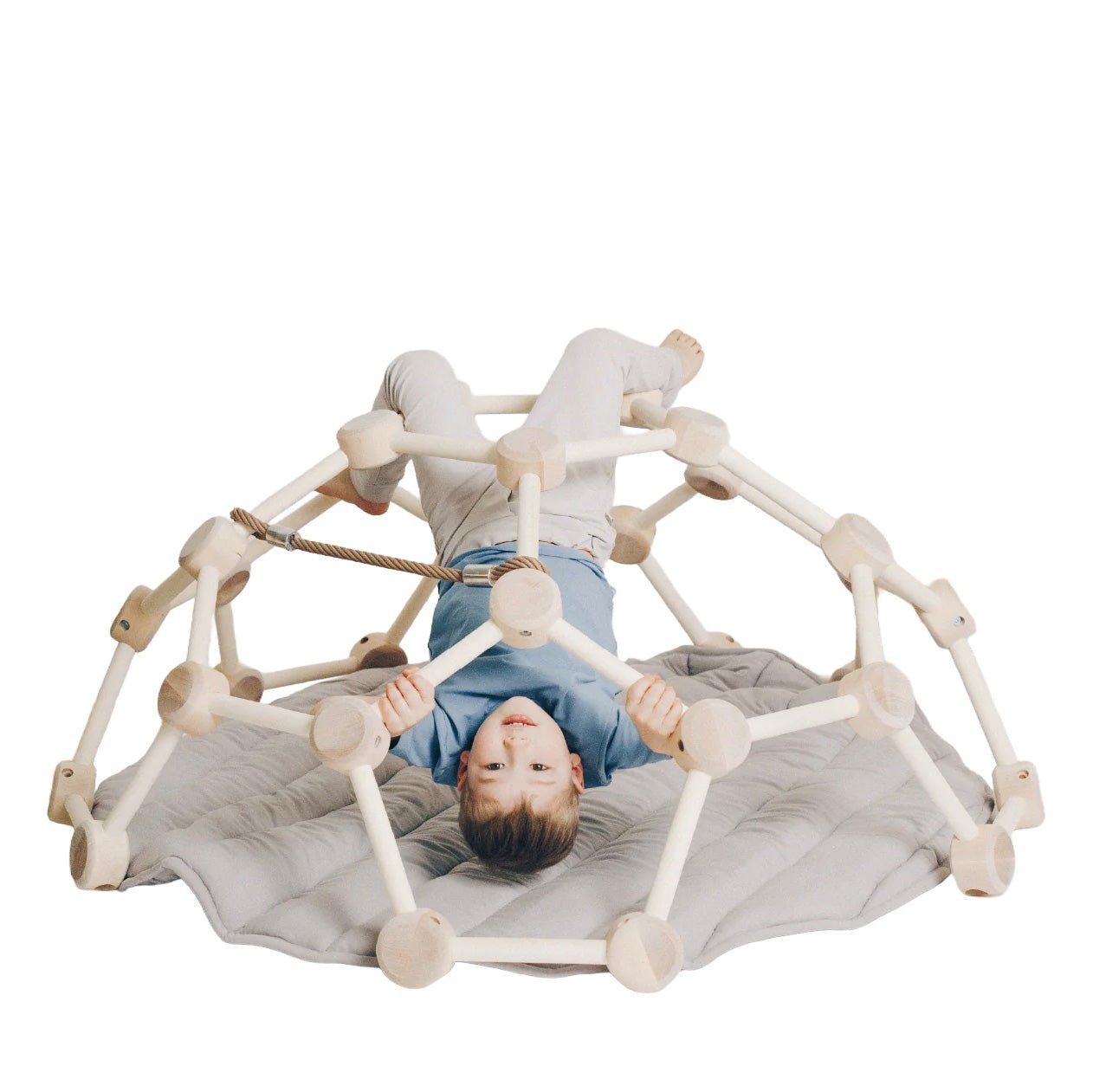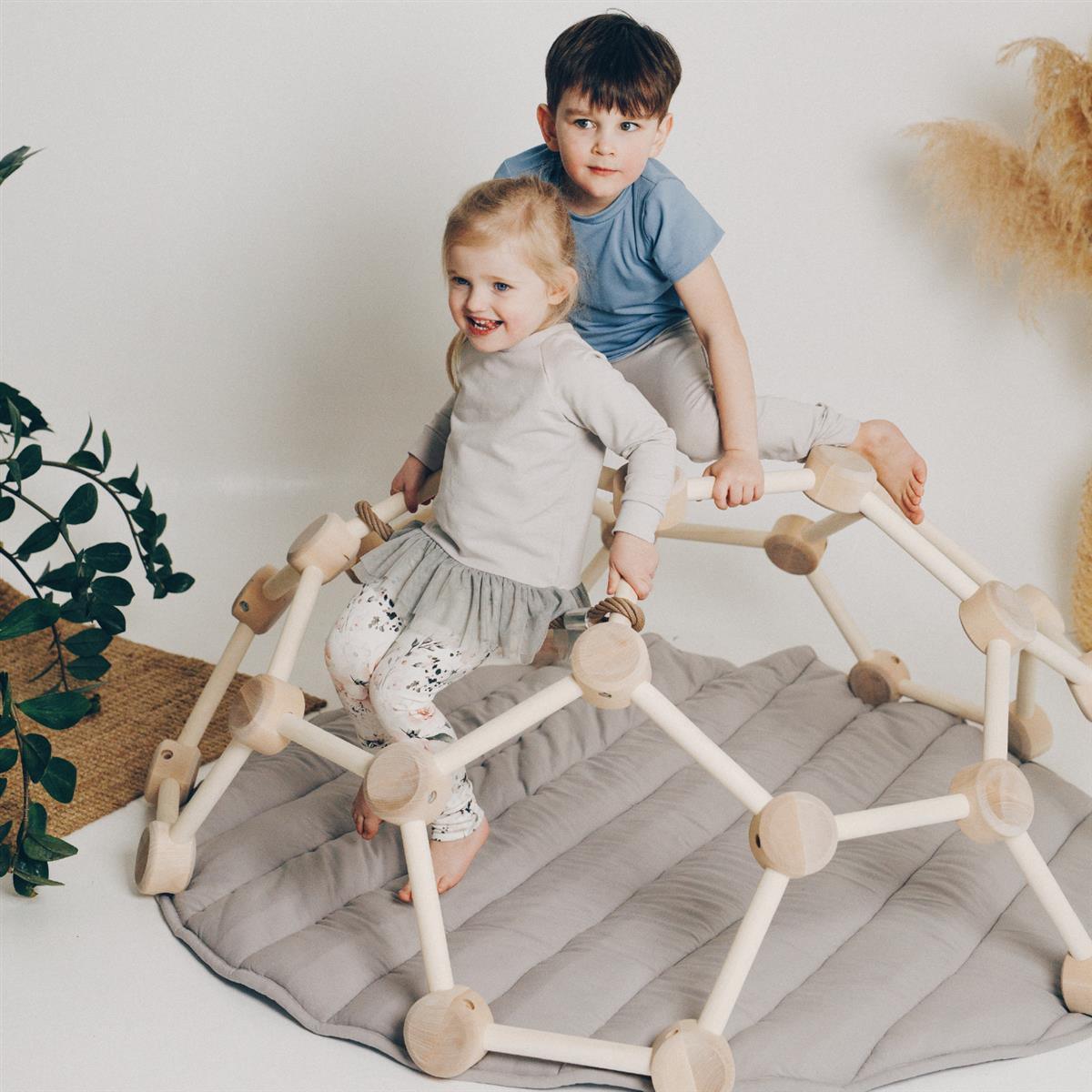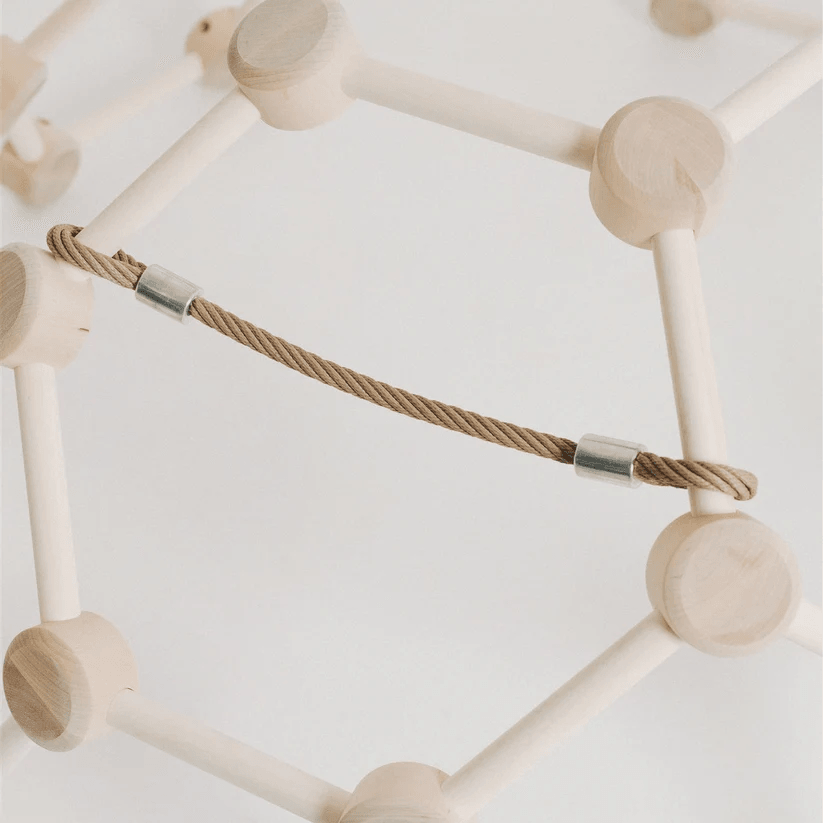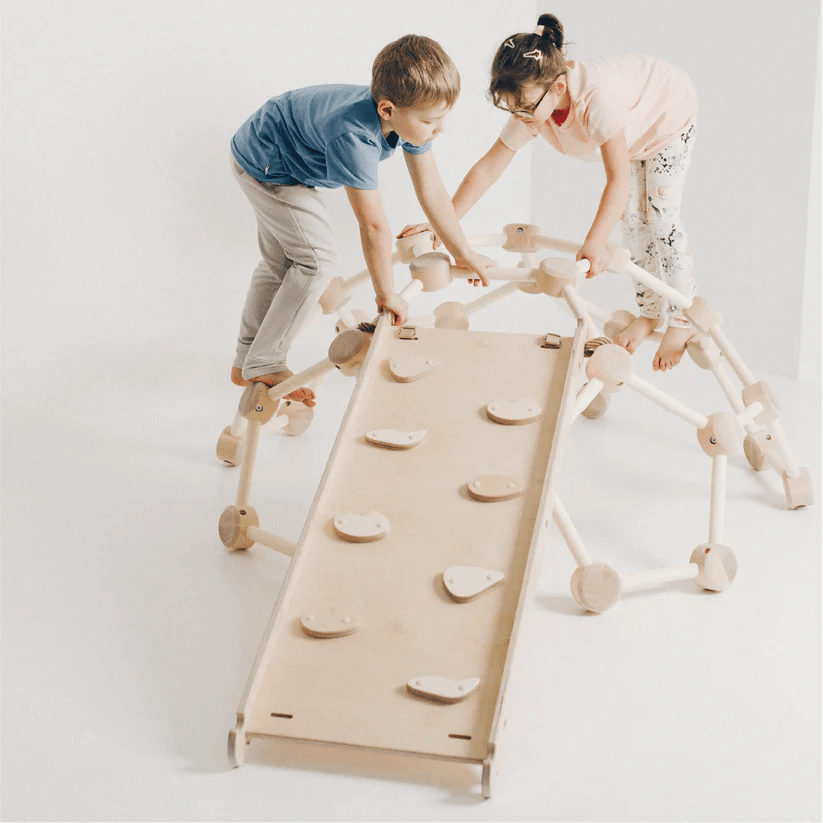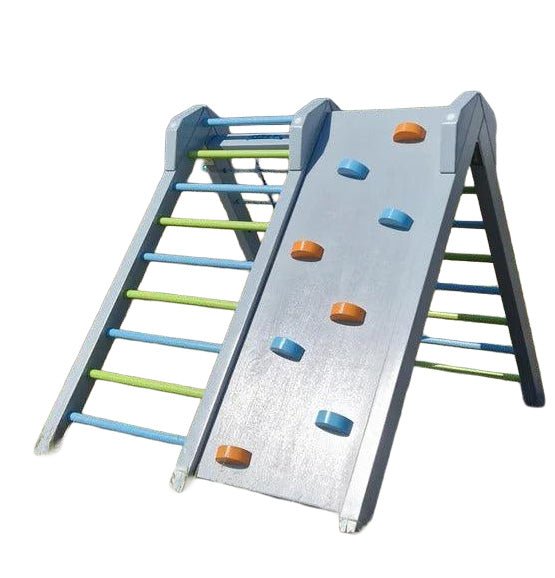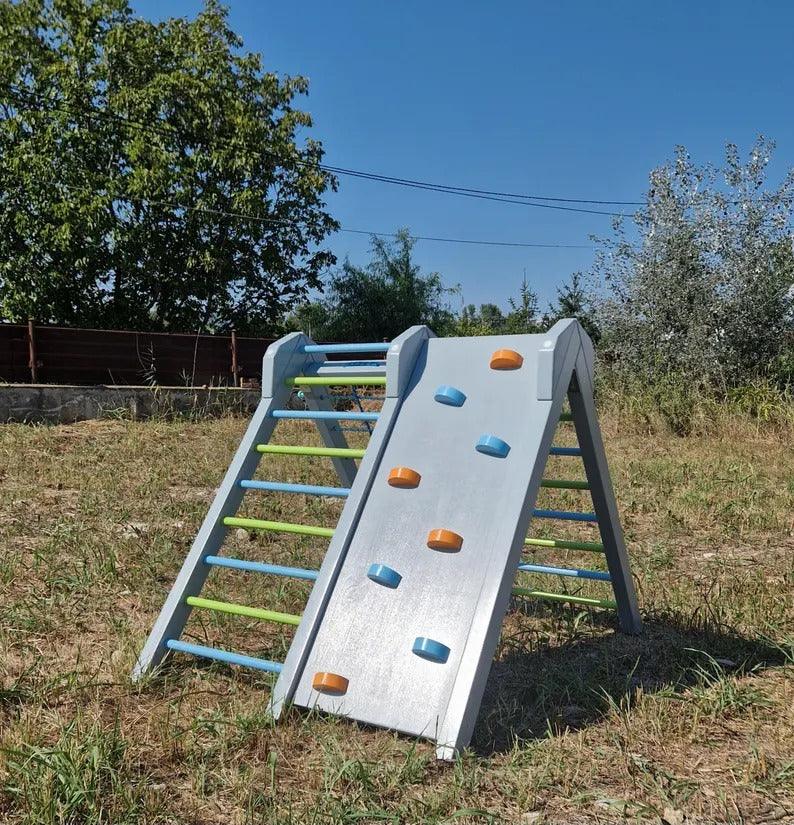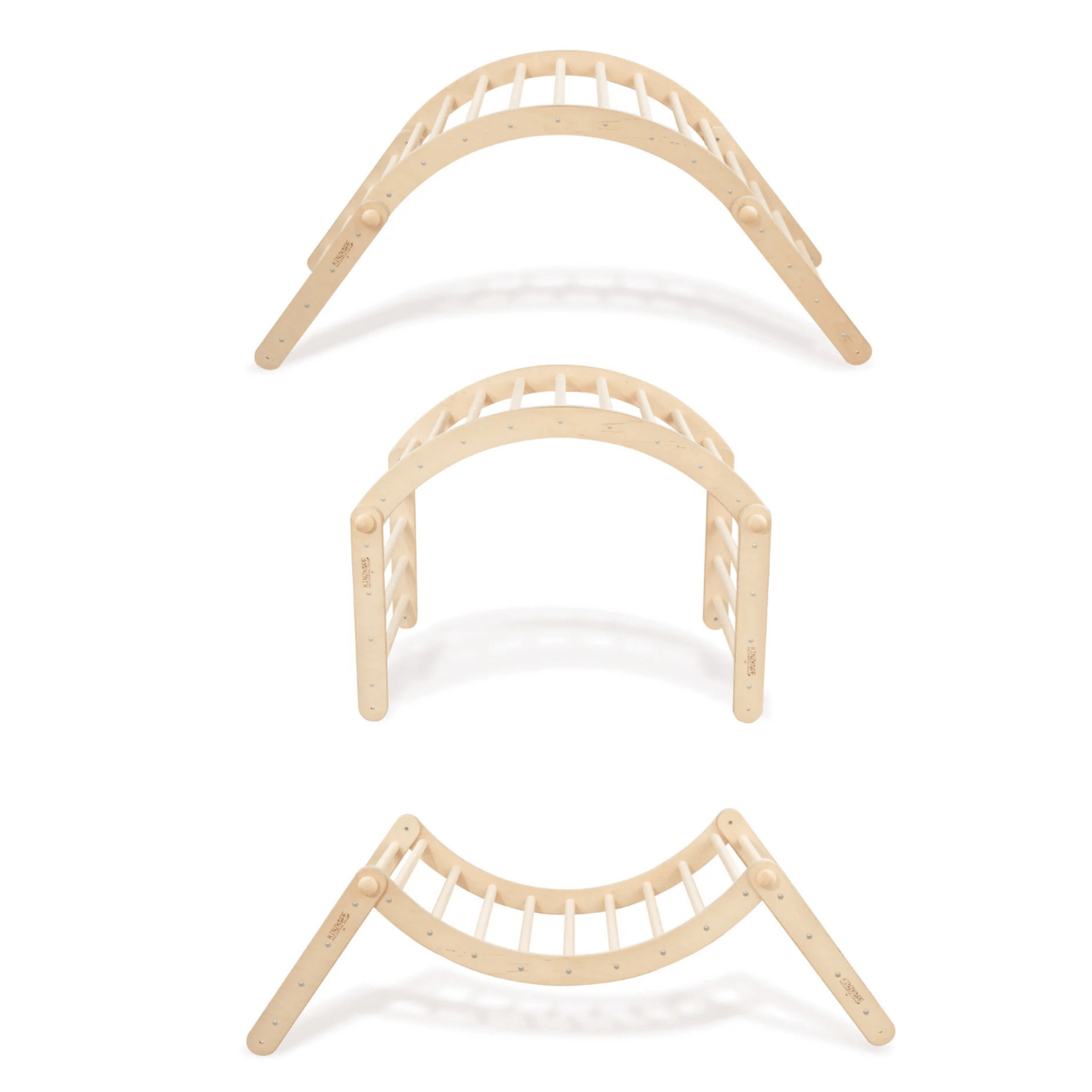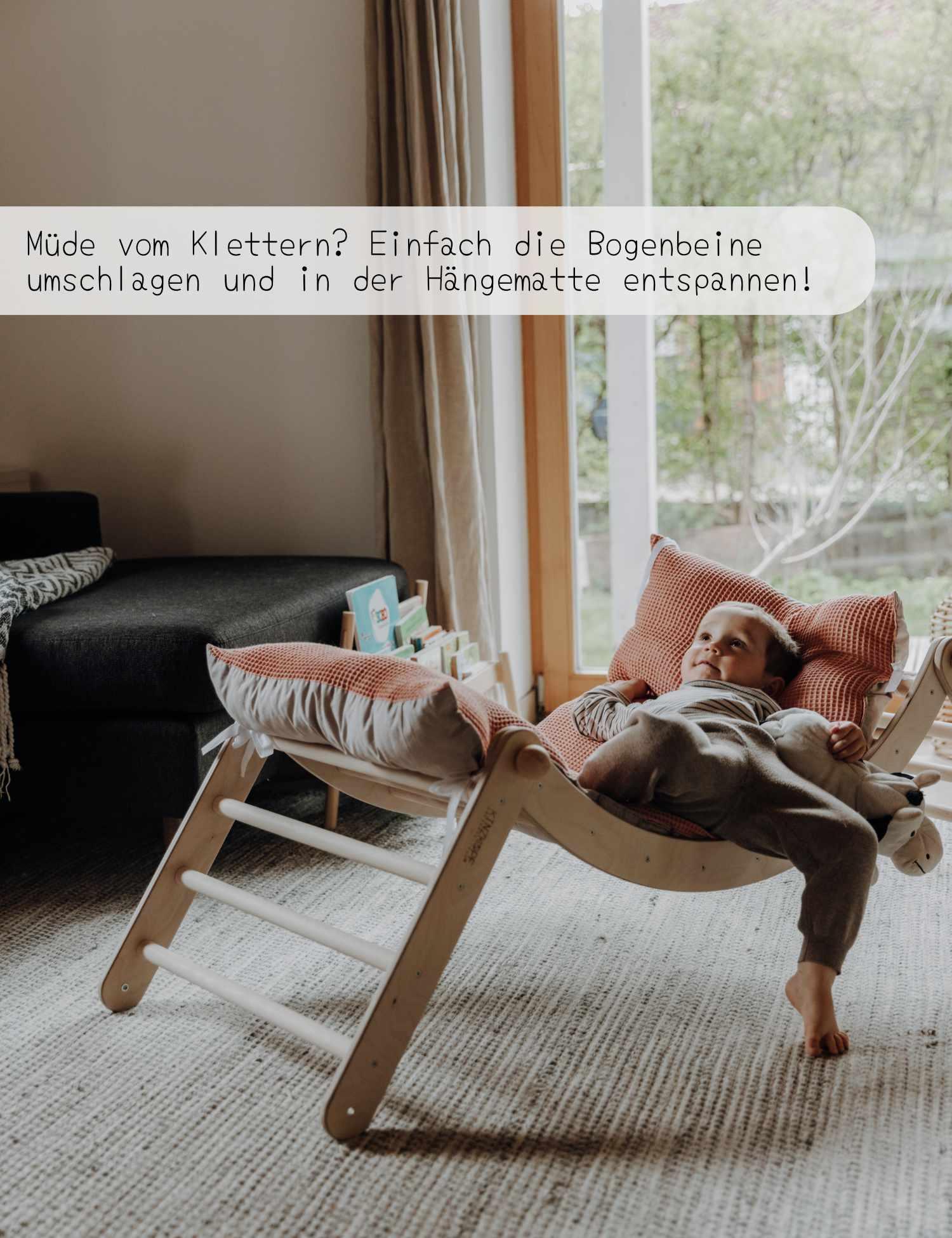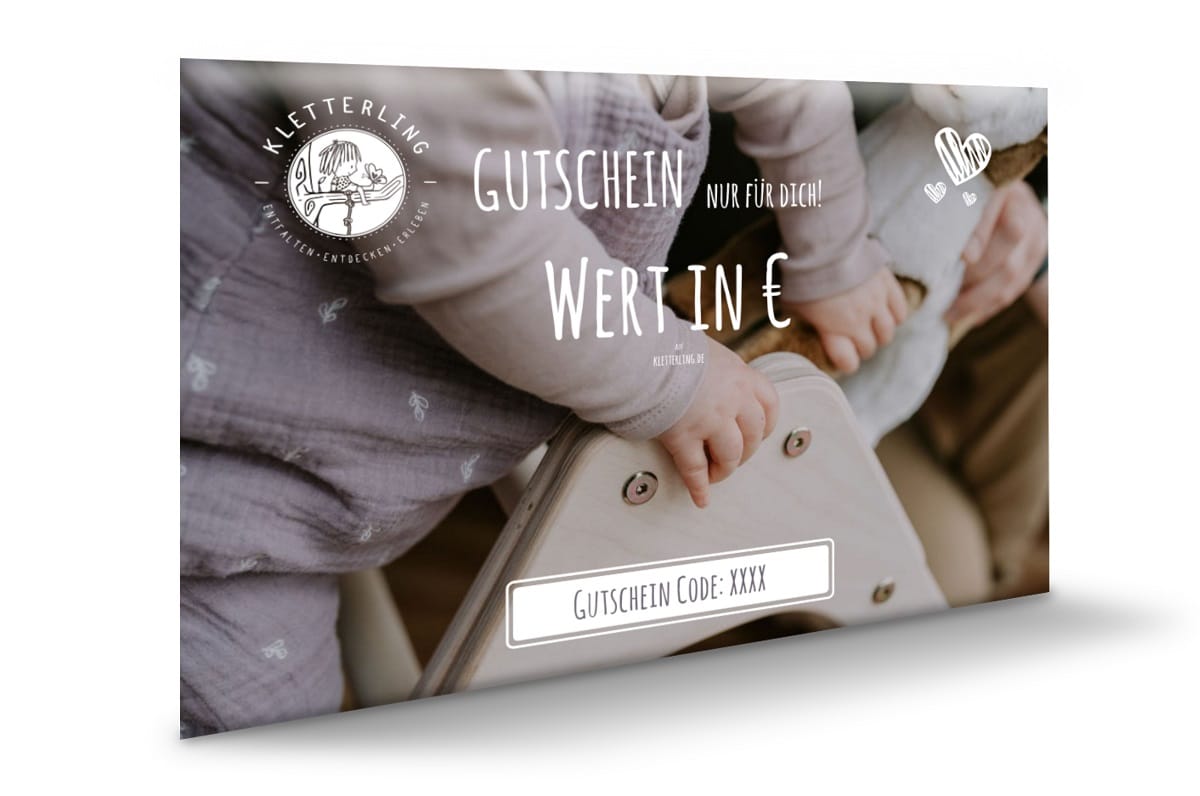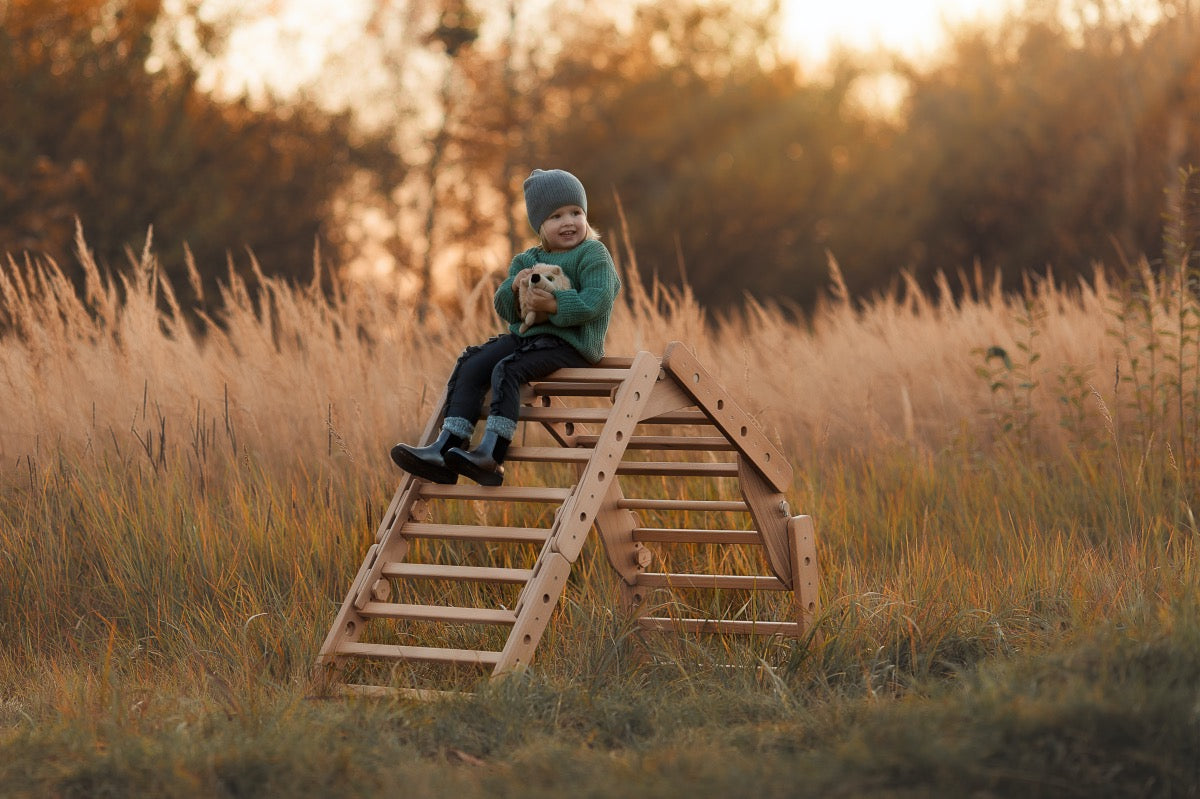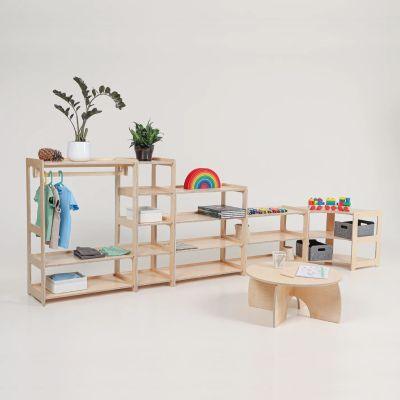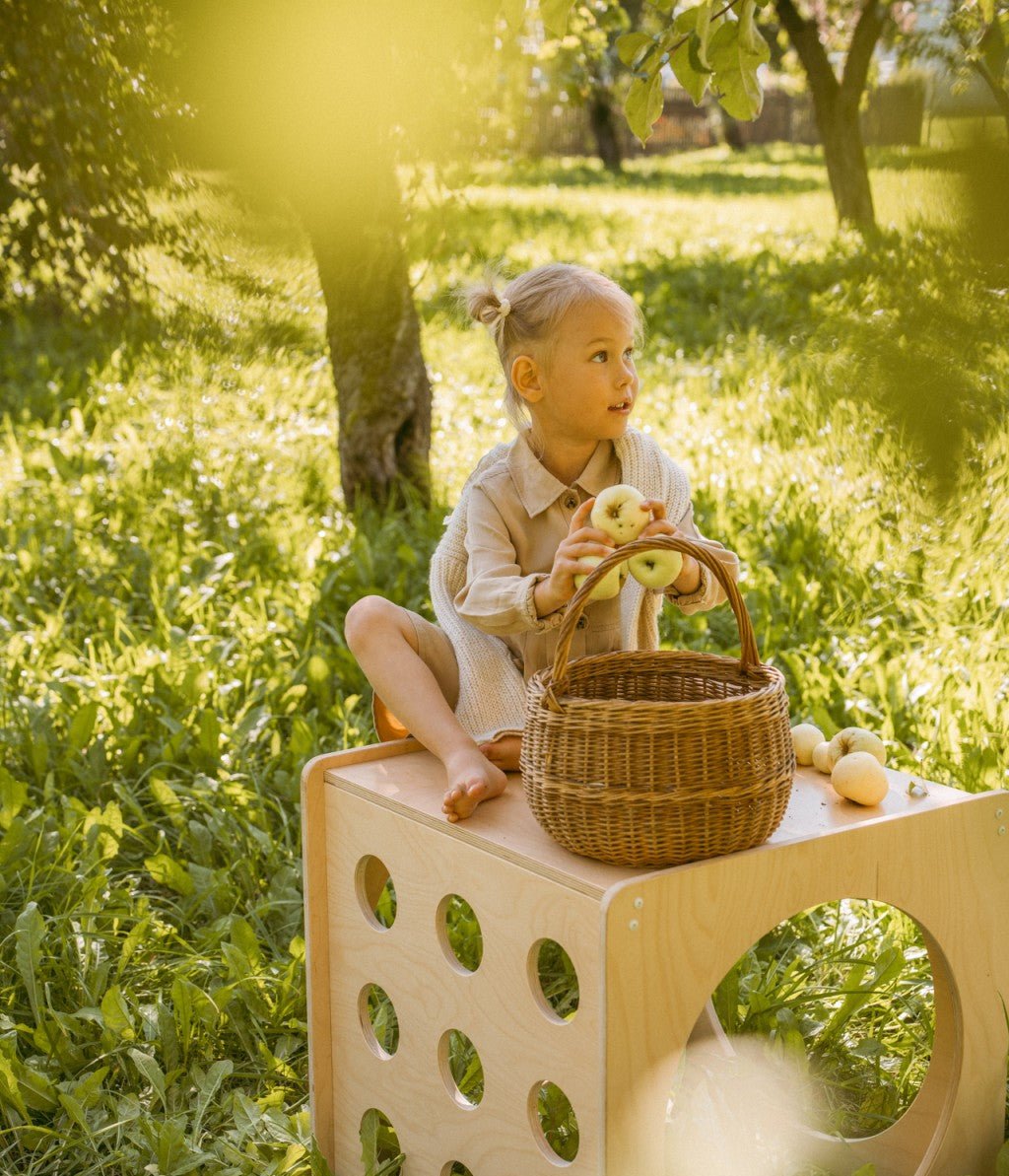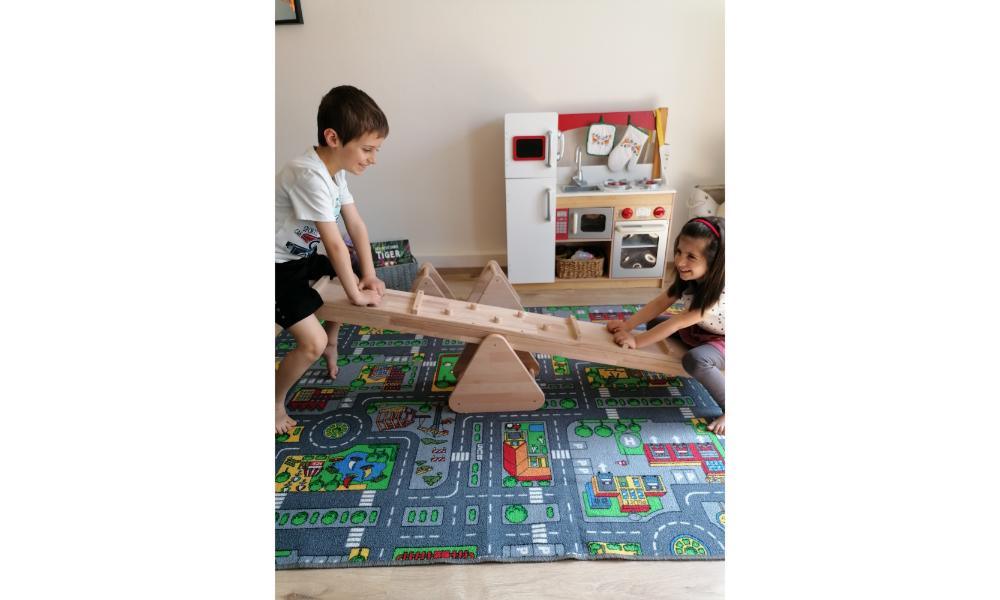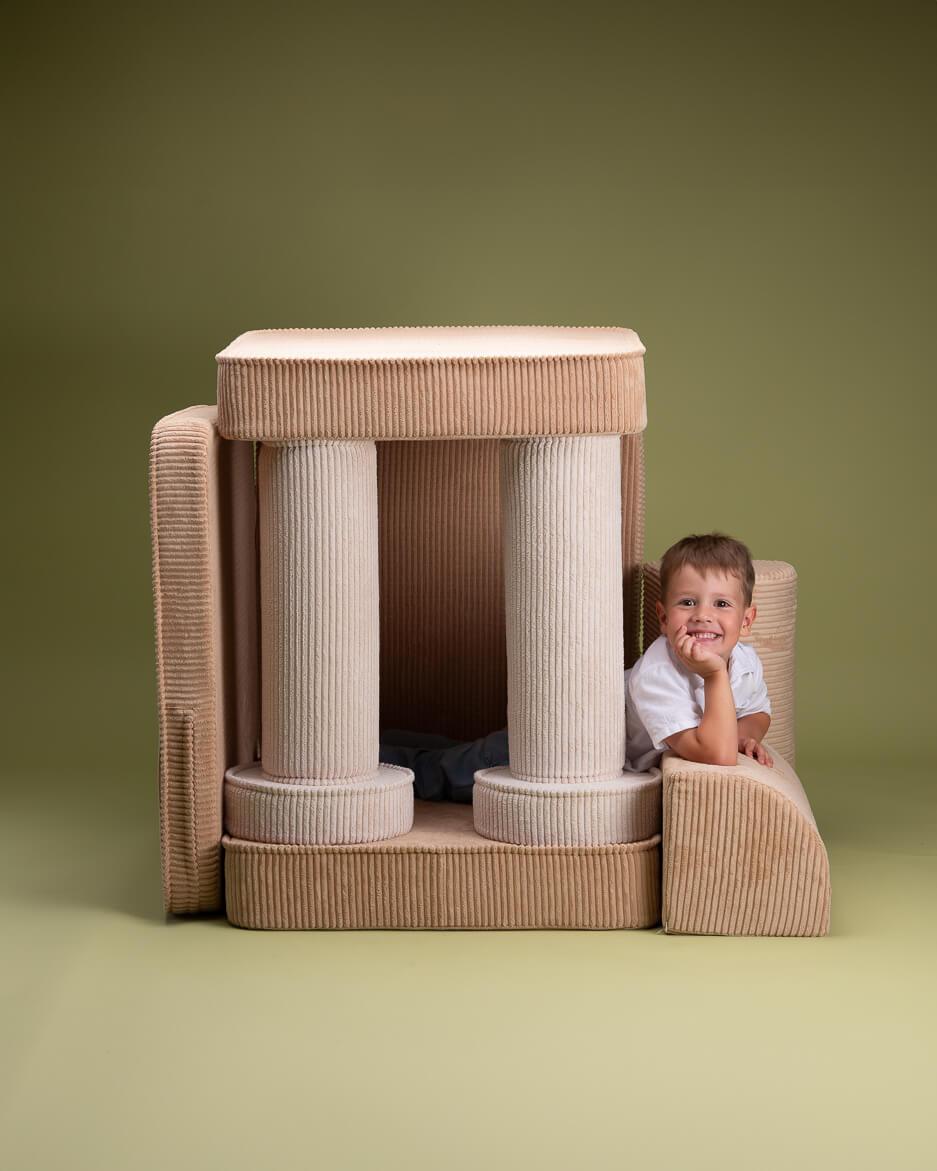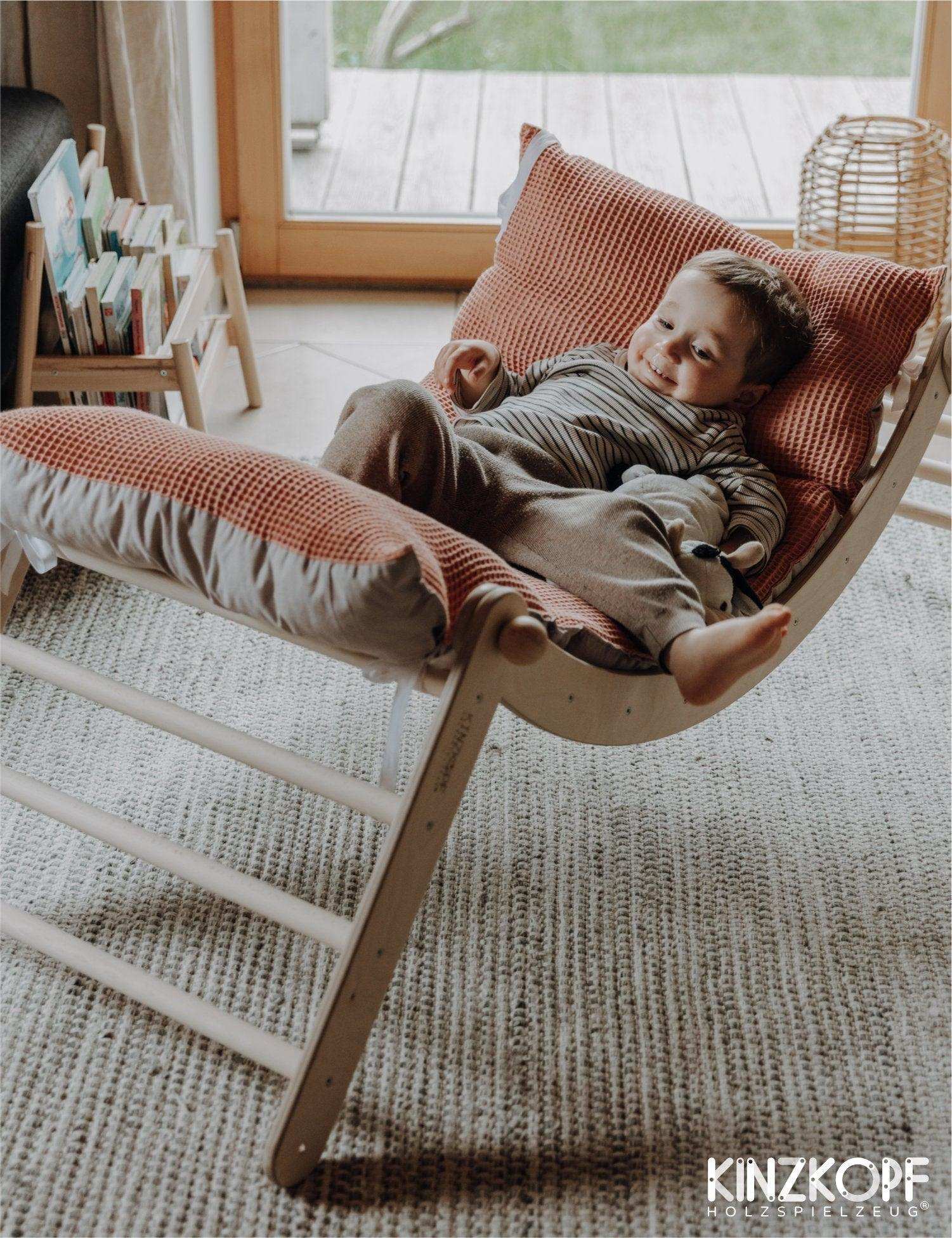Sort by:
23 products
23 products


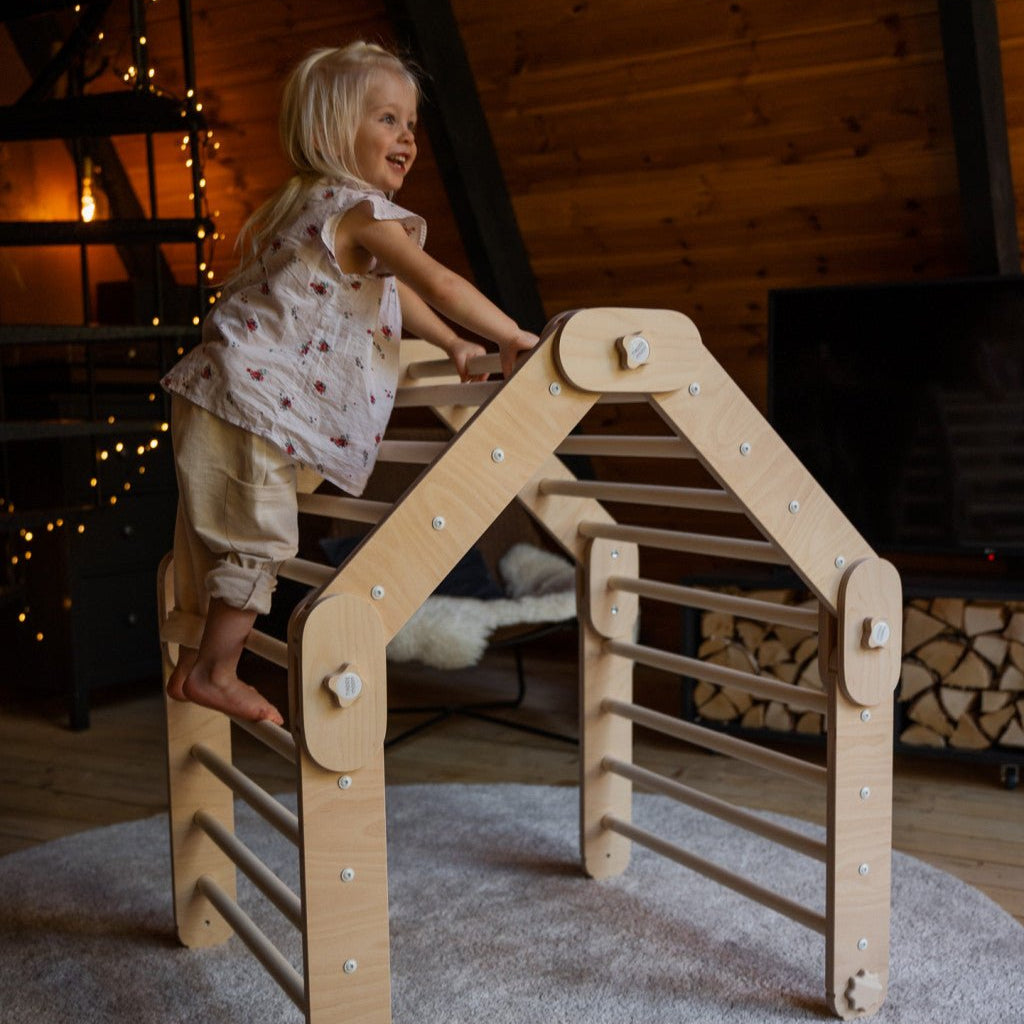
Transformer Kletterdreieck FULL MOON | NATUR | 30 Formen | 98 cm
€320,00
Unit price perTransformer Kletterdreieck FULL MOON | NATUR | 30 Formen | 98 cm
€320,00
Unit price per
Ein wandelbares Kletterdreieck mit maximalem Spielwert: Der FULL MOON fördert Bewegung, Fantasie und Selbstständigkeit – und das ganz ohne zusätzliches Zubehör. Perfekt für kleine Räume, ideal für große Ideen. Mit TüV. Technische Daten: • Größe Klettergerüst:• 98 x 67,5 cm • Farbe: Natur • Gewicht: 16 kg • Maße des Pakets: 74 × 49 × 20 cm • Altersempfehlung: ab 1 Jahr • Belastbarkeit: bis 50 kg • Material: Hochwertiges baltisches Birkensperrholz (unbehandelt) Lieferumfang: • 1x FULL MOON Kletterdreieck • Montagematerial & Anleitung Mehr als nur ein Kletterdreieck Das FULL MOON lässt sich in über 30 verschiedene Positionen verwandeln – vom Haus über das Tor bis zum Tunnel. Ganz ohne Werkzeug. So wird jedes Spiel einzigartig und dein Kind kann seine eigenen Ideen verwirklichen. Kompakt & platzsparend Das wandelbare & faltbare Kletterdreieck ist so gestaltet, dass er sich im Handumdrehen zusammenklappen und platzsparend verstauen lässt. Perfekt für das Kinderzimmer, aber auch schnell zur Seite geräumt, wenn der Platz anderweitig gebraucht wird. Erweiterbar & flexibel Du kannst das Kletterdreieck FULL MOON jederzeit mit passendem Zubehör kombinieren: Zum Beispiel mit beidseitig verwendbaren Holzrampen, einer Wandhalterung für eine schwedische Wand oder dem 3-in-1 Wippbogen. So wächst der Spielspaß mit deinem Kind mit. Montagehinweis: Das Kletterdreieck wird unmontiert geliefert, um Transportschäden und hohe Versandkosten zu vermeiden. Der Aufbau sollte ausschließlich durch Erwachsene erfolgen. Pflege & Haltbarkeit • Für den Innenbereich geeignet, sollte nicht im Freien aufbewahrt werden • Zur Reinigung ein trockenes oder leicht feuchtes Tuch verwenden • Keine aggressiven Reinigungsmittel oder scharfen Chemikalien verwenden Sicherheit: Für ein sicheres Spielvergnügen empfehlen wir, dass Kinder jederzeit von einem Erwachsenen begleitet werden. Unsere Produkte sind sorgfältig getestet – dennoch bitten wir um dein Verständnis, dass wir keine Verantwortung für etwaige Unfälle übernehmen können. Zertifizierte Qualität – hergestellt in der EU Das Kletterdreieck FULL MOON entspricht den EU-Sicherheitsstandards für Spielzeug (Richtlinie 2009/48/EG) und ist CE- sowie TÜV-zertifiziert. Produziert wird in sorgfältiger Handarbeit in Lettland (EU) – mit Fokus auf Langlebigkeit, Funktionalität und kindgerechtem Design.
Mini climbing triangle for children – versatile climbing fun
Our mini climbing triangle is the ideal climbing device for children of all ages. It playfully promotes motor skills and inspires a love of climbing. With three different sides—a nylon net, a rung side, and a ladder side—this climbing triangle offers versatile options for learning to climb on different structures.
Included in the set:
- 1 mini climbing triangle
Mass:
- Height: 65 cm
- Length: 73 cm
- Width: 62 cm
Maximum load:
- Up to 50 kg
Materials:
- Sides: Baltic birch plywood (18 mm thick)
- Round bars: Ash wood (28 mm diameter)
- Rope: Blue 12 mm thick rope
A notice:
- This product can also be used outdoors in sunny weather, but should not be left outside in rain, snow, cold or high humidity.
Important NOTE:
- Parents should always supervise their children when using the product and never leave them unattended.
With the Mini Climbing Triangle, children learn and develop their climbing skills in a playful way while having tons of fun. A must-have for any indoor or outdoor adventure!
The Pikler Triangle by KateHaa: A toy that grows with your child
The Pikler Triangle , a milestone in the world of quality and innovative climbing toys for toddlers, offers an invaluable way to naturally promote movement, dexterity, and motor skills. This masterpiece comes from KateHaa, a leading name in the creation of educational children's toys.
The combination of responsibly sourced birch wood and Baltic birch plywood, along with a non-toxic surface treatment made from water-based varnish and paint, guarantees gentle and safe play. Your child's well-being is therefore our top priority. Presented in an attractive and safe design that meets the strict testing requirements of the SGS Institute in Germany under the Toy Safety Directive 2009/48/EC, this climbing triangle stands for quality and safety.
Versatility that inspires
With the versatile Pikler Triangle, parents create an enriching playground that easily transforms into a cozy tent or a quiet retreat—ideal for imaginative play. When it comes to expanding the play area, our 2-in-1 climbing and sliding ramp and a ladder ramp, for example, complement the experience. This sparks creativity and a sense of adventure in a dynamic environment.
Technical details and safety
| Features | Details |
|---|---|
| material | Birch wood, Baltic birch plywood |
| finish | Water-based varnish and paint |
| Resilience | At least 50 kg (110 lbs) |
| Climbing triangle unfolded | L 71 cm, W 80 cm, H 60 cm |
| Climbing triangle folded | L 71 cm, W 80 cm, H 20 cm |
| Certification | SGS Institute, Germany, Toy Safety Directive 2009/48/EC |
With its thoughtful design that encourages your child's natural urge to move and develop, the KateHaa Pikler Triangle paves the way for a healthy and happy childhood. Whether it's a simple climb or a creatively designed play area, your child can learn, grow, and develop their potential in a safe and stimulating environment.
Kletta's tip
Choosing a Pikler triangle from KateHaa is a conscious choice that goes far beyond just being a toy. It encompasses the desire to support a child's development while also contributing to environmental protection. Kletterling, as your trusted partner, places great value on transparency, excellent customer service, and the provision of products under sustainable and fair conditions. The thoughtful selection of the Pikler triangle not only promotes your child's motor skills and creativity, but also promotes a sustainable lifestyle. Take the first step toward a shared future – for a happy child and a healthy environment.


LEVEL-UP BUNDLE | Transformer Dreieck + Rollenrutsche | 3 Längen wählbar | Rutsche - 50%
LEVEL-UP BUNDLE | Transformer Dreieck + Rollenrutsche | 3 Längen wählbar | Rutsche - 50%
LEVEL UP BUNDLE – jetzt wird es noch wilder! Weil Kinder einen Spielplatz zu hause brauchen
Fördere die Selbstständigkeit, Entdeckerlust und motorische Entwicklung deines Kindes – mit unserem durchdachten LEVEL UP BUNDLE. Es kombiniert das wandelbare Kletterdreieck FULL MOON mit der beliebten Rollenrutsche ROLL und bietet damit maximale Vielseitigkeit. Perfekt zum Austoben und fröhlich sein.
Highlights auf einen Blick
-
2-in-1 Bundle für sofortigen Kletter- und Rutschspaß
-
Kletterdreieck mit über 30 einstellbaren Positionen
-
Rollenrutsche mit gutlaufende Rollen für sensorische Stimulation
-
Kompakt, faltbar & platzsparend – ideal für jeden Wohnraum
-
Montessori-inspiriertes Spielen – fördert Balance, Kraft & Selbstvertrauen
-
Natürliche Materialien: unbehandeltes Birkenholz & schadstofffreies Polyethylen
-
CE- und TÜV-zertifiziertes Spielgerät aus europäischer Handarbeit
Produktdetails
|
Merkmal |
Beschreibung |
|---|---|
|
Produktgröße |
FULL MOON: 98 × 67,5 cm, Rollenrutsche M: 120 × 40 cm |
|
Farben |
Natur |
|
Produktgewicht |
FULL MOON: 16 kg, Rutsche: ca. 4 kg |
|
Altersempfehlung |
Ab 1 Jahr |
|
Maximale Belastung |
Kletterdreieck: 50 kg, Rutsche: 50 kg |
|
Material |
Hochwertiges baltisches Birkensperrholz, PE-Rollen (lebensmittelecht) |
|
Oberfläche |
Naturbelassen, glatt geschliffen |
|
Empfohlene Nutzung |
Indoor |
|
Pflegehinweis |
Trocken oder leicht feucht abwischen, keine scharfen Reiniger |
|
Montage |
Lieferung zerlegt – einfache Selbstmontage durch Erwachsene |
|
Herkunft |
Handgefertigt in Lettland (EU) |
Lieferumfang
-
1 × Kletterdreieck FULL MOON (faltbar, TÜV-geprüft)
-
1 × Rollenrutsche M (120 cm) mit passenden Sprossenaussparungen
-
Montagematerial & Anleitung
Fördert wichtige Fähigkeiten
-
Verbesserung von Gleichgewicht, Koordination und Beweglichkeit
-
Stärkung der Muskulatur und Erwerb motorischer Fähigkeiten
-
Förderung von Selbstvertrauen und kognitiver Entwicklung
-
Sorgt für Ausgeglichenheit, guten Schlaf und beste Laune
Aufbau & Anwendung
Das Bundle wird zerlegt geliefert, um Transportschäden zu vermeiden. Die Montage sollte ausschließlich durch Erwachsene erfolgen – Kinder dürfen natürlich beim Aufbau mithelfen und diesen zu einem spannenden Erlebnis machen. Die Rutsche lässt sich kinderleicht in die Sprossen einhängen – bitte Sprossendurchmesser prüfen (Rutsche M für 28 mm).
Sicherheit
Für ein rundum geschütztes Spiel empfehlen wir, dein Kind jederzeit von einem Erwachsenen begleiten zu lassen. Unsere Produkte sind stabil und durchdacht – dennoch bitten wir um dein Verständnis, dass wir keine Verantwortung für etwaige Unfälle übernehmen können.
Pflege & Verwendung
Nur für den Innenbereich geeignet. Vor Feuchtigkeit und direkter Sonneneinstrahlung schützen. Die Reinigung erfolgt mit einem leicht feuchten oder trockenen Tuch – keine aggressiven Reinigungsmittel verwenden.
Handgefertigte Qualität aus Europa
Das LEVEL UP BUNDLE wird in sorgfältiger Handarbeit aus natürlichen Materialien gefertigt – mit Fokus auf Nachhaltigkeit, Sicherheit und Spielwert. So entsteht ein langlebiges, kindgerechtes Set, das Bewegung und Fantasie in Einklang bringt.
SEO-optimierter Abschnitt
Das LEVEL UP BUNDLE ist die ideale Wahl für Eltern, die ein sicheres, nachhaltiges und förderndes Indoor-Spielgerät für Kleinkinder ab 3 Jahren suchen. Als Kombination aus faltbarem Kletterdreieck und sensorisch wirksamer Rollenrutsche bietet es Montessori-inspiriertes Spielen, das Koordination, Motorik und Selbstvertrauen stärkt. Handgefertigt in Europa, TÜV-geprüft und mit natürlichen Materialien gefertigt – für ein rundum gutes Gefühl beim Spielen.
Climbing fun in bright colours with the leg&go climbing triangle , climbing wall (Swedish) 2in1, rainbow
Climbing, learning and having lots of fun - that is the motto of the leg&go climbing triangle in rainbow colours. The design of the versatile and multifunctional play equipment is tailored to the needs of children aged 6 months and over and offers a wealth of learning and entertainment opportunities.
Much more than just a climbing frame
A climbing triangle that grows, changes and grows with your child's abilities. Even babies can use the wooden poles to pull themselves up and make their first attempts at standing. The older your child gets, the more they can explore and climb. And because varied play is important, you can easily convert the climbing triangle into a Swedish ladder
.An investment in the future
The climbing triangle helps your child to develop important skills such as dexterity, enjoyment of movement, a sense of balance, motor skills and courage. At the same time, it promotes healthy joints and muscle development. All of this contributes to improving your child's posture and health
.Sustainable materials for long durability
The climbing triangle is made from sustainably sourced, FSC-certified birch plywood and therefore guarantees a long service life with a maximum load weight of 50 kg.
Withdimensions of 87 cm long, 68 cm high and 78 cm wide for the climbing triangle and 144 cm long, 78 cm wide and 12 cm high for the wall bars, it can be set up in almost any room.
Product details at a glance:
- Contents: 1x leg&go climbing triangle climbing wall 2in1
- Material: FSC-certified birch plywood, aspen wood poles
- Age: Suitable from 6 months
- Climbing triangle dimensions: Length 87cm x width 78cm x height 68cm
- Climbing wall dimensions: Length 144cm x width 78cm x height 12cm
- Maximum load weight: 50kg
Delivery possible within 5-10 working days

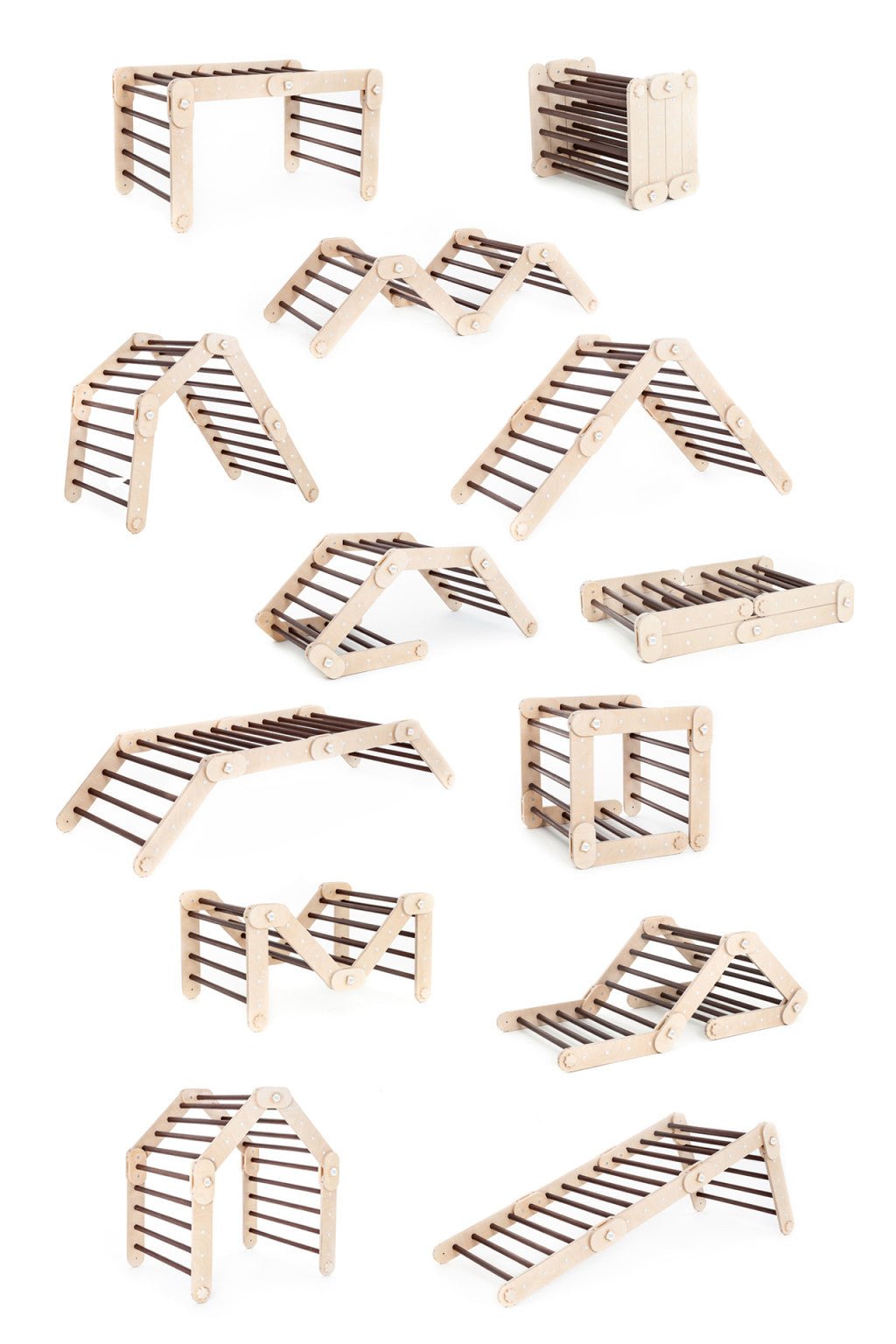
Transformer Kletterdreieck FULL MOON | DARKWOOD | 30 Formen | 98 cm
€340,00
Unit price perTransformer Kletterdreieck FULL MOON | DARKWOOD | 30 Formen | 98 cm
€340,00
Unit price perKletterdreieck FULL MOON – faltbares Kletterdreieck in Darkwood-Optik
Das FULL MOON in der edlen Farbe Darkwood vereint modernes Design mit funktionaler Vielseitigkeit. Dieses wandelbare Kletterdreieck ist ideal für aktive Kleinkinder und bietet unzählige Spielideen auf kleinstem Raum. Perfekt für stilvolle Spielzimmer, Montessori-Umgebungen oder für Eltern, die Wert auf Ästhetik und Entwicklung legen.
Technische Daten:
• Größe aufgebaut: 98 × 67,5 cm
• Farbe: Darkwood (dunkles Holzfinish)
• Gewicht: 16 kg
• Paketmaße: 74 × 49 × 20 cm
• Altersempfehlung: ab 1 Jahr
• Belastbarkeit: bis 50 kg
• Material: Hochwertiges baltisches Birkensperrholz, lackiert mit kindersicherer, wasserbasierter Farbe
Lieferumfang:
• 1 × FULL MOON Kletterdreieck in Darkwood
• Montagematerial & Aufbauanleitung
Minimalistisch & vielseitig einsetzbar
Das FULL MOON Kletterdreieck lässt sich in über 30 Positionen aufstellen – ganz ohne Werkzeug. Kinder können es als Brücke, Tunnel, Haus oder Tor nutzen und dadurch Bewegungsfreude, Gleichgewichtssinn und Kreativität stärken. Ideal für Montessori-inspirierte Spielumgebungen und förderndes Lernen durch Bewegung.
Kompakt, klappbar & durchdacht
Dank der cleveren Falttechnik lässt sich das FULL MOON platzsparend verstauen – ideal für kleine Wohnungen, minimalistische Kinderzimmer oder flexible Spielbereiche. Mit wenigen Handgriffen ist es einsatzbereit oder wieder weggeräumt.
Erweiterbar mit durchdachtem Zubehör
Mit optionalen Elementen wie einer Rutsche, Kletterrampe, Wippbogen oder einer Wandhalterung lässt sich das FULL MOON jederzeit zum individuellen Indoor-Spielplatz erweitern. So wächst das Abenteuer mit deinem Kind mit.
Pflege & Verwendung:
• Für den Innenbereich geeignet, sollte nicht im Freien aufbewahrt werden
• Reinigung mit leicht feuchtem Tuch (ohne aggressive Reinigungsmittel)
• Holz vor Feuchtigkeit und direkter Sonne schützen
Sicherheit: Für ein sicheres Spielvergnügen empfehlen wir, dass Kinder jederzeit von einem Erwachsenen begleitet werden. Unsere Produkte sind sorgfältig getestet – dennoch bitten wir um dein Verständnis, dass wir keine Verantwortung für etwaige Unfälle übernehmen können.
Geprüfte Qualität – mit Liebe handgefertigt in der EU
Das Kletterdreieck FULL MOON wird in Lettland von erfahrenen Handwerkern gefertigt und erfüllt die EU-Richtlinie 2009/48/EG für Spielzeugsicherheit. Es ist CE- und TÜV-zertifiziert, stabil, langlebig und kindgerecht gestaltet – für jahrelangen Spielspaß.
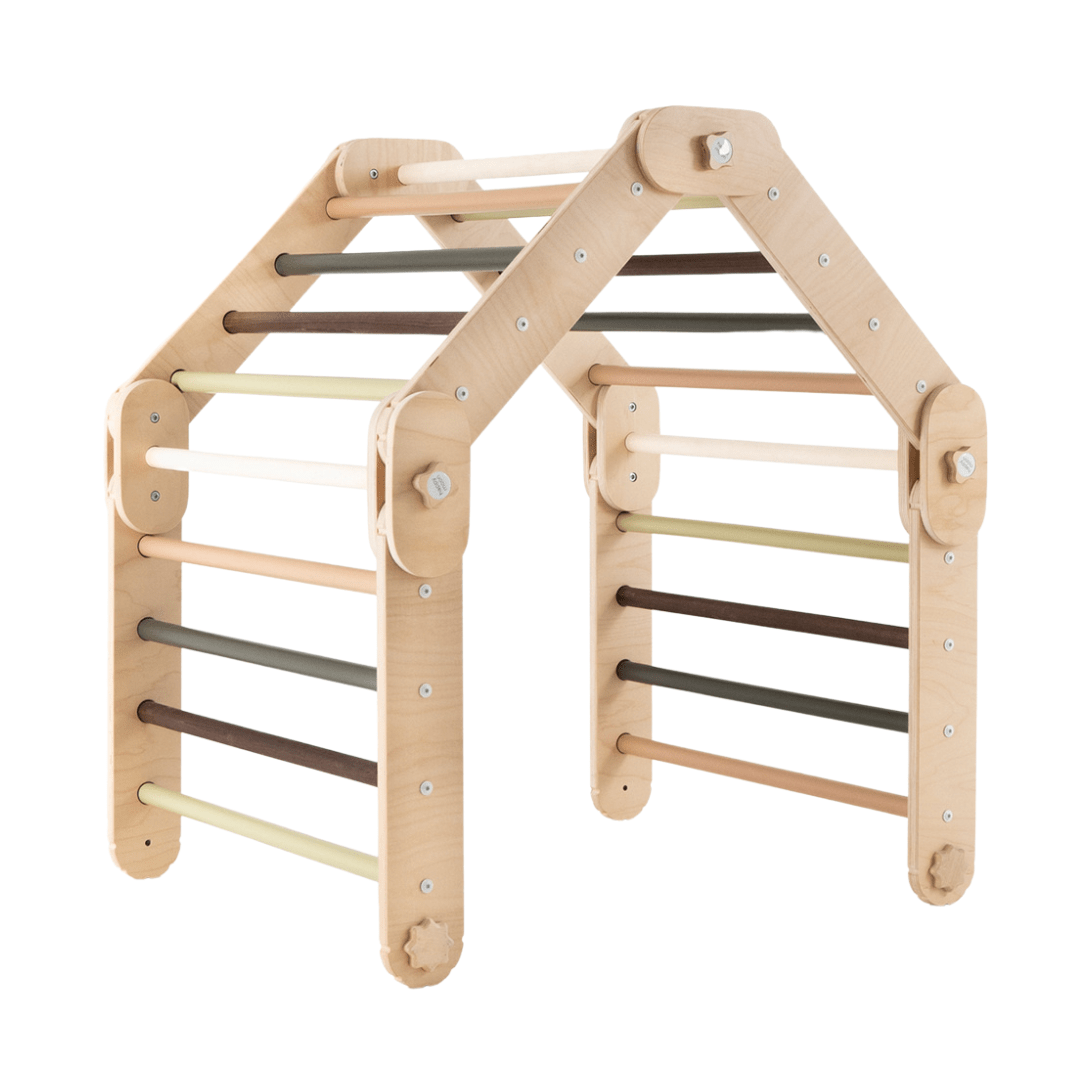
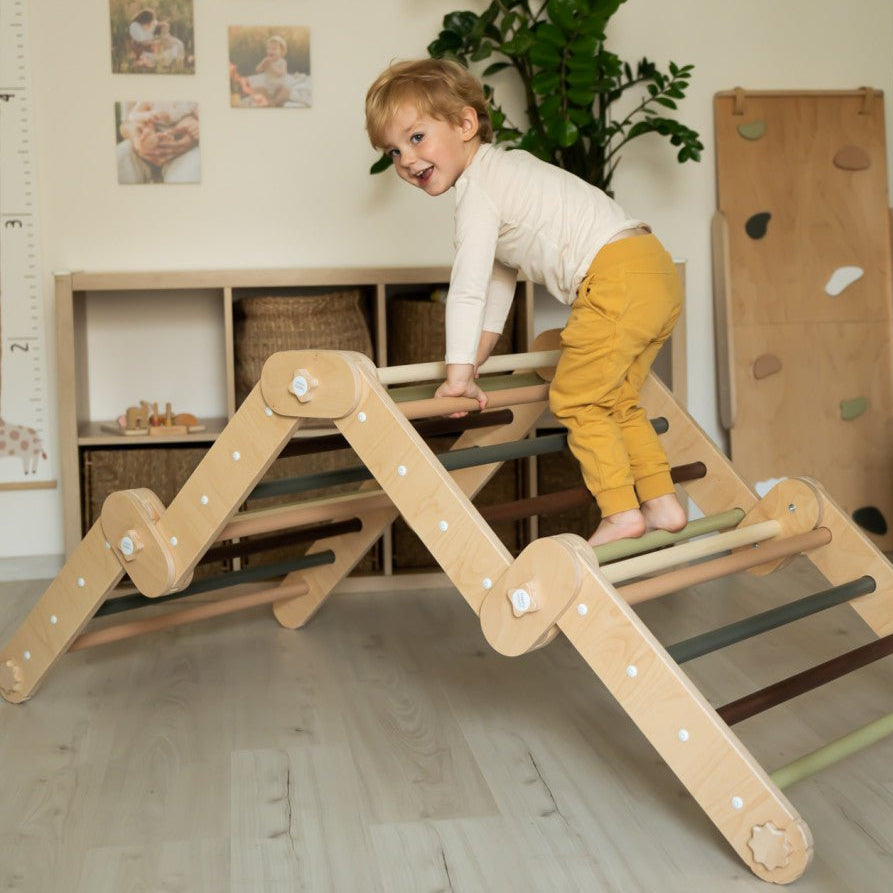
Transformer Kletterdreieck FULL MOON | GRÜN | 30 Formen | 98 cm
€340,00
Unit price perTransformer Kletterdreieck FULL MOON | GRÜN | 30 Formen | 98 cm
€340,00
Unit price perKletterdreieck FULL MOON –GRÜN - wandelbar, faltbar & geprüft
Das vielseitige Kletterdreieck in modernen Grün-Wald Tönen, bringt Bewegung, Kreativität und Selbstständigkeit ins Kinderzimmer. Das faltbare Kletterdreieck ist platzsparend, wandelbar und TÜV-zertifiziert – perfekt für kleine Abenteurer und große Ideen.
Technische Daten:
• Maße aufgebaut: 98 × 67,5 cm
• Farbe: Grün
• Gewicht: 16 kg
• Paketmaße: 74 × 49 × 20 cm
• Altersempfehlung: ab 1 Jahr
• Belastbarkeit: bis 50 kg
• Material: Hochwertiges baltisches Birkensperrholz, lackiert mit kindersicherer Farbe auf Wasserbasis
Lieferumfang:
• 1 × FULL MOON Kletterdreieck in Grün
• Montagematerial & Aufbauanleitung
Spielspaß mit über 30 Möglichkeiten
Das FULL MOON Kletterdreieck lässt sich ohne Werkzeug in mehr als 30 verschiedene Positionen bringen – vom Tipi über das Tunnelhaus bis zum Tor. So entstehen immer wieder neue Spielwelten, angepasst an Alter und Fantasie deines Kindes.
Platzsparend & flexibel
Durch das klappbare Design lässt sich das Dreieck schnell zusammenfalten und platzsparend verstauen – ideal für kleine Räume und für Eltern, die flexibel bleiben möchten.
Wächst mit deinem Kind
Ob als Einzelelement oder kombiniert mit Zubehör wie einer Rutsche, einer Wandhalterung oder dem 3-in-1-Wippbogen. Das FULL MOON Kletterdreieck lässt sich jederzeit modular erweitern und wird so zum langfristigen Spielbegleiter.
Montagehinweis:
Der Artikel wird unmontiert geliefert. Dies schützt vor Transportschäden und senkt die Versandkosten. Der Aufbau sollte ausschließlich von Erwachsenen durchgeführt werden. Kinder dürfen gerne helfen.
Pflege & Haltbarkeit
• Für den Innenbereich, sollte nicht im Freien aufbewahrt werden
• Reinigung mit trockenem oder leicht feuchtem Tuch
• Keine aggressiven Reinigungsmittel verwenden
Sicherheit: Für ein sicheres Spielvergnügen empfehlen wir, dass Kinder jederzeit von einem Erwachsenen begleitet werden. Unsere Produkte sind sorgfältig getestet – dennoch bitten wir um dein Verständnis, dass wir keine Verantwortung für etwaige Unfälle übernehmen können.
Zertifizierte Qualität – gefertigt in der EU
Das FULL MOON Kletterdreieck erfüllt die EU-Spielzeugrichtlinie (2009/48/EG), ist CE- und TÜV-zertifiziert und wird in sorgfältiger Handarbeit in Lettland (EU) hergestellt. Qualität, die du siehst und spürst.
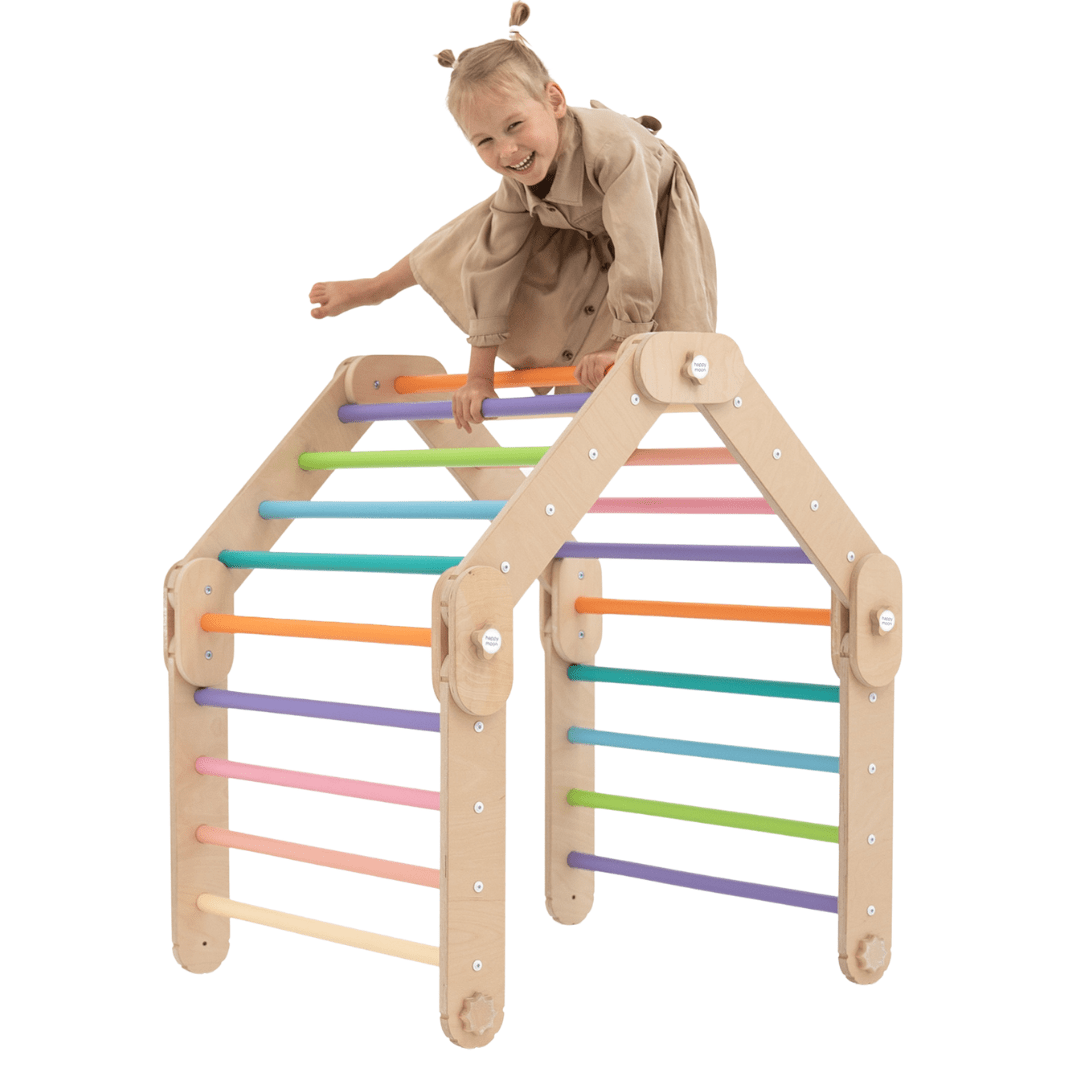
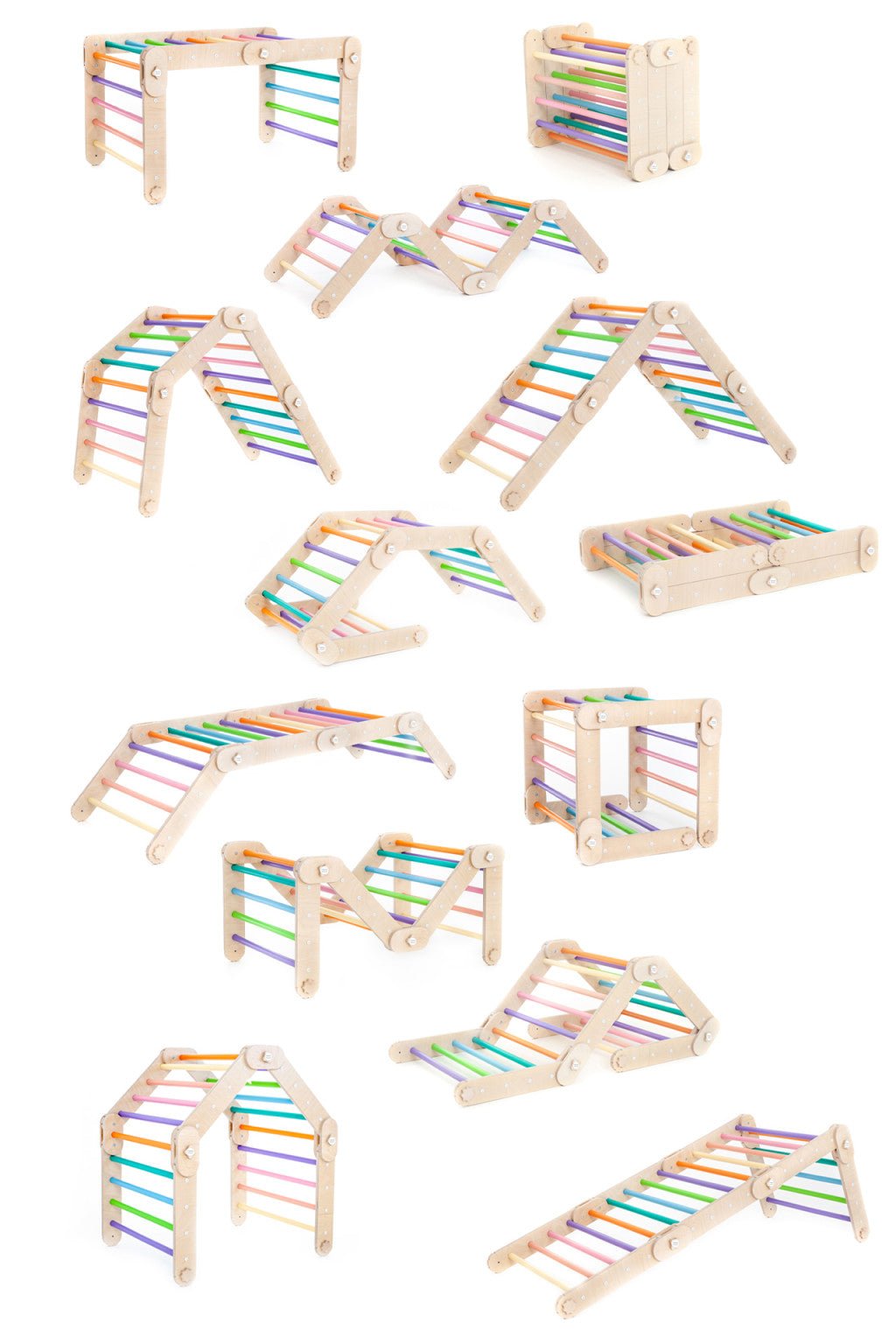
Transformer Kletterdreieck FULL MOON | BUNT | 30 Formen | 98 cm
€340,00
Unit price perTransformer Kletterdreieck FULL MOON | BUNT | 30 Formen | 98 cm
€340,00
Unit price perwandelbares & faltbares Kletterdreieck FULL MOON – bunt, beweglich & geprüft
Das farbenfrohe & wandelbare FULL MOON Kletterdreieck bringt Leben ins Kinderzimmer und fördert spielerisch die Entwicklung deines Kindes. Jede Farbe steht für eine neue Idee, eine neue Bewegung, ein neues Abenteuer. Ideal für kreative Köpfe mit viel Bewegungsdrang – und wenig Platz. Mit TüV.
Technische Daten:
• Maße aufgebaut: 98 × 67,5 cm
• Farbe: Bunt
• Gewicht: 16 kg
• Paketmaße: 74 × 49 × 20 cm
• Altersempfehlung: ab 1 Jahr
• Belastbarkeit: bis 50 kg
• Material: Hochwertiges baltisches Birkensperrholz, lackiert mit kinderfreundlicher, wasserbasierter Farbe
Lieferumfang:
• 1 × FULL MOON Kletterdreieck in Bunt
• Montagematerial & Aufbauanleitung
Ein Spielgerät voller Möglichkeiten
Ob als Brücke, Höhle, Zelt oder Tor – das FULL MOON kann ganz ohne Werkzeug in über 30 Positionen gebracht werden. Die bunten Farben regen dabei nicht nur die Fantasie an, sondern machen das Spielgerät zu einem echten Hingucker.
Platzsparend & praktisch
Das Kletterdreieck lässt sich mit wenigen Handgriffen zusammenfalten und platzsparend verstauen – perfekt für kleinere Räume oder Wohnungen.
Wächst mit & bleibt spannend
Das FULL MOON lässt sich mit passendem Zubehör individuell erweitern. Ob mit Rutsche, Wippbogen oder Wandhalterung – du bestimmst, wie das Kletterabenteuer weitergeht.
Montagehinweis:
Das Produkt wird unmontiert geliefert, um Transportschäden zu vermeiden. Der Aufbau sollte ausschließlich durch Erwachsene erfolgen und ihre Kinder helfen lassen :-)
Pflege & Haltbarkeit
• Für den Innenbereich geeignet, sollte nicht im Freien aufbewahrt werden
• Reinigung mit trockenem oder leicht feuchtem Tuch
• Keine aggressiven Reinigungsmittel verwenden
Sicherheit: Für ein sicheres Spielvergnügen empfehlen wir, dass Kinder jederzeit von einem Erwachsenen begleitet werden. Unsere Produkte sind sorgfältig getestet – dennoch bitten wir um dein Verständnis, dass wir keine Verantwortung für etwaige Unfälle übernehmen können.
Zertifizierte Qualität aus Europa
Produziert in liebevoller Handarbeit in Lettland (EU), erfüllt das FULL MOON alle geltenden EU-Sicherheitsstandards (Richtlinie 2009/48/EG), ist CE- und TÜV-zertifiziert und überzeugt durch Langlebigkeit, Stabilität und kindgerechtes Design.
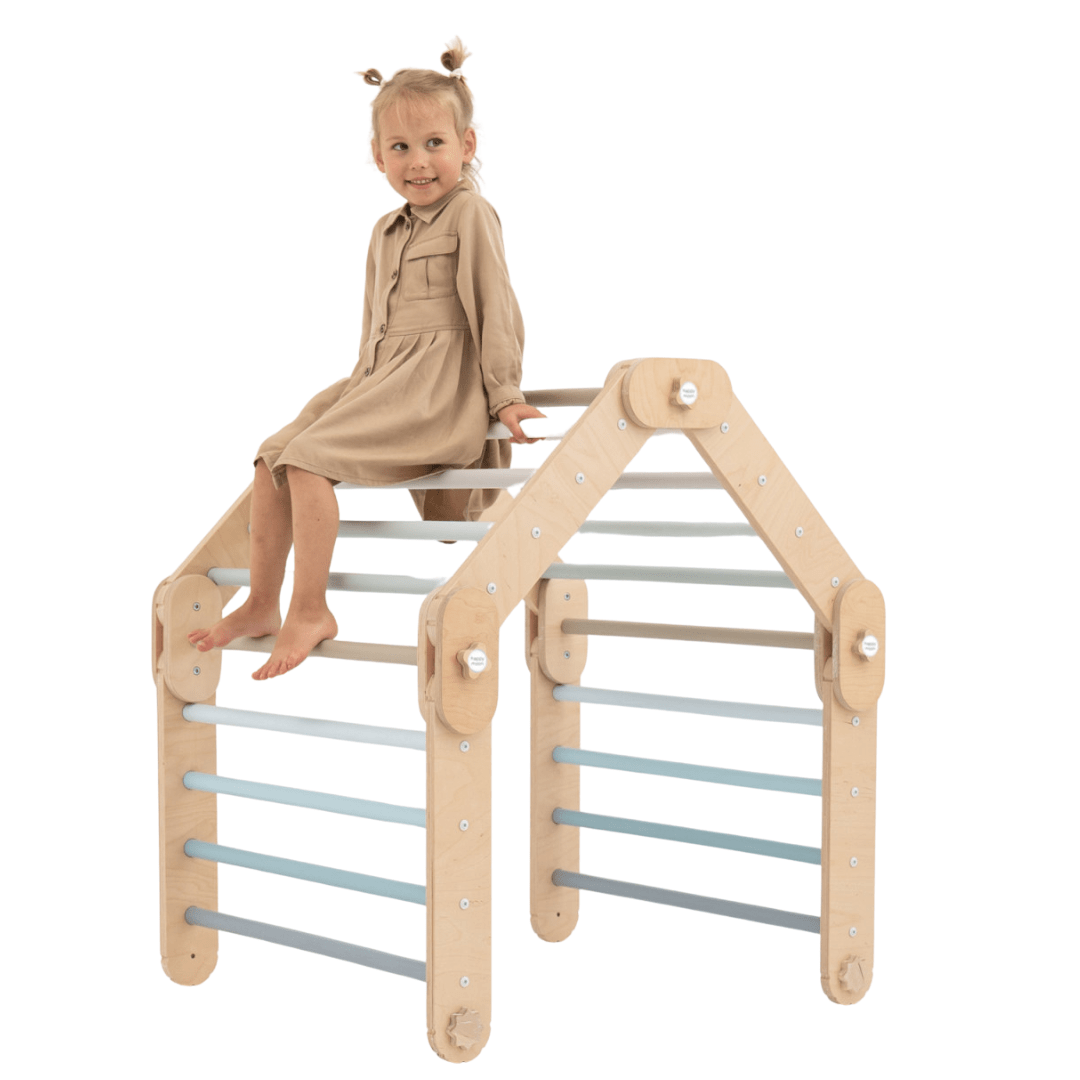
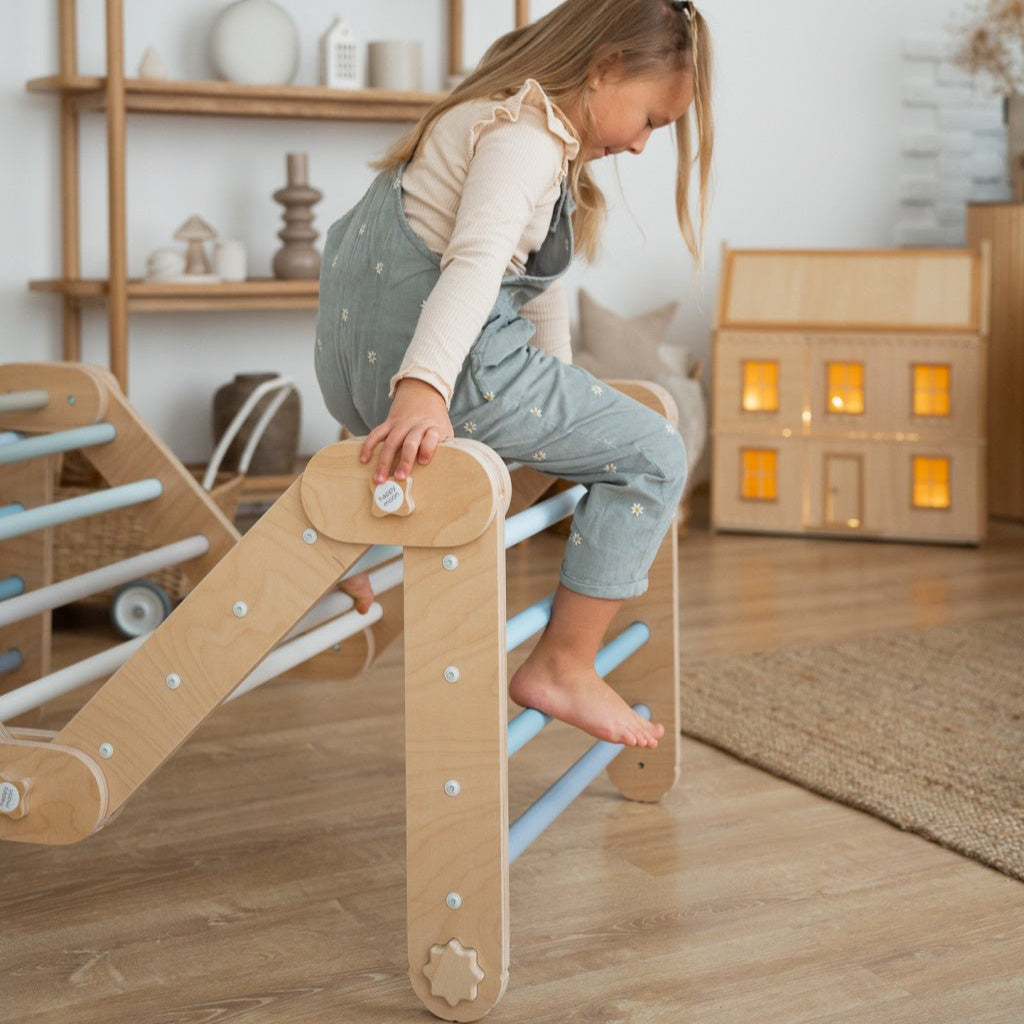
Transformer Kletterdreieck FULL MOON | BLAU | 30 Formen | 98 cm
€340,00
Unit price perTransformer Kletterdreieck FULL MOON | BLAU | 30 Formen | 98 cm
€340,00
Unit price perKletterdreieck FULL MOON – wandelbar, faltbar & geprüft in Blau
Mit seinem frischen Blauton lädt das FULL MOON Kletterdreieck kleine Entdecker zum Klettern, Bauen und Träumen ein. Es kombiniert minimalistisches Design mit maximalem Spielwert – und passt perfekt in jedes Kinderzimmer.
Technische Daten:
• Maße aufgebaut: 98 × 67,5 cm
• Farbe: Blau
• Gewicht: 16 kg
• Paketmaße: 74 × 49 × 20 cm
• Altersempfehlung: ab 1 Jahr
• Belastbarkeit: bis 50 kg
• Material: Hochwertiges baltisches Birkensperrholz, lackiert mit kindersicherer, wasserbasierter Farbe
Lieferumfang:
• 1 × FULL MOON Kletterdreieck in Blau
• Montagematerial & Aufbauanleitung
Mehr als nur ein Dreieck
Das FULL MOON Kletterdreieck lässt sich kinderleicht in über 30 verschiedene Positionen verwandeln – ganz ohne Werkzeug. Ob als Häuschen, Tunnel oder Tor: So entstehen immer neue Abenteuer und Spielwelten.
Clever & platzsparend
Ideal für kleinere Räume: Das FULL MOON lässt sich mit wenigen Handgriffen zusammenklappen und platzsparend verstauen – perfekt, wenn das Kinderzimmer kurzzeitig anders genutzt werden soll.
Modular & langlebig
Du kannst das Kletterdreieck jederzeit erweitern – z. B. mit einer passenden Rutsche, einer Wandhalterung oder dem 3-in-1-Wippbogen. So bleibt das Spielgerät über Jahre hinweg spannend.
Montagehinweis:
Das Produkt wird zum Selbstaufbau geliefert so vermeiden wir Transportschäden und hohe Versandkosten. Der Aufbau sollte ausschließlich durch Erwachsene erfolgen, aber auch gerne gemeinsam mit euren Kids.
Pflege & Haltbarkeit
• Nur für den Innenbereich geeignet, keiner Witterung aussetzen
• Zur Reinigung ein trockenes oder leicht feuchtes Tuch verwenden
• Keine aggressiven Reinigungsmittel oder Chemikalien verwenden
Sicherheit: Für ein sicheres Spielvergnügen empfehlen wir, dass Kinder jederzeit von einem Erwachsenen begleitet werden. Unsere Produkte sind sorgfältig getestet – dennoch bitten wir um dein Verständnis, dass wir keine Verantwortung für etwaige Unfälle übernehmen können.
Geprüfte Qualität aus Europa
Das FULL MOON erfüllt die EU-Spielzeugrichtlinie (2009/48/EG), ist CE- und TÜV-zertifiziert und wird in liebevoller Handarbeit in Lettland (EU) hergestellt – mit viel Sorgfalt, Erfahrung und Verantwortung.
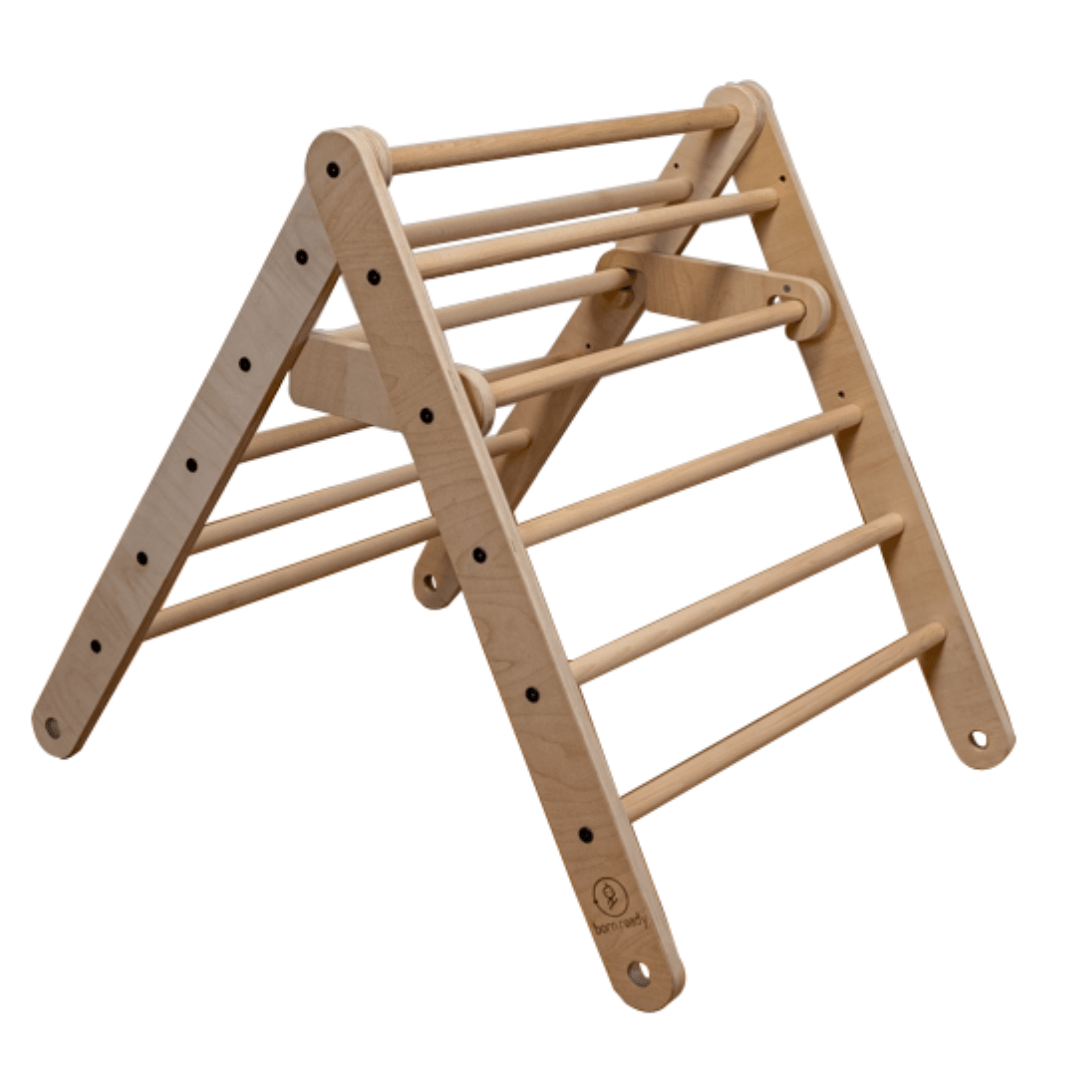
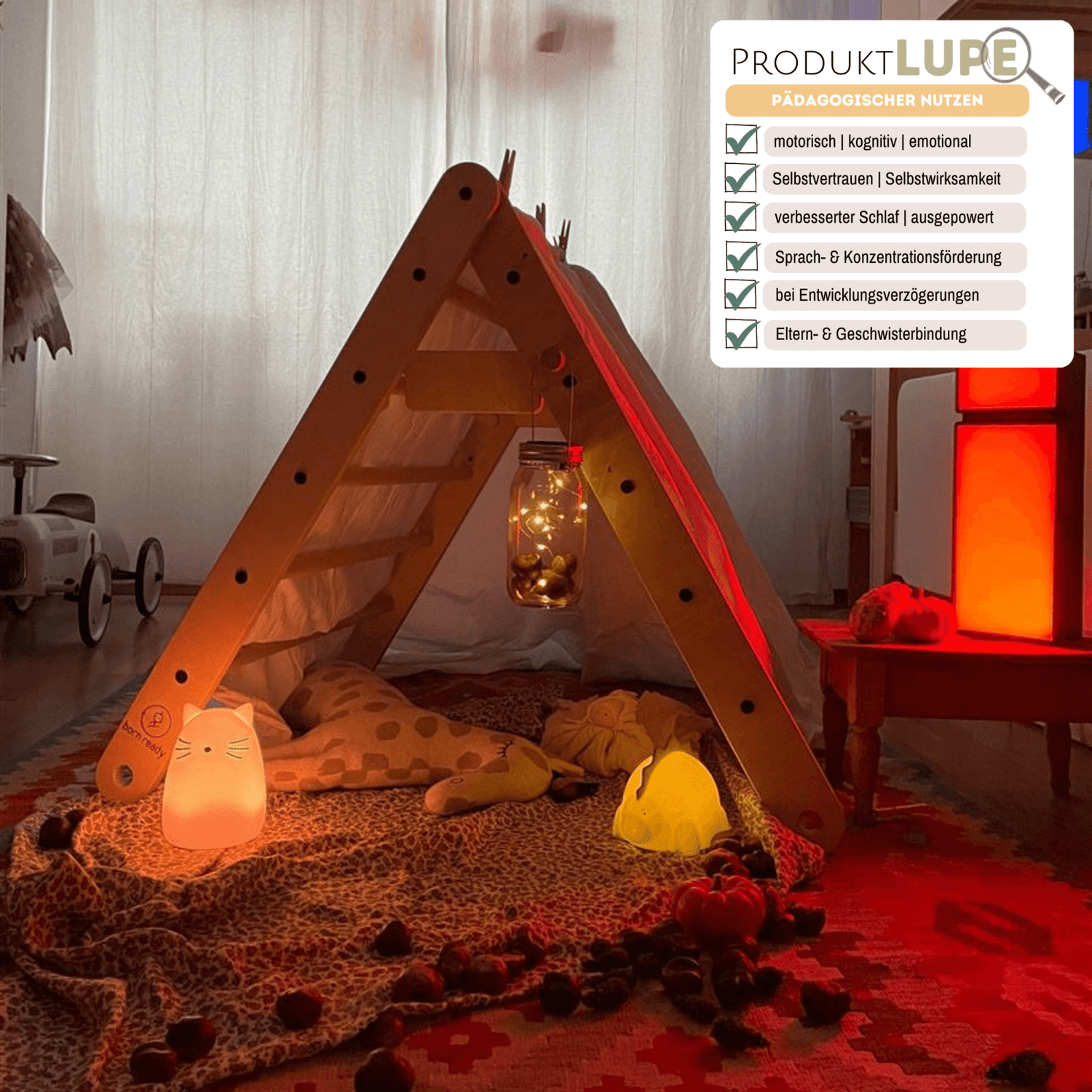
Climber - 2x height-adjustable, foldable climbing triangle from Born Ready Toys
€250,00
Unit price perClimber - 2x height-adjustable, foldable climbing triangle from Born Ready Toys
€250,00
Unit price perClimbing is intuitive for children, the ìClimberî is a piece of play equipment that helps your child to master climbing. The climbing triangle encourages your child to grasp and climb and thus builds up their self-confidence. With a blanket and a torch, you can of course also build a great cave. The climbing triangle is foldable and has been tested for safety by DEKRA.
Features:
- 2 adjustable heights
- Including safety pin
- Rung dimensions that meet modern safety standards.
- Developed in Switzerland, manufactured, tested and inspected in Germany
- Can be stored to save space
- Raw & untreated _x000D_
- FSC birch plywood and birch round bars
- Sustainable & durable production _x000D_
- Independent safety test
- CE markDimensions
- Length, width, height: 72 x 58 cm x 81 cm
- Weight: ò7kg
- Climber is tested up to 100kg
Whether scaling the top of a magical mountain to discover new worlds or competing joyfully with friends , this climbing frame inspires creative and imaginative play. It helps your children hone their sense of balance, strength, coordination and gross motor skills as they climb the sturdy hardwood struts and find and master the many different paths across the dome.
Personalise the play with additional accessories, such as a play mat and/or a tent for endless imaginative fun, both of which you can find in our shop to match the indoor climbing frame. Customise the climbing frame with optional extensions, such as a slide, which we also have in our range (the honeycomb connector is then required to attach the slide). The frame is also compatible with climbing cubes and triangles, making it an adventurous indoor climbing frame that will get both children's and parents' hearts racing!
The indoor climbing frame is made from sustainable, high-quality birch hardwood and is ideal for toddlers and children aged 1 to 6 years.
Double play tower for little climbers
Little Tarzans ages 1 to 4 will be thrilled to conquer this rock-solid climber. The double play tower measures 120 cm long, approximately 100 cm high, and is approximately 95 cm wide when extended.
Special features:
- Foldable frame: The 6-legged frame is foldable, easy to move and space-saving to store.
- Robust material: Made of 45 mm thick wood and reinforced rungs with 25 mm thickness for extra durability.
- Water-based paints: The numerous layers of professional paint are suitable for both indoor and outdoor use.
- Handmade quality: Each set is made and tested by me to ensure the highest quality.
When ordering, please leave a telephone number for shipping.
Note: Do not leave your children unattended while playing on the set.
The Magic Mountain: One climbing arch – a thousand adventures!
Meet the MAGIC MOUNTAIN – our absolute transformation miracle! It consists of three clever modules: the Climbing arch (called MAGIC HILL) as the heart and two flexible "climbing legs" . The ingenious thing: You can put the legs on and take them off according to your child's mood and stage of development, or different angles – child’s play and without any tools!
Why the MAGIC MOUNTAIN is so special:
-
Grows with & challenges: Adapts to every age! Through the adjustable heights and shapes you always create new Difficulty levels and provides plenty of variety in the children's room.
-
Promotes development through play: Climbing, balancing, discovering – this trains motor skills , coordination and balance. At the same time, it strengthens the concentration and that Self-confidence your child ("I did it!").
-
Clever & practical: Do you need some space? Individual parts can be stored easily and in a space-saving manner.
Imagination without limits!
What is the MAGIC MOUNTAIN today? A high climbing peak, a wobbly pirate ship, a mysterious suspension bridge, a cozy rocking chair, a small playhouse, or even a shop? (Hint: Our slide board works perfectly as a roof or counter!) Let your children decide and let their creativity run wild!
You have the choice:
-
Builds both legs for maximum stability and height.
-
Uses only one leg for an asymmetric challenge.
-
Uses the Bow and legs even separated from each other – for a small, individual climbing course.
Quality you can trust – Handmade for you:
-
100% handmade in Germany: Made with care and love in our factory.
-
Sustainable & Natural: Made from the finest Beech and birch wood out of FSC-certified cultivation (EU) . (Origin: Bavarian Forest, Finland, Baltic States).
-
Child-friendly & safe: All edges are carefully rounded , the surfaces smooth ground and consciously untreated – completely without harmful varnishes or oils. Pure wood feel!
-
Tested safety: The wood is harmless & toy-safe (EN 13986:2004+A1:2015). The entire play equipment is compliant with the European Toy Safety Directive (EN 71-1:2014 + A1:2018, EN 71-2:2020, EN 71-8:2018).
The facts at a glance:
-
Load capacity: until 50 kg
-
Dimensions (variable): Height approx. 28-72 cm | Length approx. 90-143 cm | Width approx. 56 cm
Completes the set: Optionally, choose a suitable Accessory (like our slide board) or a comfortable cuddly pillow Of course, you can also order everything individually later.
The MAGIC MOUNTAIN – a play device that grows with your child, inspires them, and offers endless possibilities for active and imaginative play!
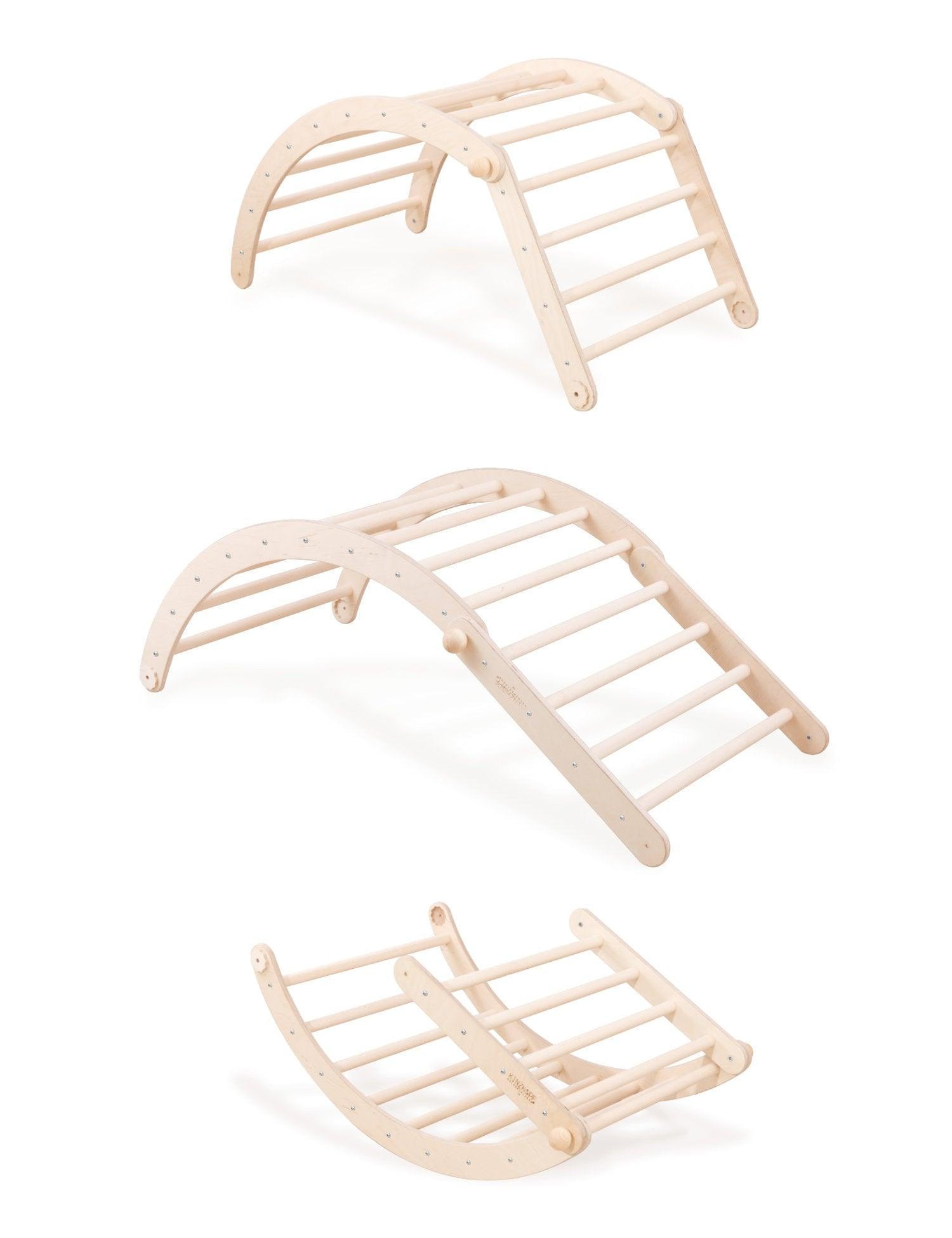
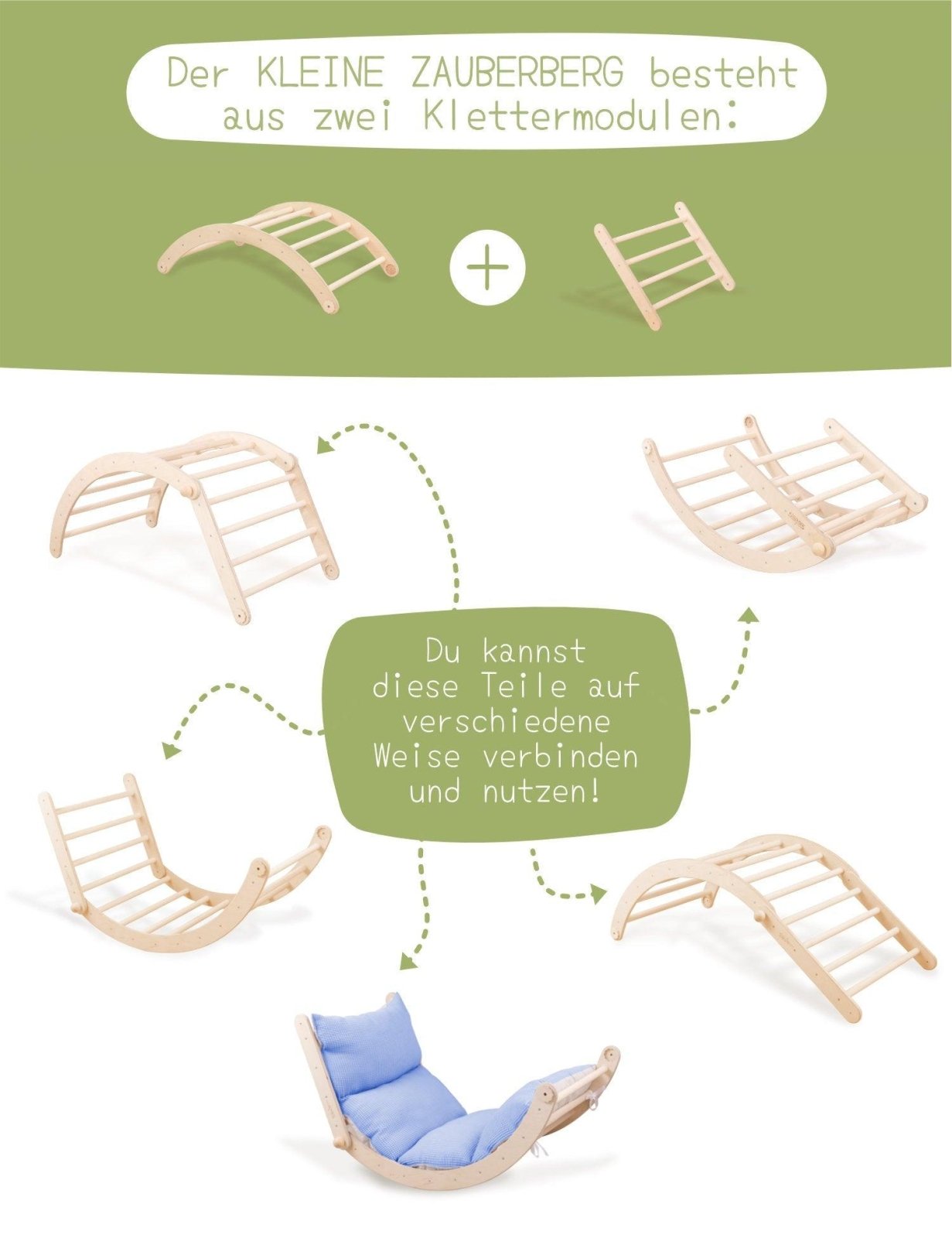
LITTLE MAGIC MOUNTAIN | adjustable climbing arch | seesaw | rocking chair
From €179,00
Unit price perLITTLE MAGIC MOUNTAIN | adjustable climbing arch | seesaw | rocking chair
From €179,00
Unit price perThe LITTLE MAGIC MOUNTAIN - Versatile climbing and play equipment
| Company/Manufacturer | Handmade in Germany |
|---|---|
| material | Beech, birch; rounded, smooth sanded, untreated; wood from FSC-certified forests |
| Age recommendation | Suitable for every child & age |
| Resilience | 50 kg |
| Mass | Height: 28 - 51 cm, Length: 90 - 122 cm, Width: 56 cm |
| Certificates | EN 71-1:2014 + A1:2018, EN 71-2:2020, EN 71-8:2018 |
| Special features | Flat climbing arch and an adjustable climbing leg; convertible into a rocking chair or seesaw |
| Additional options | Accessory, cuddly pillow (sold separately) |
The LITTLE MAGIC MOUNTAIN is a multifaceted play structure that not only invites climbing but can also be used as a rocking chair or seesaw. This not only promotes your child's motor skills, but also their concentration and self-confidence. With its modular design, the Little Magic Mountain can easily be expanded with an additional climbing leg, transforming it into the Large Magic Mountain and thus adapting to your child's growing needs.
The high-quality materials and handcrafted production in Germany ensure a robust and safe construction made from sustainably sourced wood and not exposed to harmful varnishes or oils. Ideal for creative and active playtime in any home.
Kletta's tip
Reward your child's curiosity and creativity with the LITTLE MAGIC MOUNTAIN, a play structure that grows and adapts to changing play preferences. Complemented with accessories like a cuddly pillow, it offers even more comfort and fun. An environmentally conscious product that supports both your child's development and sustainability.


Kletterdreieck LOOPO KAKADU 2in1 | 2 Module | wandelbar zur Sprossenwand 130 cm + Wandhalterung | 46cm | 180 kg belastbar | modulares System
€279,00
Unit price perKletterdreieck LOOPO KAKADU 2in1 | 2 Module | wandelbar zur Sprossenwand 130 cm + Wandhalterung | 46cm | 180 kg belastbar | modulares System
€279,00
Unit price perKletterdreieck LOOPO KAKADU 2in1 | mit 2 Modulen wandelbar von Kletterdreieck bis Sprossenwand inkl. Wandhalterung
Clever, kompakt, kombinierbar – das perfekte Bewegungsmodul für die Kleinsten.
Das Kletterdreieck EMMA TWO 2in1 ist eine besonders platzsparende und vielseitige Lösung für Kinder ab dem Laufalter. Ob als klassisches Pikler-Dreieck am Boden oder als Trainingsgerät an der Wand – mit nur wenigen Handgriffen verwandelt sich das Kletterelement je nach Bedarf. Perfekt geeignet für kleine Räume, spontane Spielideen und erste motorische Herausforderungen.
Ein starker Einstieg
Durch die beiden Aufbauvarianten werden Bewegung, Gleichgewicht und Muskelkraft gezielt gefördert – und das schon ab dem ersten Lebensjahr. Die einfache Handhabung macht es Eltern besonders leicht, das Set flexibel im Alltag einzusetzen.
Robust & wandlungsfähig
Gefertigt aus massiver Buche und hochwertigem Buchensperrholz überzeugt das LOOPO KAKADU 2in1 durch hohe Stabilität bei gleichzeitig geringem Gewicht. Mit einer Belastbarkeit von bis zu 180 kg eignet es sich auch zum gemeinsamen Spielen oder unterstützten Klettern durch Erwachsene.
Fördert wichtige Fähigkeiten
• Verbesserung von Gleichgewicht, Koordination und Beweglichkeit
• Stärkung der Muskulatur und Erwerb motorischer Fähigkeiten
• Förderung von Selbstvertrauen und kognitiver Entwicklung
• Sorgt für Ausgeglichenheit, guten Schlaf und beste Laune
Produktdetails
| Altersempfehlung | 1–4 Jahre |
| Belastbarkeit | bis 180 kg |
| Material | Massivbuche & Buchensperrholz |
| Oberfläche | geölt, glatt geschliffen |
| Gesamtgewicht | ca. 9,43 kg |
| Anzahl möglicher Konstruktionen | 2 |
| kleine Sprossenwand | H 130 cm × B 30 cm × T 60 cm |
| Pikler-Dreieck | H 46 cm × B 97 cm × T 60 cm |
Packungsinhalt
- 2 × LOOPO-Paneele
- 2 × Verbindungsstück E1
- 2 × Verbindungsstück Winkel T2
- 3 × Wandhalterung W1
- 2 × Verbindungsstück Füße F1
- 8 × Schrauben (35 mm)
- 2 × Holzstangen mit Splinten
- 1 × Schlüssel
Aufbau & Anleitung
- 📄 Aufbauanleitung: im Lieferumfang enthalten (PDF)
Geprüft & zertifiziert
- EN 71-1:2014+A1:2018 – Sicherheit mechanischer Eigenschaften
- EN 71-8:2018 – Sicherheit aktiver Bewegungsspielzeuge
Pflege & Verwendung
Die Oberfläche ist mit einem natürlichen Öl behandelt und dadurch geschützt. Zur Reinigung reicht ein trockenes oder leicht feuchtes Tuch – bitte keine scharfen Reinigungsmittel oder scheuernden Schwämme verwenden. Um die Langlebigkeit zu erhalten, kann die geölte Oberfläche bei Bedarf mit geeignetem Pflegeöl aufgefrischt werden.
Nachhaltigkeit, Sicherheit & Qualität – dafür steht die EMMA-Serie
Alle EMMA-Produkte werden aus massivem, geöltem Buchenholz gefertigt, das aus FSC-zertifizierter, europäischer Waldwirtschaft stammt. Produziert wird im Böhmischen Paradies in Tschechien – unter fairen Bedingungen, mit kurzen Lieferwegen und umweltfreundlicher Verpackung. Die Spielgeräte erfüllen die europäische Spielzeugnorm EN 71 und sind bis zu 200 kg belastbar – geprüft und geeignet für Kinder und Erwachsene. Zusätzlich bietet EMMA 2 Jahre Garantie – mit kostenfreier Verlängerung auf 5 Jahre bei Registrierung. Nachhaltig. Sicher. Fair.
LOOPO KAKADU 2in1 – minimal im Aufbau, maximal in der Wirkung.
Der Einstieg in bewegungsfreudiges Spielen – sicher, flexibel und kindgerecht.
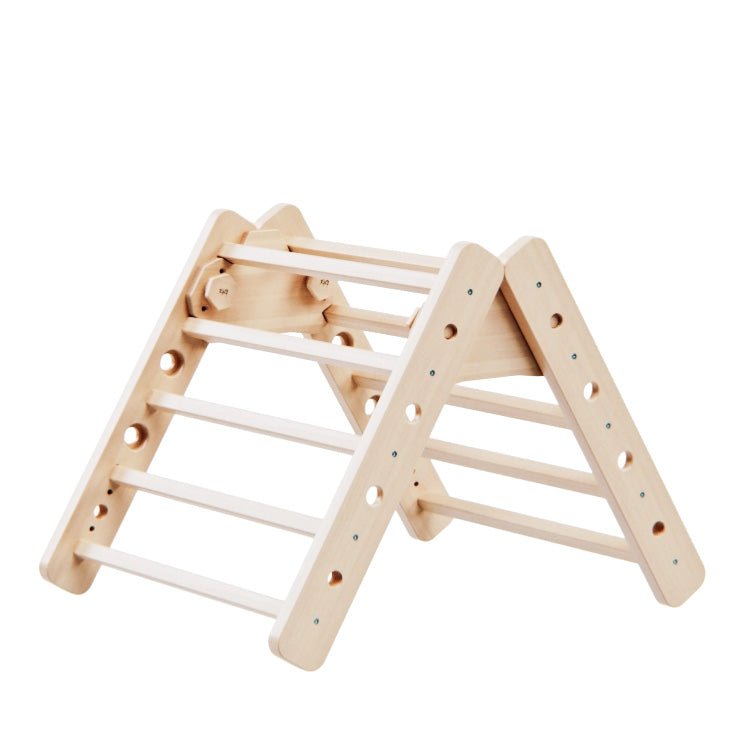
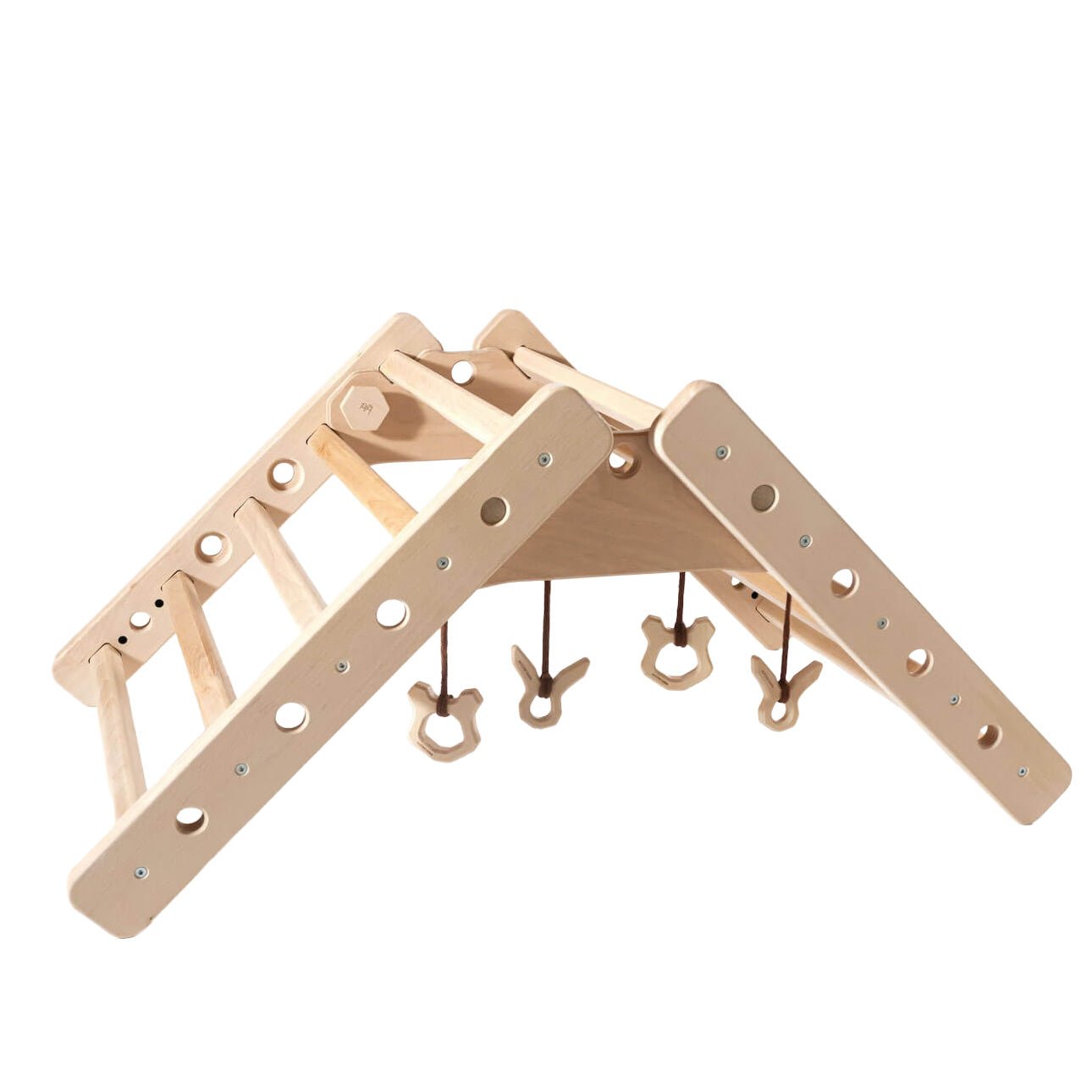
höhenverstellbares Kletterdreieck LOOPO FROGGIE | 54cm | 180 kg belastbar | modulares System
€179,00
Unit price perhöhenverstellbares Kletterdreieck LOOPO FROGGIE | 54cm | 180 kg belastbar | modulares System
€179,00
Unit price perKletterdreieck LOOPO FROGGIE | 180 kg belastbar | ab 10 Monate | 2 Aufbauvarianten
Für die Kleinsten gemacht – ein mitwachsendes Kletterdreieck für die allerersten Entwicklungsschritte.
Das Kletterdreieck LOOPO Froggie ist ein liebevoll gestaltetes Pikler-Dreieck für Babys und Kleinkinder ab Geburt. Es unterstützt sanft die motorische Entwicklung, begleitet erste Greifversuche und wird später zum sicheren Kletterdreieck. Beißringe, Spielzeug oder Mobiles lassen sich an den stabilen Stangen aufhängen, während die Konstruktion mitwächst – von einfacher bis herausfordernder Neigung. Dieses modulare EMMA System kann unendlich erweitert werden.
Sanft starten, sicher wachsen
Das Froggie-Set beinhaltet zwei Verbindungstypen (T1 und T2), die unterschiedliche Höhen und Neigungswinkel ermöglichen. So passt sich das Kletterdreieck ideal dem Entwicklungsstand deines Kindes an – ob zum Üben der ersten Schritte oder zum Klettern und Balancieren.
Besonders leicht & kompakt
Mit einem Gesamtgewicht von nur rund 7,9 kg und gefertigt aus massiver Buche ist das Set stabil, aber dennoch mobil – ideal für kleinere Räume oder Eltern, die ein sicheres und natürliches Spielgerät für die frühkindliche Entwicklung suchen.
Produktdetails auf einen Blick
| Altersempfehlung | 0–2 Jahre |
| Belastbarkeit | bis 180 kg |
| Material | Massivholz Buche |
| Oberfläche | glatt geschliffen, geölt |
| Gesamtgewicht | ca. 7,91 kg |
| Aufbaumöglichkeiten | 2 |
| Maße (T1-Kupplung) | H 54 cm × B 72 cm × T 60 cm |
| Maße (T2-Kupplung) | H 46 cm × B 97 cm × T 60 cm |
Packungsinhalt
- 2 × LOOPO-Paneele
- 2 × Verbindungsstück Winkel T1
- 2 × Verbindungsstück Winkel T2
- 4 × Schrauben (35 mm)
- 2 × Stabilitäts-Metallstifte
- 1 × Schlüssel
Aufbau & Anleitung
- 📄 Aufbauanleitung: im Lieferumfang enthalten (PDF)
Geprüft & zertifiziert
- EN 71-1:2014+A1:2018 – Mechanische Sicherheit
- EN 71-8:2018 – Sicherheit von Bewegungsspielzeug
Pflege & Verwendung
Die Oberfläche ist mit einem natürlichen Öl behandelt und dadurch geschützt. Zur Reinigung reicht ein trockenes oder leicht feuchtes Tuch – bitte keine scharfen Reinigungsmittel oder scheuernden Schwämme verwenden. Um die Langlebigkeit zu erhalten, kann die geölte Oberfläche bei Bedarf mit geeignetem Pflegeöl aufgefrischt werden.
Nachhaltigkeit, Sicherheit & Qualität – dafür steht die EMMA-Serie
Alle ANTONIE EMMA -Produkte werden aus massivem, geöltem Buchenholz gefertigt, das aus FSC-zertifizierter, europäischer Waldwirtschaft stammt. Produziert wird im Böhmischen Paradies in Tschechien – unter fairen Bedingungen, mit kurzen Lieferwegen und umweltfreundlicher Verpackung. Die Spielgeräte erfüllen die europäische Spielzeugnorm EN 71 und sind bis zu 200 kg belastbar – geprüft und geeignet für Kinder und Erwachsene. Zusätzlich bietet EMMA 2 Jahre Garantie – mit kostenfreier Verlängerung auf 5 Jahre bei Registrierung. Nachhaltig. Sicher. Fair.
Kletterdreieck LOOPO Froggie – sanft beginnen, sicher wachsen.
Das durchdachte Kletterdreieck für einen natürlichen und sicheren Start in die Welt der Bewegung.


Dreieck- & Sprossenwandschaukel LOOPO SWING 2in1 | 180 kg belastbar | 2 Geräte in einem | Kletterdreieck & Schaukel für die Wand | wandelbar
€239,00
Unit price perDreieck- & Sprossenwandschaukel LOOPO SWING 2in1 | 180 kg belastbar | 2 Geräte in einem | Kletterdreieck & Schaukel für die Wand | wandelbar
€239,00
Unit price perKletterdreieck & Sprossenwand mit Schaukel LOOPO SWING | 180 kg belastbar | 2-in-1 Spielgerät ab 1 Jahr
Klettern oder Schaukeln? Warum nicht beides – mit einem Set, das sich ganz einfach verwandeln lässt.
Die Sprossenwandschaukel LOOPO ist ein kompaktes, wandelbares Spielgerät für Kinder ab 1 Jahr. Es bietet zwei Möglichkeiten in einem cleveren System: Als freistehendes Pikler-Dreieck eignet es sich ideal für erste Kletterversuche – befestigt an der Wand, wird es zur Schaukelstation im Montessori-Stil. Einfache Handhabung, sicheres Design und jede Menge Bewegung machen dieses Set zu einem beliebten Spielbegleiter für drinnen und draußen. Dieses modulare EMMA System kann unendlich erweitert werden.
Ideal für kleine Räume & große Spielfreude
Dank seiner kompakten Größe und der vielseitigen Nutzbarkeit passt das Set auch in kleinere Wohnbereiche. Es lädt Kinder dazu ein, sich aktiv zu bewegen, ihre Motorik zu fördern und gleichzeitig spielerisch Selbstvertrauen aufzubauen.
Produktdetails auf einen Blick
| Altersempfehlung | 1–6 Jahre |
| Belastbarkeit | bis 180 kg |
| Material | Massivholz Buche |
| Oberfläche | glatt geschliffen & geölt |
| Gesamtgewicht | ca. 9,1 kg |
| Aufbaumöglichkeiten | 2 |
| Pikler-Dreieck | H 46 cm × B 97 cm × T 60 cm |
| Schaukelstation (wandmontiert) | H 200 cm × B 60 cm × T 70 cm |
Packungsinhalt
- 2 × LOOPO-Paneele
- 2 × Verbindungsstück Winkel T2
- 2 × Wandhalterung W1
- 4 × Schrauben (35 mm)
- 2 × Stabilitäts-Metallstifte
- 1 × Holzstange mit Splinten
- 1 × Schaukel „Classic“
- 1 × Schlüssel
Aufbau & Anleitung
- 📄 Aufbauanleitung: im Lieferumfang enthalten (PDF)
Geprüft & zertifiziert
- EN 71-1:2014+A1:2018 – Sicherheit mechanischer Eigenschaften
- EN 71-8:2018 – Sicherheit aktiver Bewegungsspielzeuge
Pflege & Verwendung
Die Oberfläche ist mit einem natürlichen Öl behandelt und dadurch geschützt. Zur Reinigung reicht ein trockenes oder leicht feuchtes Tuch – bitte keine scharfen Reinigungsmittel oder scheuernden Schwämme verwenden. Um die Langlebigkeit zu erhalten, kann die geölte Oberfläche bei Bedarf mit geeignetem Pflegeöl aufgefrischt werden.
Nachhaltigkeit, Sicherheit & Qualität – dafür steht die LOOPO-Serie
Alle EMMA-Produkte werden aus massivem, geöltem Buchenholz gefertigt, das aus FSC-zertifizierter, europäischer Waldwirtschaft stammt. Produziert wird im Böhmischen Paradies in Tschechien – unter fairen Bedingungen, mit kurzen Lieferwegen und umweltfreundlicher Verpackung. Die Spielgeräte erfüllen die europäische Spielzeugnorm EN 71 und sind bis zu 200 kg belastbar – geprüft und geeignet für Kinder und Erwachsene. Zusätzlich bietet EMMA 2 Jahre Garantie – mit kostenfreier Verlängerung auf 5 Jahre bei Registrierung. Nachhaltig. Sicher. Fair.
Kletterdreieck - & Sprossenwandschaukel LOOPO SWING – für Kletterfreude mit Schwung.
Ideal für alle, die Bewegung lieben – platzsparend, vielseitig und kindgerecht.
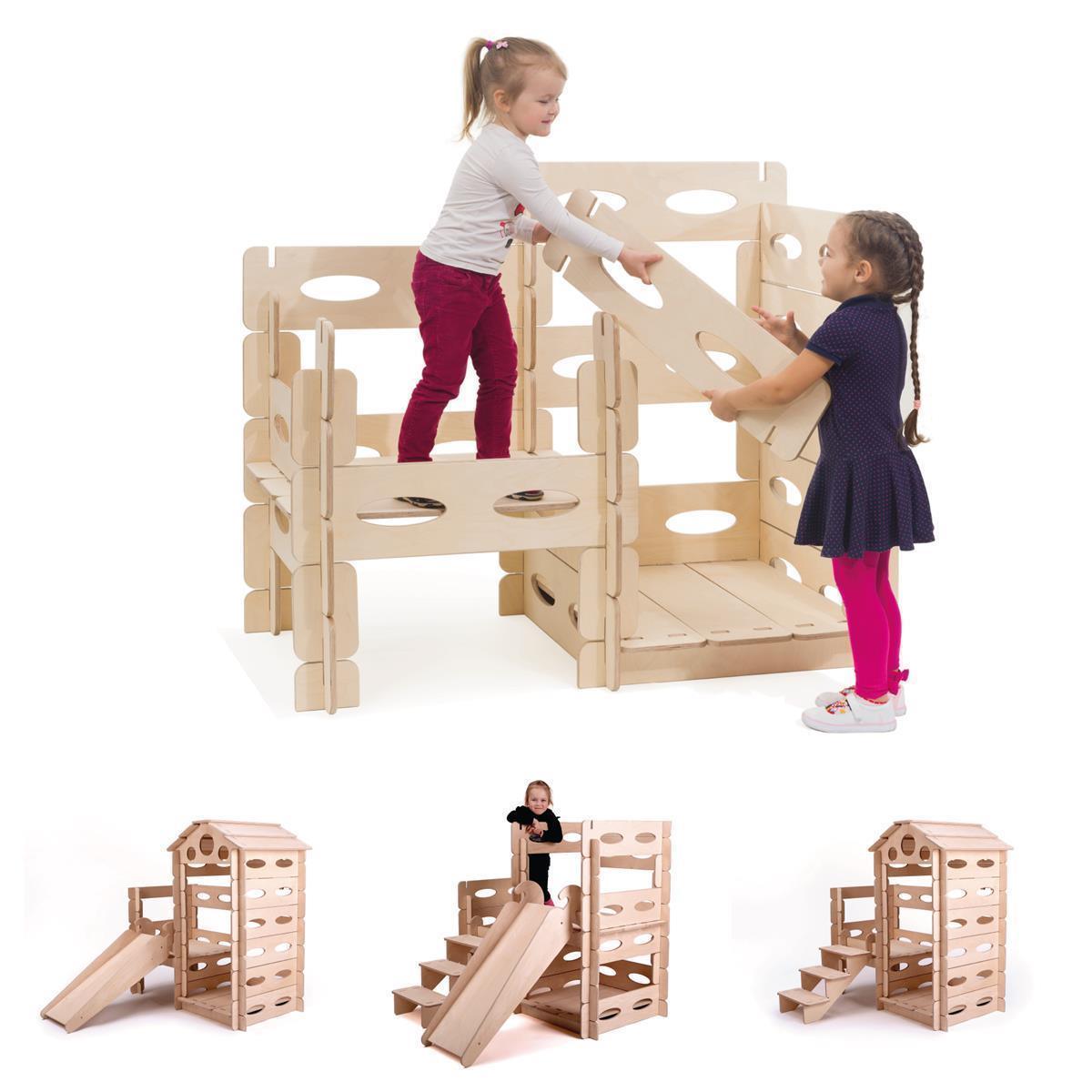
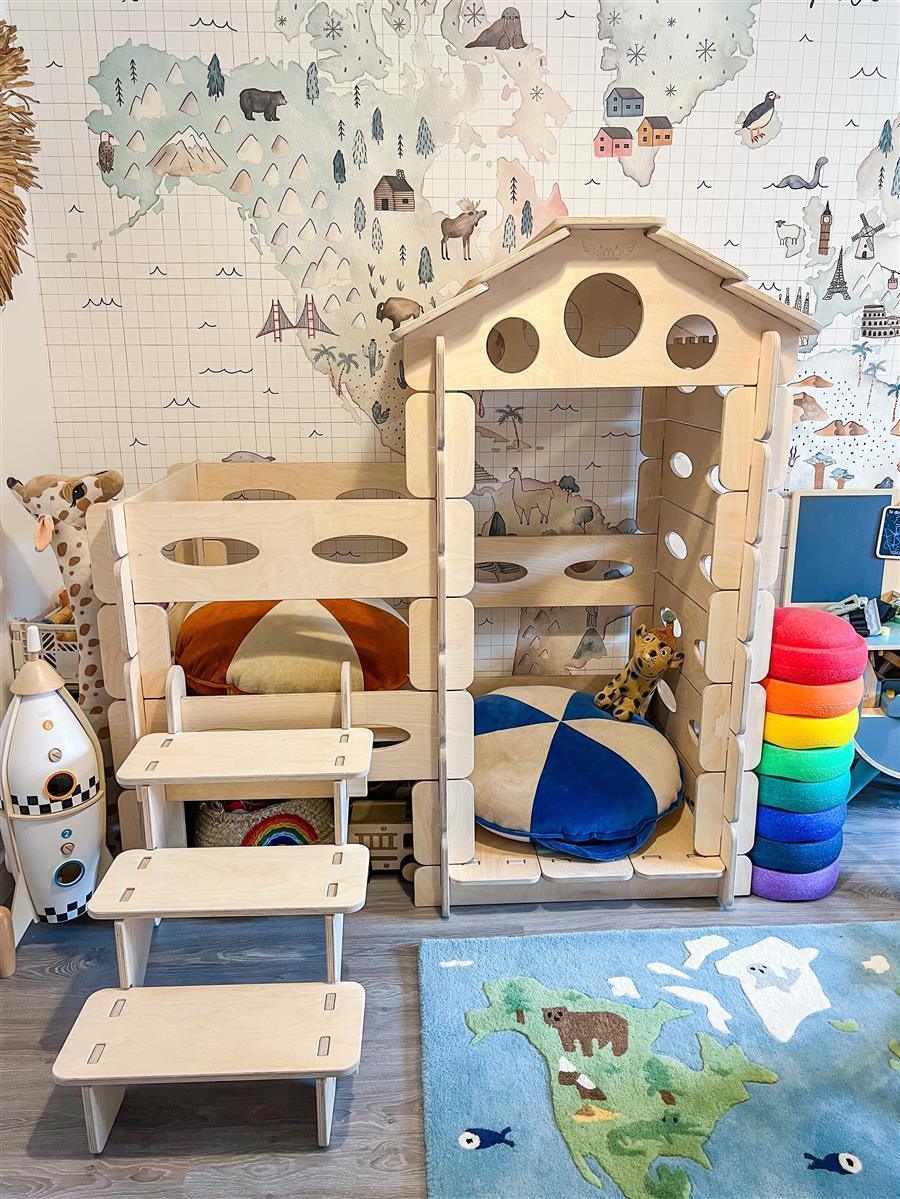
Montessori playhouse: creative learning for children aged 1 to 12
From €89,00
Unit price perMontessori playhouse: creative learning for children aged 1 to 12
From €89,00
Unit price perThe playhouse is adaptable and grows with the child from 1 to 12 years of age and remains interesting from ever new age-specific aspects. The set is complemented by additional stairs and a slide, which provide even more fun. Each piece in the Montessori playhouse set is a story waiting to be unfolded; it's not just about building, but about self-expression, innovation and growth.
Suchst du nach einem Geschenk, das garantiert Freude bereitet und genau den Geschmack des Beschenkten trifft? Mit einem Kletterling Geschenkgutschein liegst du immer richtig! Unser Gutschein ist die ideale Lösung für alle, die Kindern eine Freude machen möchten, aber nicht sicher sind, welches unserer hochwertigen Spielgeräte am besten passt.
Warum ein Kletterling Gutschein das perfekte Geschenk ist
Ein Geschenkgutschein von Kletterling bietet weit mehr als nur einen Warenwert – er schenkt Wahlfreiheit, Vorfreude und die Möglichkeit, genau das Spielgerät auszusuchen, das perfekt zu den individuellen Bedürfnissen und Wünschen des Kindes passt.
Die Vorteile unseres Gutscheins auf einen Blick:
• Flexible Auswahl – Der Beschenkte kann selbst entscheiden, ob er einen Kletterbogen, eine Matschküche, ein Kindersofa oder eines unserer vielen anderen Qualitätsprodukte wählt
• Langfristige Gültigkeit – Unser Gutschein ist 3 Jahre lang einlösbar, sodass genügend Zeit für die perfekte Auswahl bleibt
• Persönliches Geschenk – Du kannst den Gutscheinbetrag frei wählen und so an dein Budget anpassen
• Einfache Einlösung – Problemlose Verwendung in unserem Online-Shop mit nur wenigen Klicks
• Sofort verfügbar – Nach dem Kauf erhältst du den Gutschein direkt per E-Mail zum Ausdrucken oder Weiterleiten
So funktioniert der Kletterling Gutschein
Unser Gutscheinsystem ist bewusst einfach und unkompliziert gestaltet:
1. Wunschbetrag auswählen – Entscheide dich für einen Betrag deiner Wahl
2. Bestellen und bezahlen – Wie bei einem normalen Produkt in unserem Shop
3. Gutschein erhalten – Der Gutscheincode wird dir per E-Mail zugesendet
4. Verschenken – Drucke den Gutschein aus oder leite die E-Mail weiter
5. Einlösen – Der Beschenkte kann den Gutscheincode bei seiner Bestellung im Warenkorb einlösen
Der perfekte Anlass für einen Kletterling Gutschein
Ob Geburtstag, Weihnachten, Ostern oder einfach als Überraschung zwischendurch – ein Kletterling Gutschein passt zu jedem Anlass:
• Zum Geburtstag – Schenke die Freiheit, sich einen langgehegten Wunsch zu erfüllen
• Zu Weihnachten – Der ideale Gutschein für unter den Weihnachtsbaum
• Zur Geburt oder Taufe – Ein wertvolles Geschenk, das für die Zukunft des Kindes investiert wird
• Für Großeltern, Paten und Freunde – Die perfekte Lösung, wenn man nicht täglich mit dem Kind zusammen ist und seine aktuellen Wünsche kennt
Qualität und Werte schenken
Mit einem Kletterling Gutschein verschenkst du nicht nur einen Warenwert, sondern auch unsere Philosophie: hochwertige, entwicklungsfördernde Spielgeräte, die mit Liebe zum Detail gefertigt werden und Kindern helfen, ihre motorischen und kognitiven Fähigkeiten spielerisch zu entfalten.
Unser Sortiment umfasst ausschließlich Produkte, die wir sorgfältig ausgewählt haben und hinter denen wir als Familienunternehmen mit unserem Namen stehen. Von nachhaltigen Materialien bis hin zu durchdachten Designs – wer bei Kletterling einkauft, entscheidet sich für Qualität und Nachhaltigkeit.
Tipp: Wenn du unsicher bist, welchen Betrag du wählen sollst, orientiere dich an unseren Produktkategorien. Für Kletterdreiecke oder kleinere Spielgeräte eignen sich Beträge ab 100 €, für größere Klettergerüste oder Komplettsets kannst du auch höhere Summen verschenken.
Fazit: Ein Kletterling Geschenkgutschein ist die perfekte Lösung für alle, die Kindern eine Freude machen und gleichzeitig die Entscheidungsfreiheit schenken möchten. Mit seiner langen Gültigkeit, der einfachen Einlösung und der Möglichkeit, aus unserem gesamten hochwertigen Sortiment zu wählen, wird dieser Gutschein garantiert für leuchtende Kinderaugen sorgen.
Schenke Spielfreude, Entwicklungsförderung und Qualität – mit einem Kletterling Geschenkgutschein!
Showing 20/23
Entdecke Kletterling
Kletterdreiecke sind nur der Start in eine bewegte Kindheit. Du findest bei uns Kindermöbel, Sprossenwände, Sitzsäcke, Sofas, Schaukeln und noch so viel mehr.

Familienunternehmen mit Herz
Persönlich beraten
Wir beraten dich persönlich in Entwicklungs- und Einrichtungsfragen bequem zu Hause. Schon ein paar leicht aufzustellende und sichere Bewegungselemente, wie ein Kletterdreieck, verändern die Auslastung deines Kindes und damit seine Stimmung zum Positiven. Doch das ist nur der Anfang, mit uns kannst du euer Zuhause in einen Ort verwandeln, in dem dein Kind jederzeit seinem Bedürfnis nach Bewegung und Entspannung nachgehen kann und dann passiert etwas Magisches, wie von Zauberhand zieht Gelassenheit bei euch ein, in deinem Kind und in dir!
Wir sind Isabell, Erik und Kosmo. Gegründet haben wir Kletterling aus der Not heraus: Qualität wird so oft mit Marketing-Blabla vorgetäuscht. Wir wollen so viel Transparenz, wie möglich ist. Aus welchem Material ist mein Kinderspielzeug, woher kommt es und wurden Chemikalien verwendet? Wie steht es um die Sicherheit und wird es wirklich in Europa produziert? In China produziert, in Deutschland zusammengebaut und dann Made in Germany, gibt es bei uns nicht. Alle Produkte stammen von kleinen Herstellern aus Europa, denen wir hier ihre verdiente Plattform bieten. Dabei hapert es meist am Kundendienst in einer fremden Sprache, den wir komplett übernehmen, weil wir es lieben, mit euch im Austausch zu stehen, was heutzutage leider immer seltener wird.
Außerdem kaufst du bei uns mit sicheren Zahlmethoden in Deutschland bei einem deutschen Unternehmen ein, was dir ein gutes Gefühl und Sicherheit bringt, damit du dich voll auf das konzentrieren kannst, weshalb du hier bist: Das richtige Bewegungsspielzeug für dein Kind zu finden.
Danke für dein Vertrauen!
- Isabell & Erik
Kategoriebeschreibung
Climbing triangle: How to playfully promote your child’s development
A climbing triangle is more than just a toy; it's key to developing your child's motor skills. In a world where screen time often dominates, this simple yet ingenious device offers a valuable way to combine movement and play. Through climbing, sliding, and exploration, the climbing triangle not only promotes physical development but also stimulates the imagination.
Choosing the right climbing triangle for your child is important to ensure safety and maximum fun. This article will tell you everything you need to know—from key safety features to tips on finding the perfect model for your home. Get ready to open up a world of adventure and discovery for your child, one that will promote their development in so many ways.
Important facts

- A climbing triangle promotes the motor development as well as the fine and gross motor skills of children from 1 year of age and at the same time supports cognitive skills such as problem solving and creativity.
- It builds self-confidence and independence through overcoming challenges and promotes social interaction and group play.
- The safety of the play equipment is ensured by choosing a stable, durable material such as wood and by considering safety features such as foldable structures or adjustable heights.
- Versatility in use allows children to use the climbing triangle in different ways, both indoors and outdoors, thus supporting different stages of development.
- Climbing is good for physical development as it strengthens muscles, improves coordination and promotes balance and mobility.
- Choosing the right height of the climbing triangle ensures a balance between challenge and safety, with the height being adjustable to the child's age and abilities.
What is the use of a climbing triangle?
A climbing triangle is not just a toy, but a valuable tool for a child's development. It promotes motor skills, coordination, and self-confidence. From approximately 1 year of age, children can actively explore their world with a climbing triangle and develop important physical and cognitive skills.
Motor development
With a climbing triangle, children learn to move and balance. These activities strengthen muscles and improve gross and fine motor skills. A climbing triangle with a slide or additional elements such as ladders or arches, in particular, offers a wide range of movement options.
Self-confidence and independence
Climbing a climbing triangle helps children build self-confidence. They learn to accept and overcome challenges, which is an important part of their emotional development. Furthermore, exploring the climbing triangle independently promotes their independence.
Security and adaptability
When purchasing a climbing triangle, it's important to pay attention to safety features. A foldable design not only offers easy storage but also allows the toy to be adjusted as your child grows. Wooden models are not only durable, but their stability also provides a safe environment for your child.
Versatile
A Montessori climbing triangle's versatility supports your child's various developmental stages—whether indoors or outdoors in the garden. It can be used as a standalone piece of equipment or as part of a larger play system, for example, in combination with slides or other elements like a seesaw .
In short: A climbing triangle is a worthwhile investment in your child's development. It not only supports motor development in the early years, but also promotes self-confidence, independence, and cognitive skills in a playful way.
What does the Pikler Triangle promote?
The Pikler triangle, also known as a climbing triangle, is a versatile toy that offers far more than just entertainment. It plays a key role in your child's motor and cognitive development. Here you'll learn which skills are promoted through regular use of a climbing triangle.
Motor development
A climbing triangle challenges children to explore and expand their limits. While climbing, they improve their gross motor skills by learning to coordinate their movements and maintain balance. At the same time, the muscles of the entire body are strengthened.
Self-confidence and independence
When climbing a climbing triangle, children not only develop physical skills but also build self-confidence. Each successful step strengthens their confidence in their own abilities. This increased self-confidence promotes independence and the desire to take on new challenges.
Problem-solving skills
When using the climbing triangle, children face small challenges and puzzles to solve: How do I get to the next hold? Can I move safely from this position? These questions promote critical thinking and problem-solving skills.
Social interaction
Although a climbing triangle is often used individually, it also provides a platform for social interaction during group play. Children learn important social skills such as sharing, taking turns, and collaborative problem-solving.
Fantasy and role play
Another advantage of the Pikler triangle is its flexibility as a toy for imaginative play. It can be quickly transformed from a simple ladder into a castle or even a jungle. This type of role play is important for cognitive development and promotes creativity.
Overall, the Pikler or Montessori climbing triangle is a wonderful tool for promoting a variety of developmental aspects in children from one year old up to older kindergarten children. With variations like the foldable wooden climbing triangle or a model with a slide, the range can be further expanded and adapted – perfect for indoors and outdoors in the garden – to sustainably support your child's curiosity.
How long do children play with a climbing triangle?
 Are you wondering how long a climbing triangle will remain interesting for your child? The answer depends on several factors, including your child's age when they first encounter the climbing triangle, their individual interests, and the versatility of the toy itself. A climbing triangle offers exciting discoveries and challenges for children from one year old up to kindergarten age. It not only promotes motor development but also creativity through diverse play options.
Are you wondering how long a climbing triangle will remain interesting for your child? The answer depends on several factors, including your child's age when they first encounter the climbing triangle, their individual interests, and the versatility of the toy itself. A climbing triangle offers exciting discoveries and challenges for children from one year old up to kindergarten age. It not only promotes motor development but also creativity through diverse play options.
From one year
From the first year of life, children become interested in the climbing triangle. During this phase, it is primarily used for pulling themselves up and strengthening the leg muscles. A baby climbing triangle is ideal during this phase, as it provides security during the first attempts at standing and walking.
Up to kindergarten age
As children grow older, they discover more climbing and movement options. They climb higher, slide, or incorporate the triangle into their role-playing games. Variations like the Montessori climbing triangle or a wooden climbing triangle with a slide expand these possibilities and maintain interest for several years.
Adaptability is important
A collapsible or adjustable climbing triangle adapts to the child's growing abilities. This flexibility ensures that the play equipment remains attractive over time. Additional elements such as a slide or ladder can also continually open up new play scenarios.
In summary, a high-quality, adaptable model can be actively used from approximately 1 to 6 years of age. Of course, the personal development of each individual child also plays a role. Choosing a versatile model is investing in years of fun and development for your child.
How high should a climbing triangle be?
The correct height of a climbing triangle is crucial for your child's safety and developmental progress. You want to strike a balance between challenge and safety. Here's how high the climbing triangle should ideally be.
For babies and toddlers 1 year and older, particularly low models no higher than 60 cm are suitable. This low height allows the youngest children to develop their motor skills safely while also providing a low fall height.
Children aged 2 to 3 can handle a climbing triangle with a height between 60 cm and 90 cm. This size still promotes motor development and allows children to carefully expand their boundaries.
For children over 3 years old, a climbing triangle can also be larger, typically between 90 cm and 120 cm. Such models offer older children more challenging physical activities and help them develop confidence in their physical abilities.
An adjustable or collapsible climbing triangle offers the flexibility to adjust the height as your child grows and develops. This ensures the play equipment remains an attractive toy for your child over a longer period of time.
Regardless of the height of the climbing triangle, always make sure there's a soft surface underneath to prevent injuries in case of falls. Play mats and cushions are ideal for this. Choosing the right height will help ensure your child can climb safely and enjoys the exercise.
Is climbing good for the body?
 Climbing is not only an exciting activity for children, but also very beneficial for their physical development.
Climbing is not only an exciting activity for children, but also very beneficial for their physical development.
When climbing a climbing triangle, children strengthen their muscles and improve their motor skills. This dynamic form of movement promotes coordination, balance, and agility.
Strengthening the muscles
When climbing on the climbing triangle, various muscle groups work together. Arms, legs, and core are strengthened, leading to an improvement in overall strength. This is especially important during your child's early development.
Improvement of motor skills
Fine and gross motor skills are trained through various gripping and climbing techniques. A climbing triangle with a slide or a Montessori climbing triangle offer additional challenges that further develop these skills.
Promoting the sense of balance
Balancing on ladders or rungs trains your sense of balance. Good balance is the foundation for almost all physical activities in everyday life and for sporting activities and can be further promoted with a balance board for children or a balance beam .
Promotion of psychomotor skills.
Climbing requires patience, concentration, and problem-solving skills. These cognitive skills develop in parallel with physical abilities, thus supporting holistic development.
An adjustable or collapsible climbing triangle adapts to your child's growth, allowing them to benefit from these advantages for years to come. Whether indoors in the nursery or outdoors in the garden, a wooden climbing triangle offers long-lasting fun and sustainably promotes your child's physical and mental development from 1 year old through elementary school age.
Overall, regular climbing on a climbing triangle contributes significantly to healthy development and lays a strong foundation for an active life.
A climbing triangle offers much more than just entertainment for your child. It is an important tool for promoting holistic development. From strengthening muscles to improving cognitive skills, it provides a platform for your child to learn and grow through play. It adapts to your child's growing needs and helps them develop confidence and independence. With a climbing triangle in your home, you give your child the opportunity to develop their motor and social skills in a safe and stimulating environment. Invest in your child's future by encouraging them to climb, explore, and push themselves.
Frequently Asked Questions
What is a climbing triangle?
A climbing triangle, also known as a Pikler triangle, is an educational toy that promotes children's motor and cognitive development. It supports the improvement of gross motor skills, balance, and muscle strength, and contributes to building self-confidence and independence.
Why is the climbing triangle good for child development?
The climbing triangle promotes various aspects of children's physical and mental development. Climbing strengthens muscles, improves motor skills, and promotes coordination and balance. It also trains problem-solving skills and critical thinking, as well as fosters social interaction and creativity.
How does the climbing triangle promote social skills?
The climbing triangle promotes social interactions as children overcome challenges together and use their imagination in play. These interactions foster important social skills such as teamwork, communication skills, and empathy.
What does regular climbing improve for children?
Regular climbing on a climbing triangle improves muscle strength, motor skills, coordination, balance, and flexibility. It also strengthens cognitive abilities by promoting patience, concentration, and problem-solving skills.
Is an adjustable climbing triangle advantageous?
Yes, an adjustable or collapsible climbing triangle is particularly beneficial because it adapts to the child's growth. It offers long-lasting fun and sustainable development from toddlerhood through elementary school age.
How does climbing contribute to an active lifestyle?
Regular climbing on a climbing triangle lays the foundation for an active life. It promotes not only physical development but also self-confidence and independence. It encourages children to maintain active and healthy lifestyles.
Discover more in: Climbing triangle & climbing arch
Top categories: Climbing triangle with slide | Climbing triangle set | Climbing frame | Climbing wall | Slides | Swing
